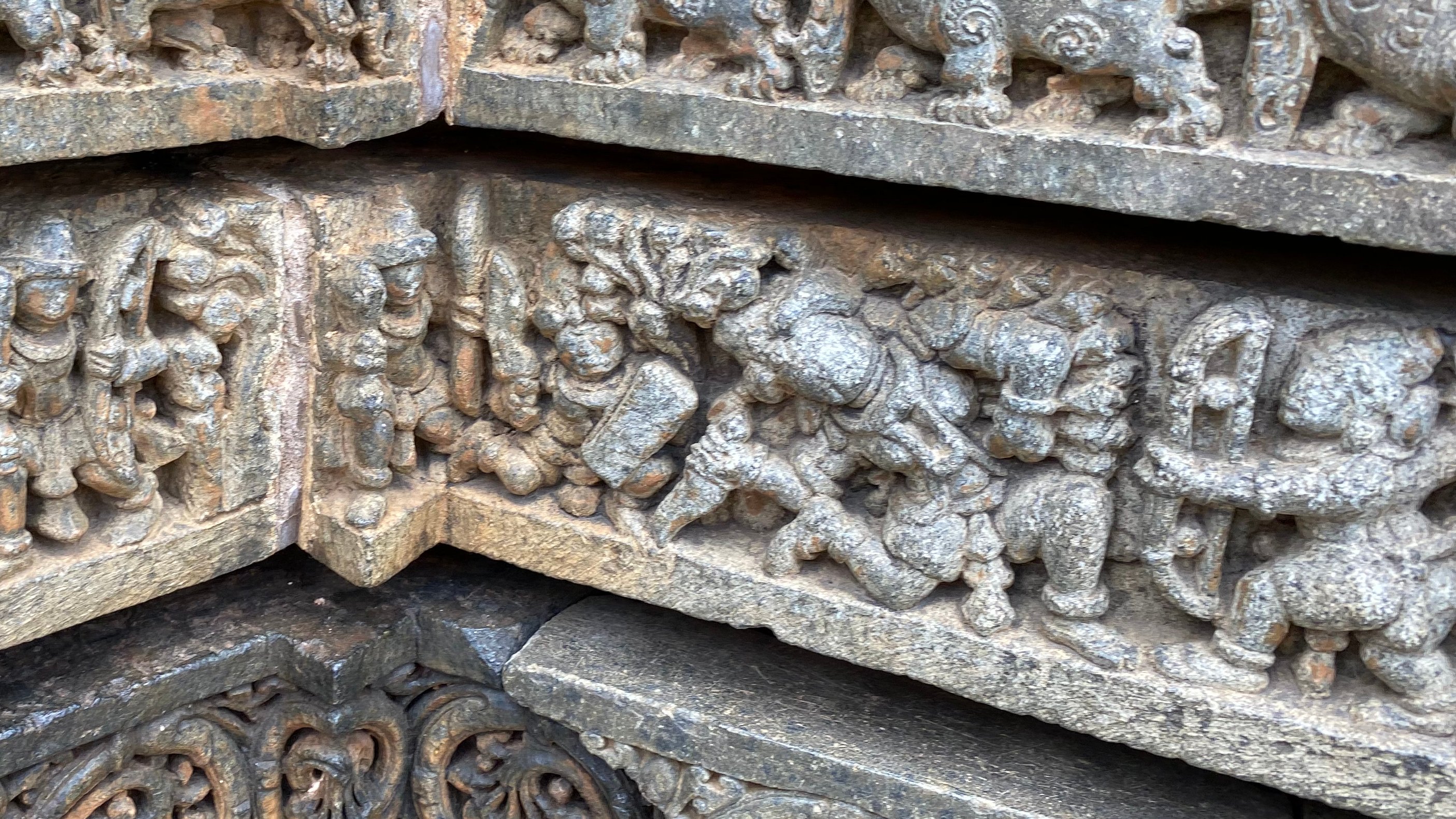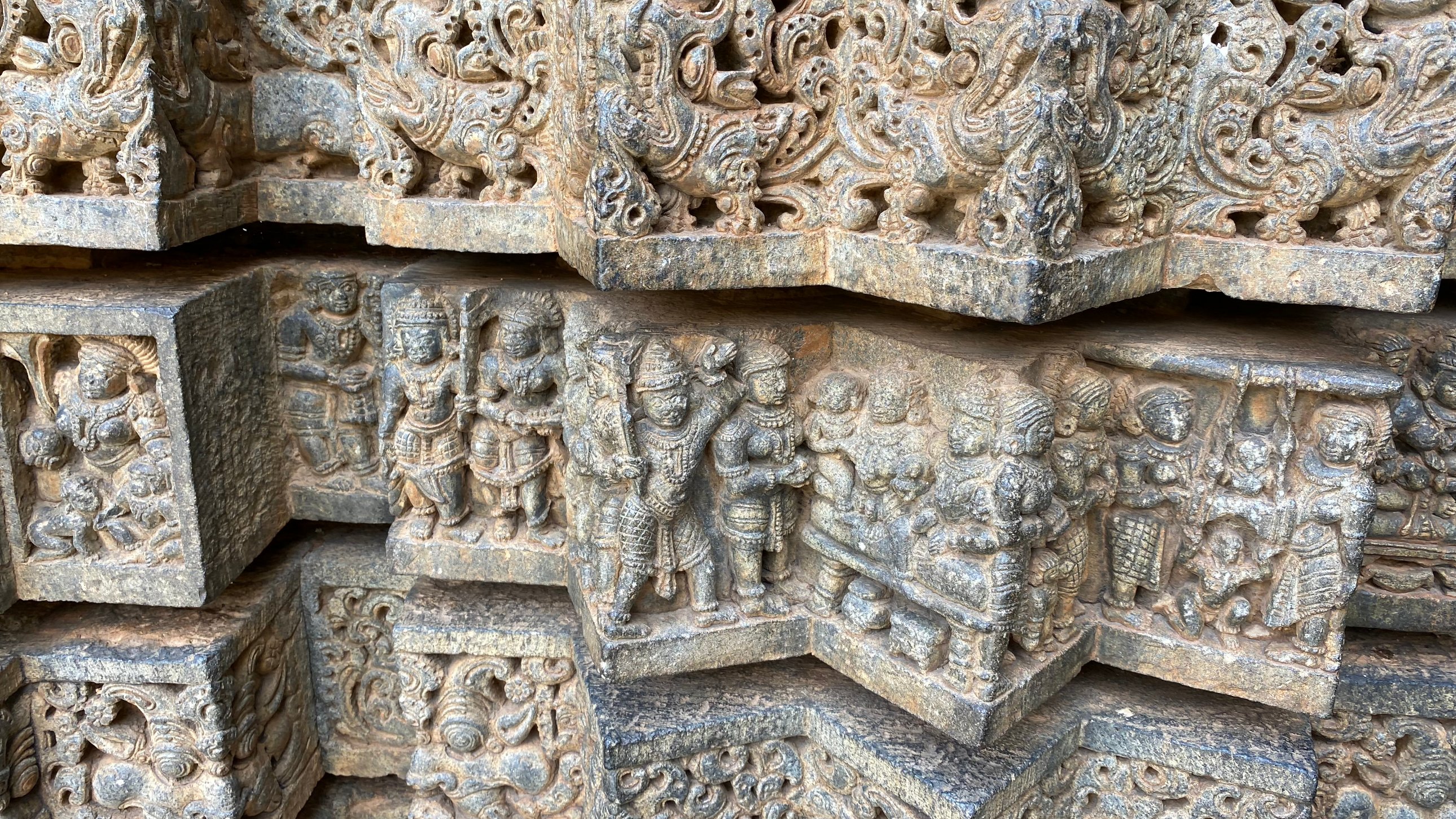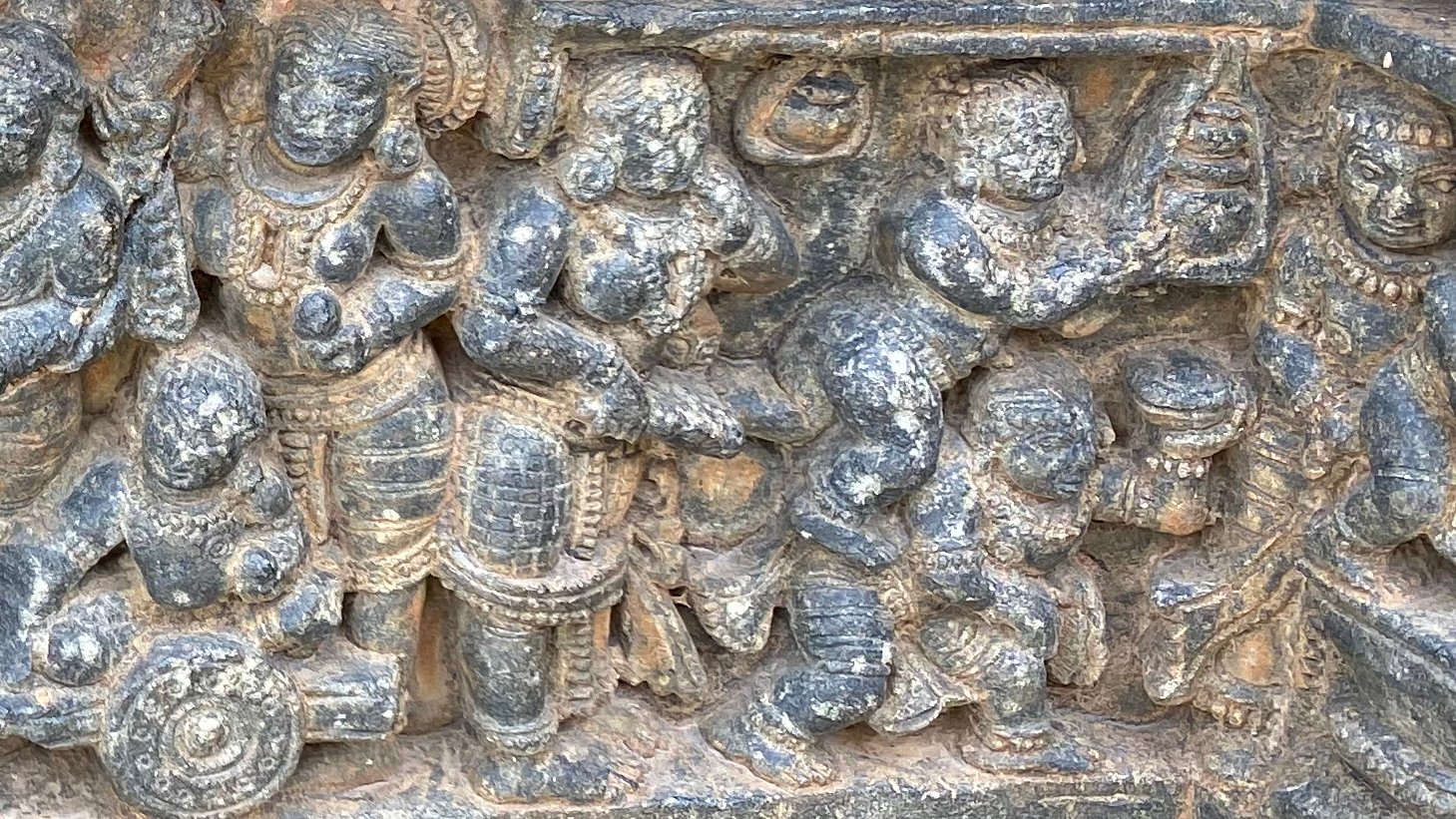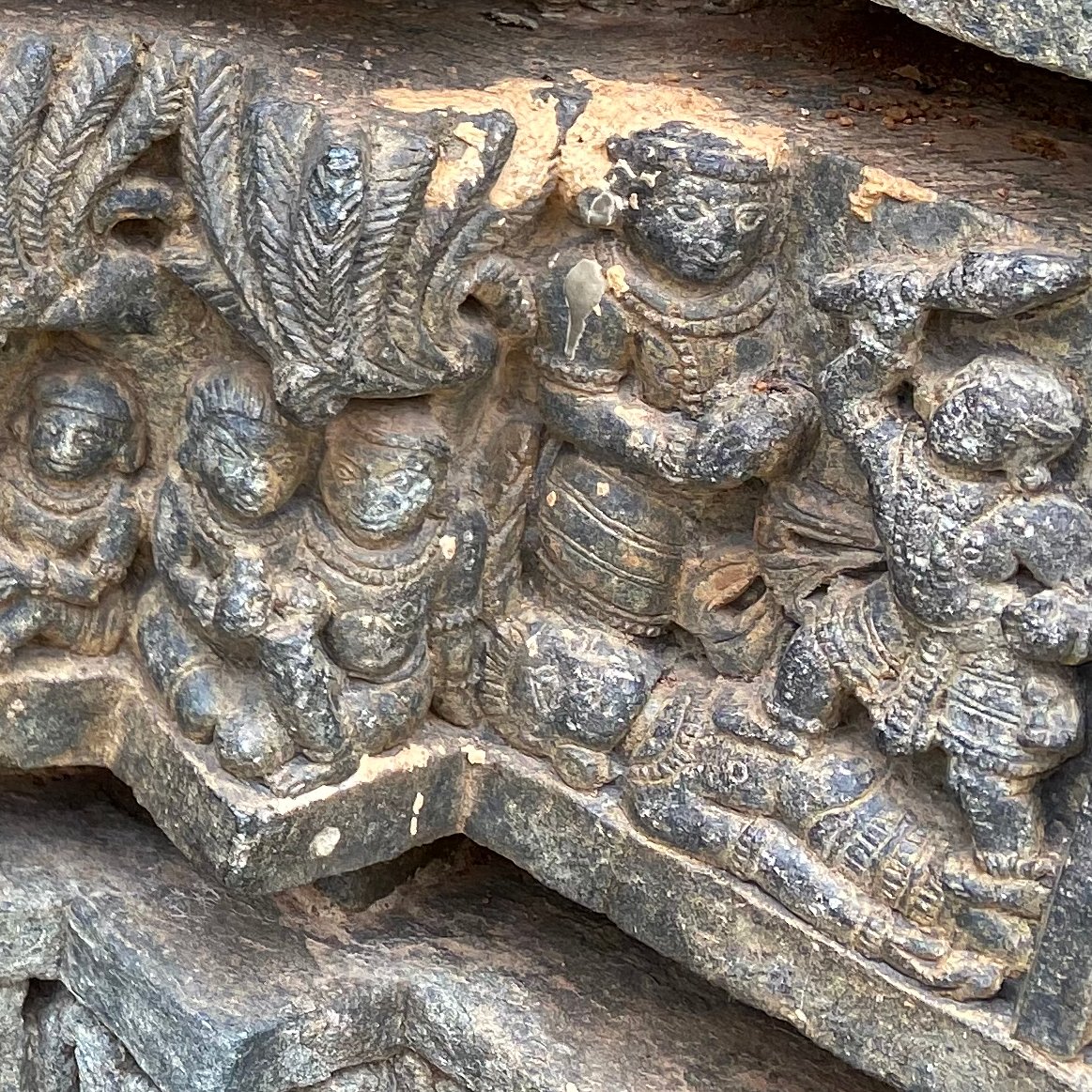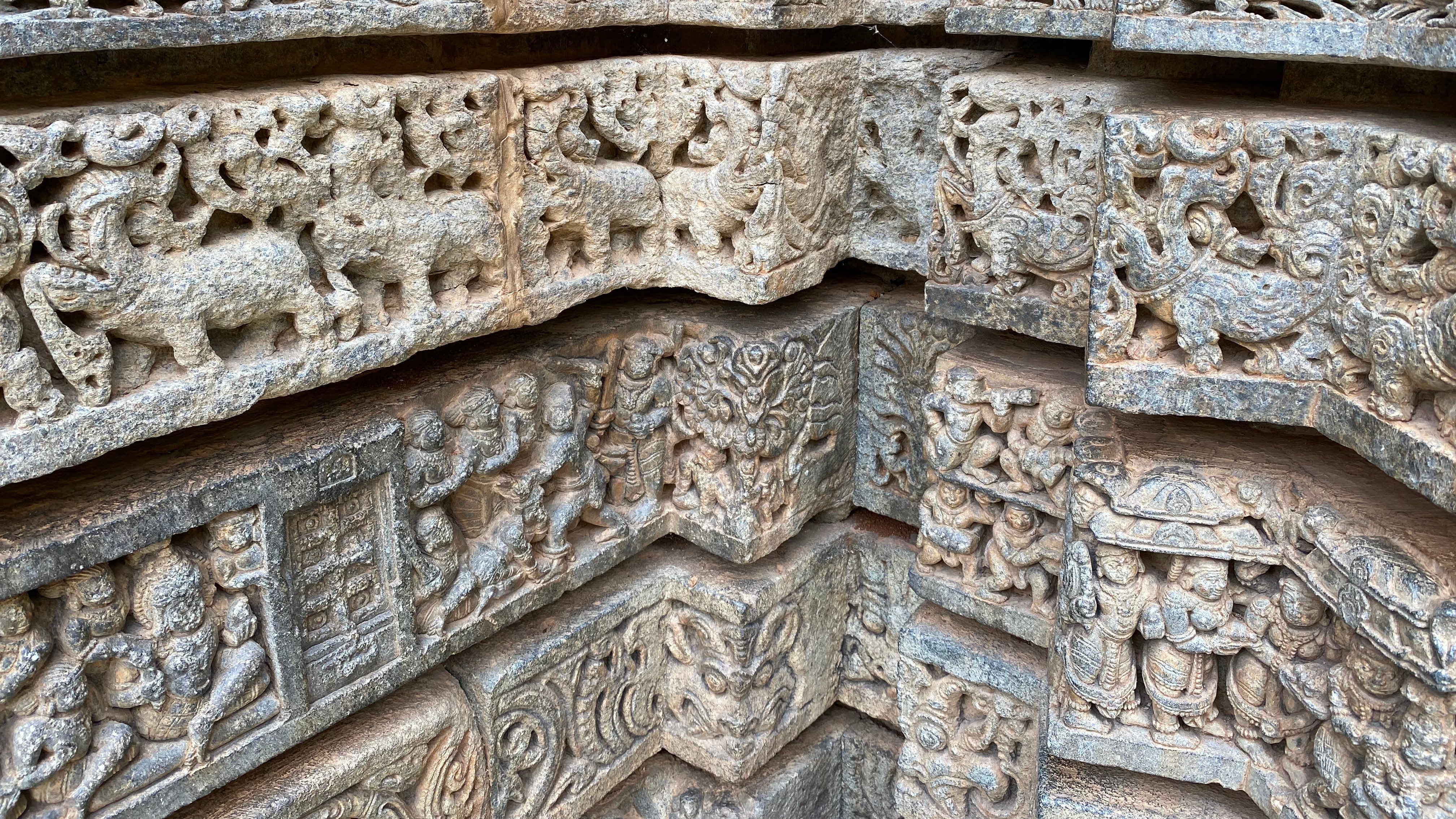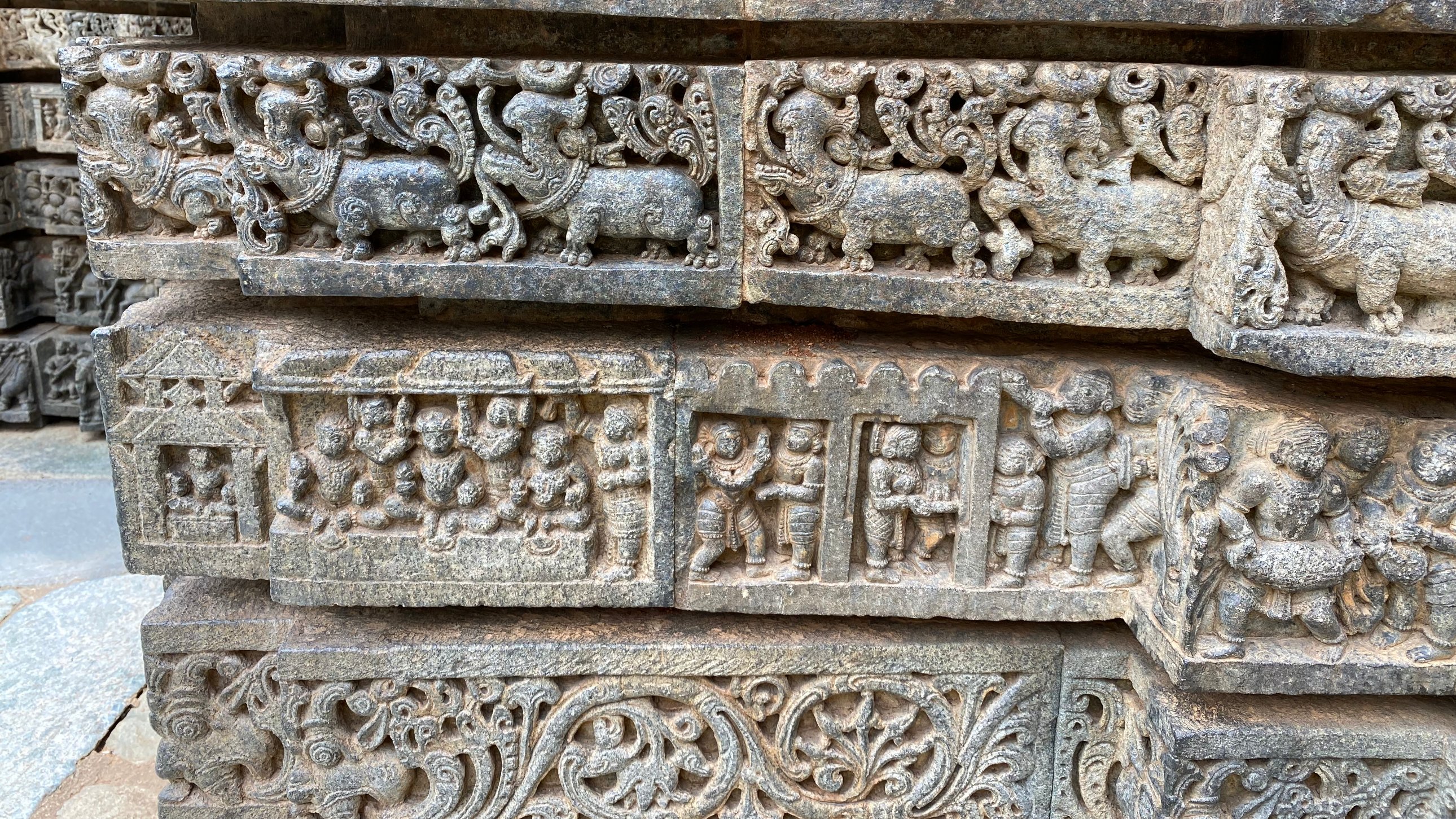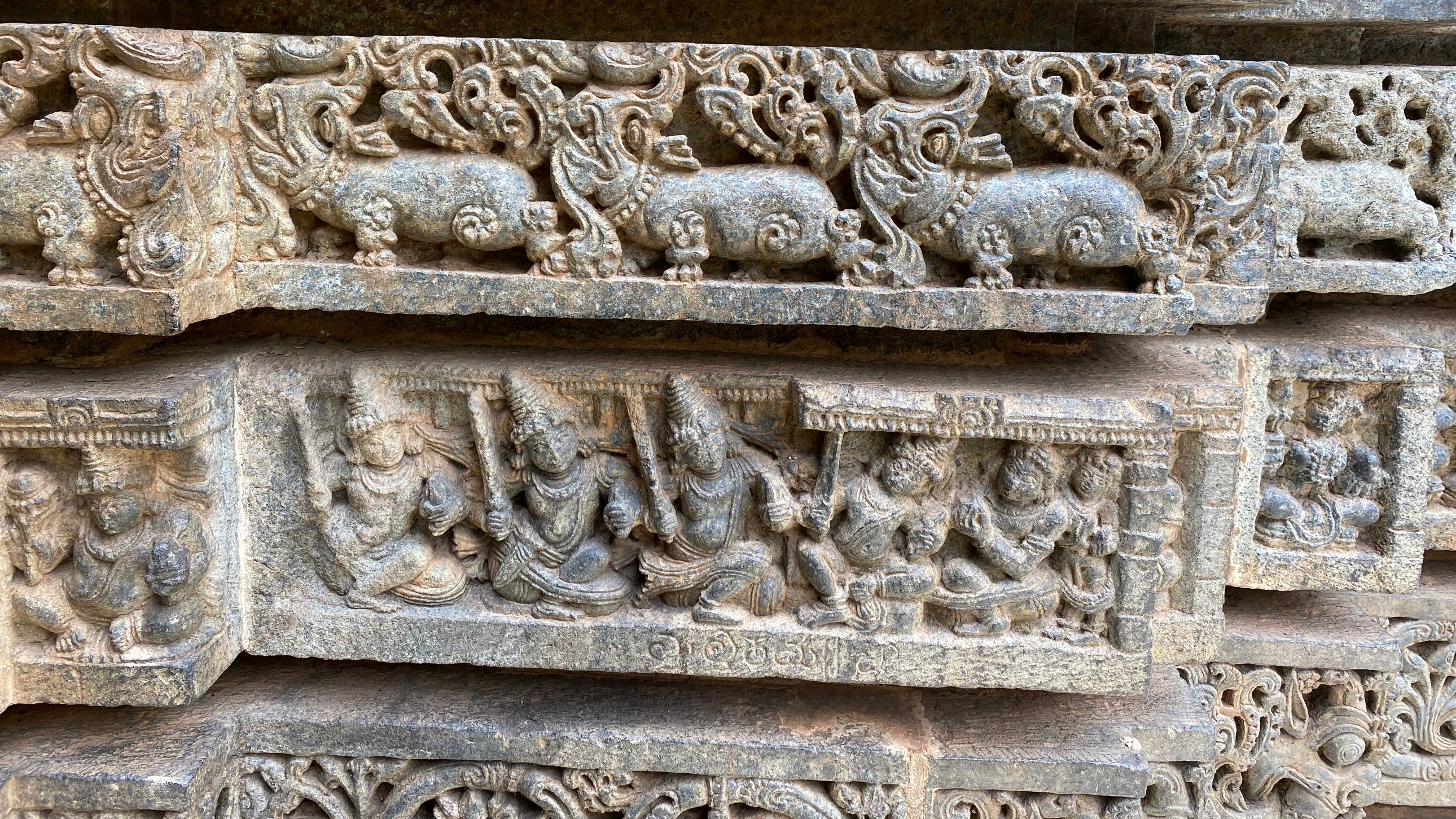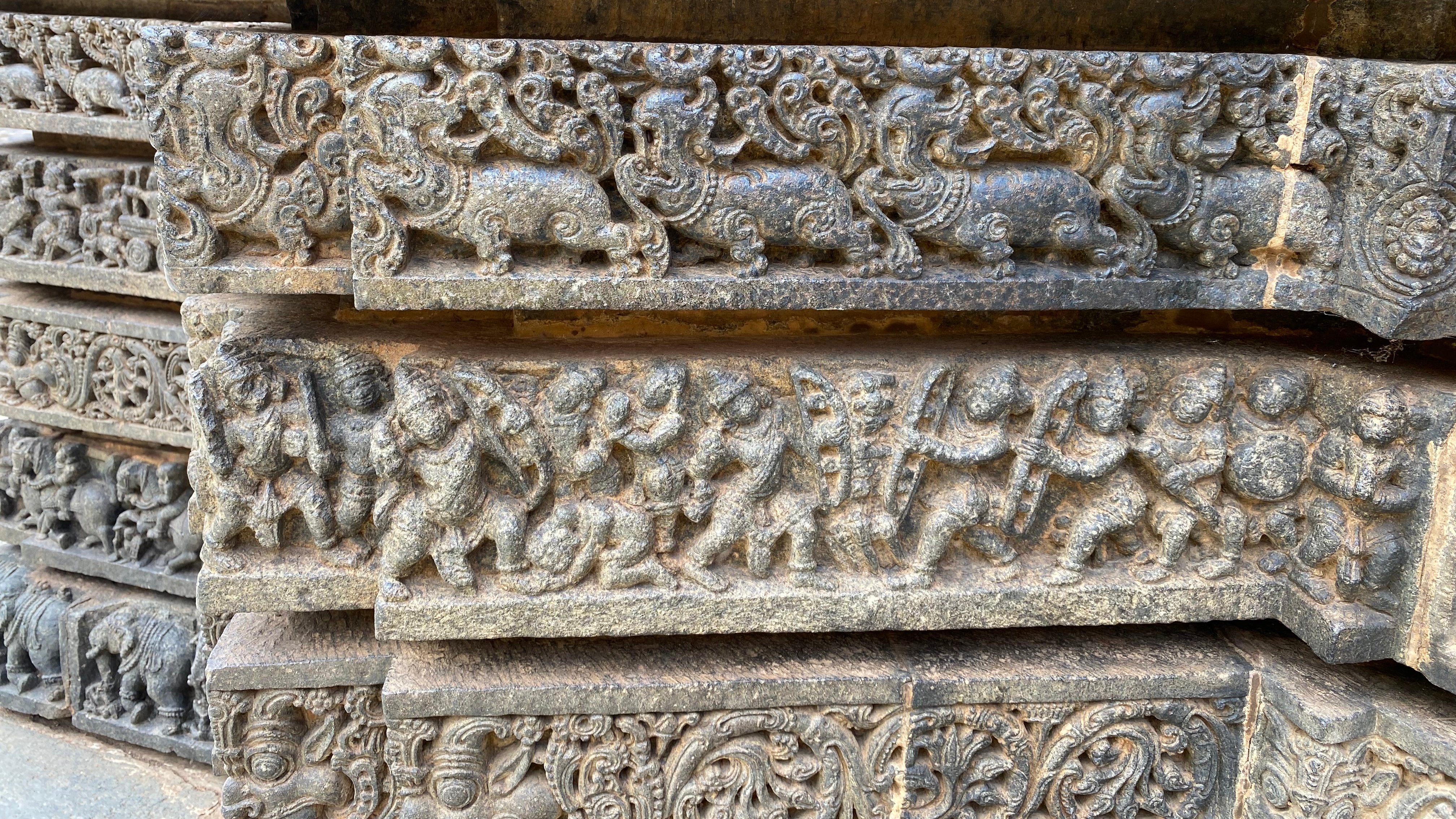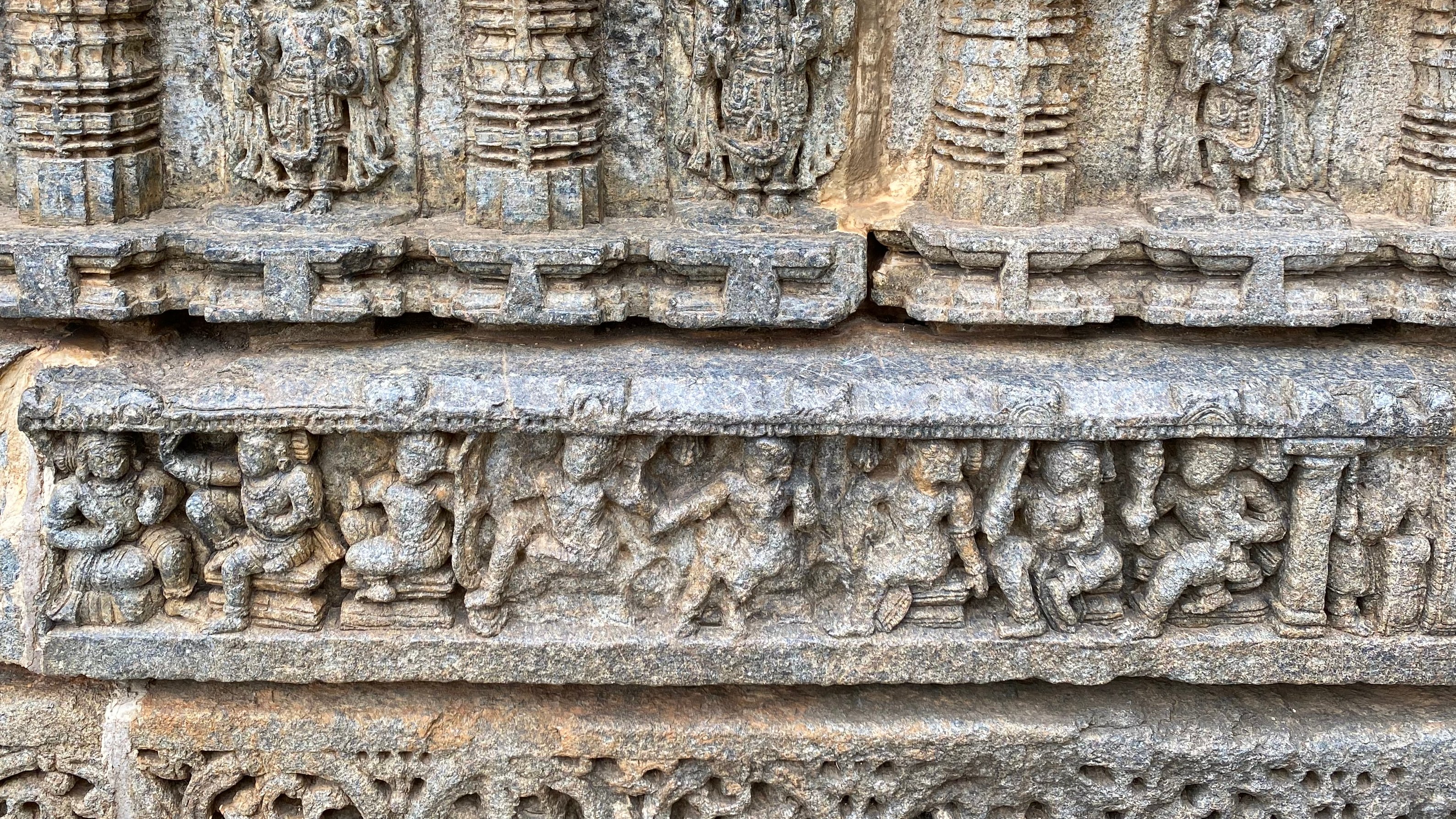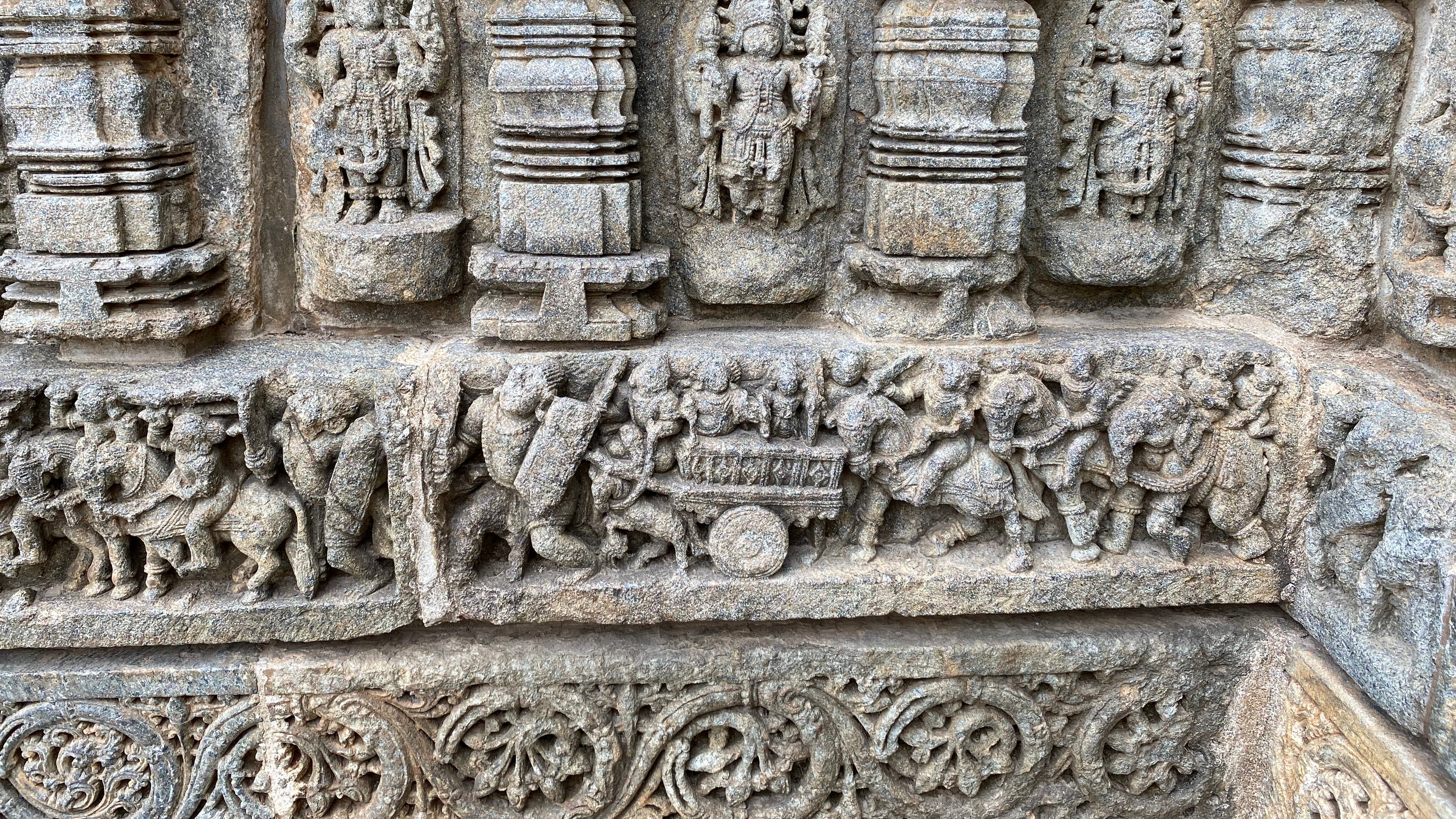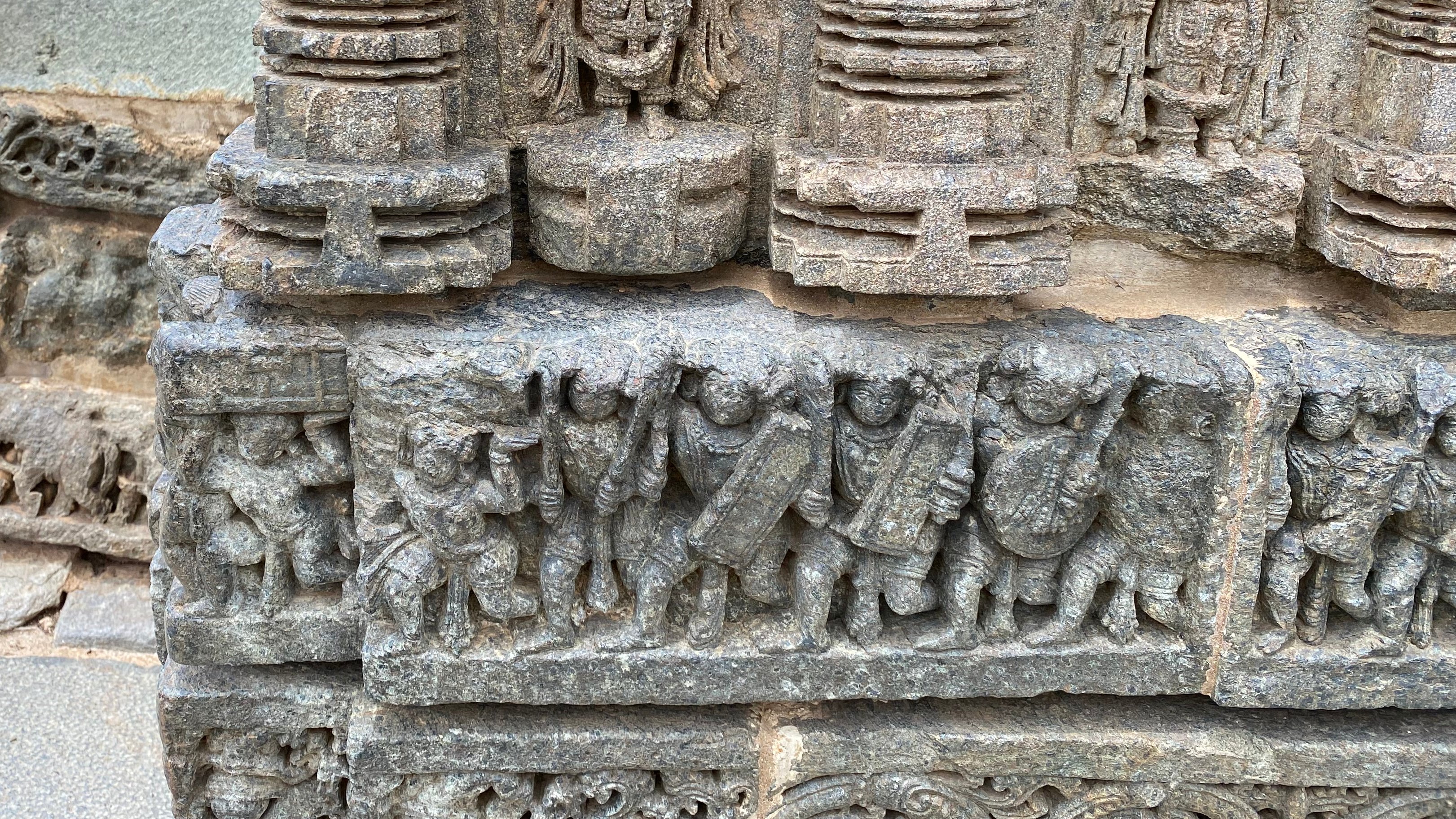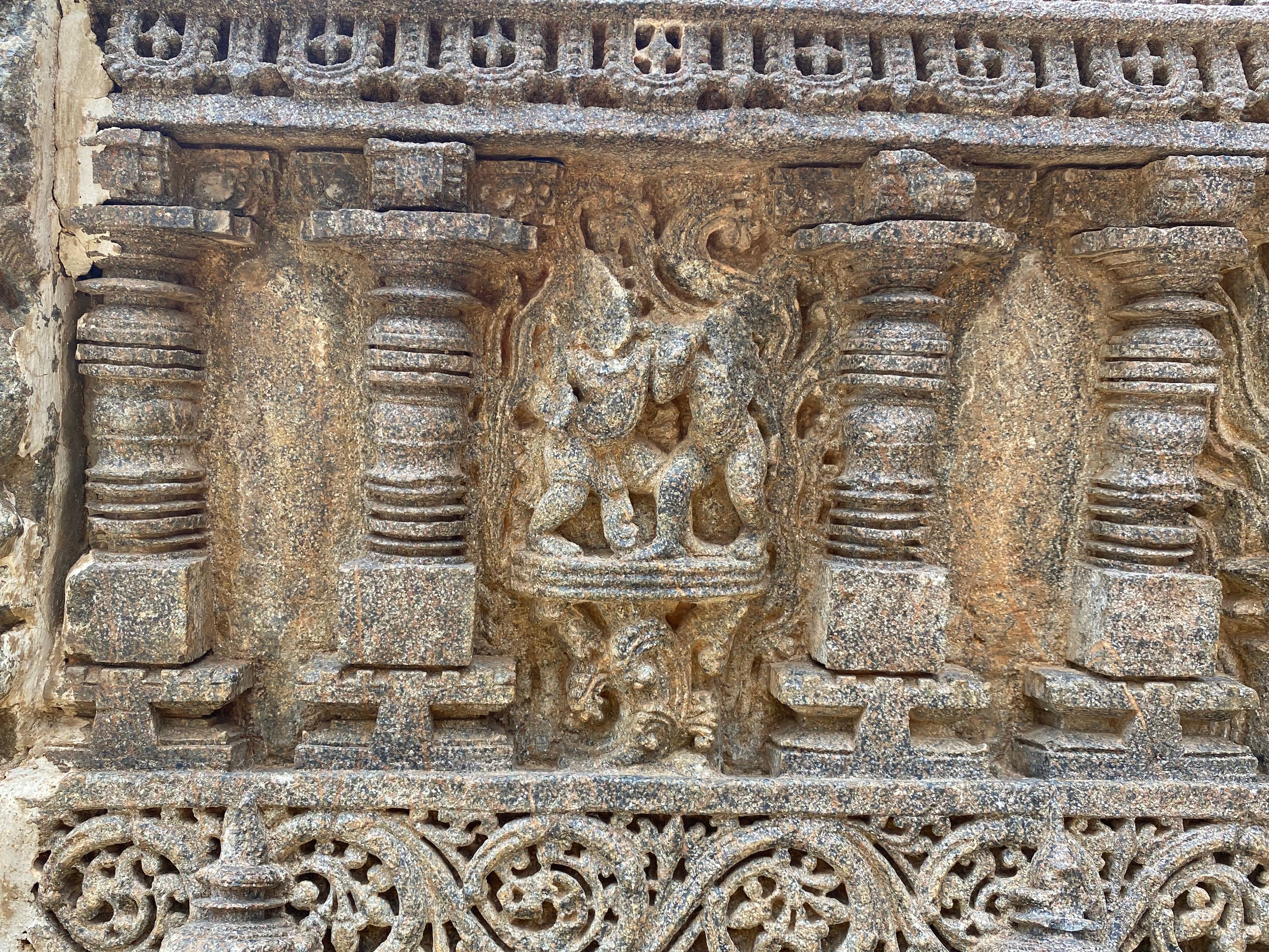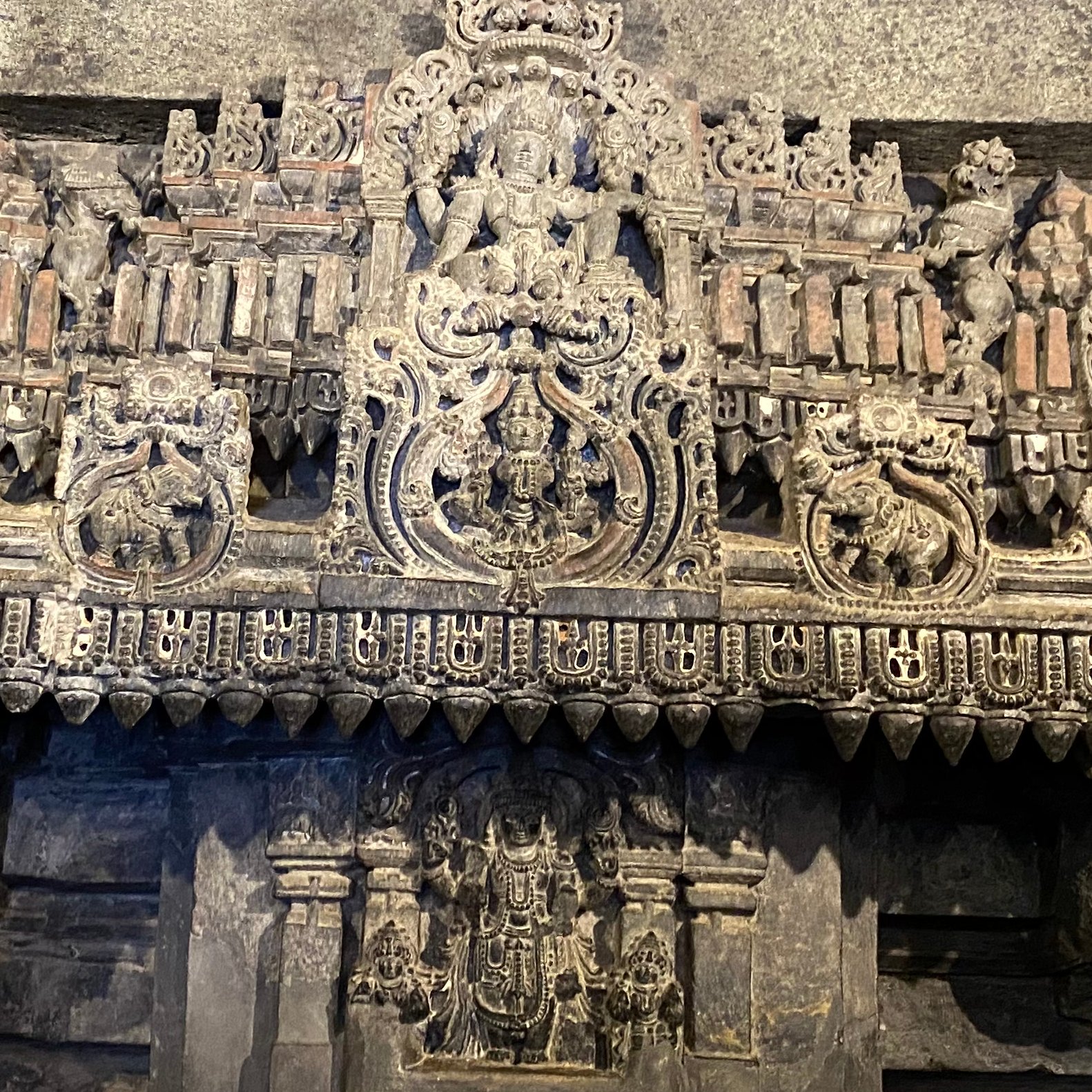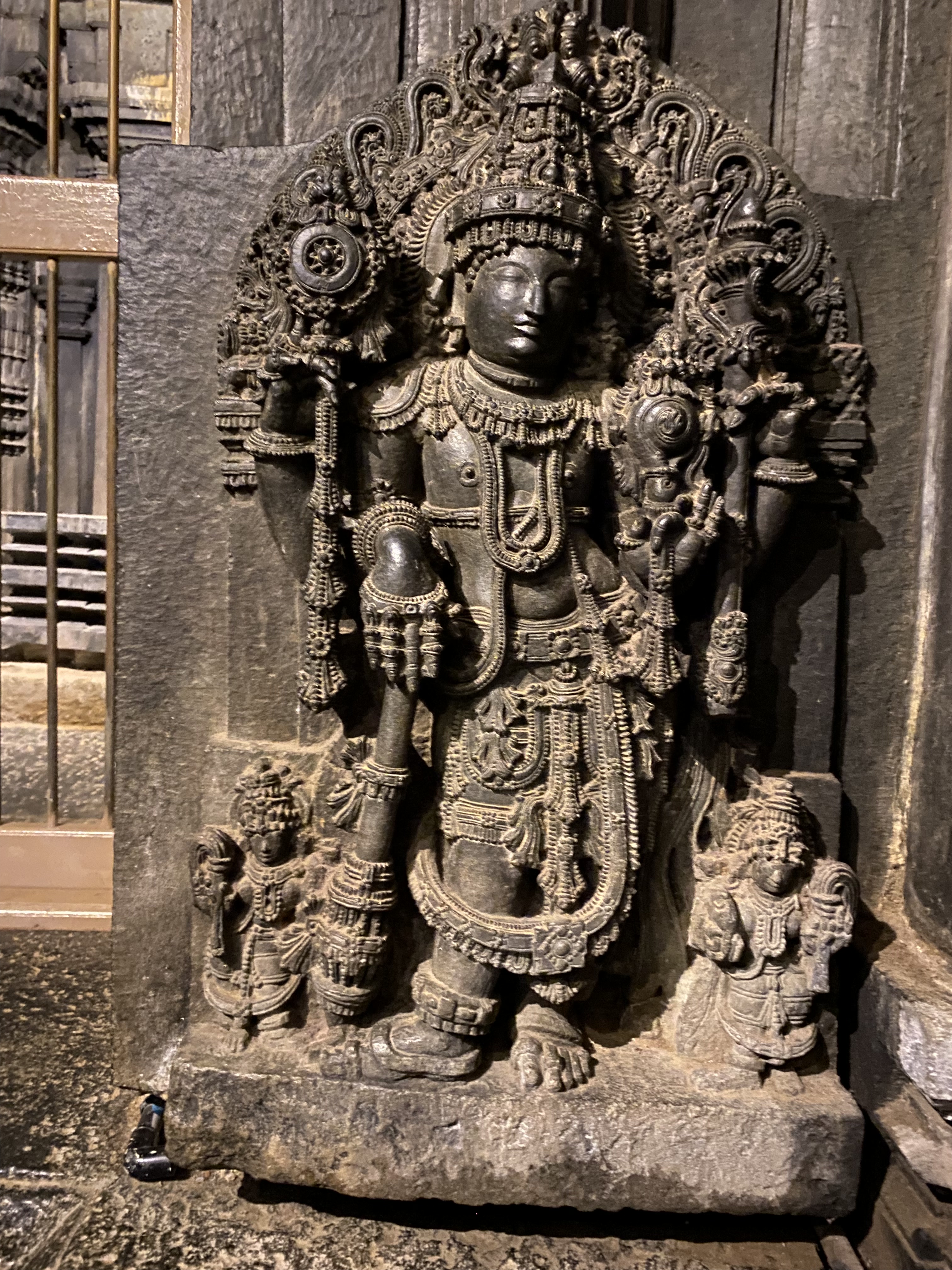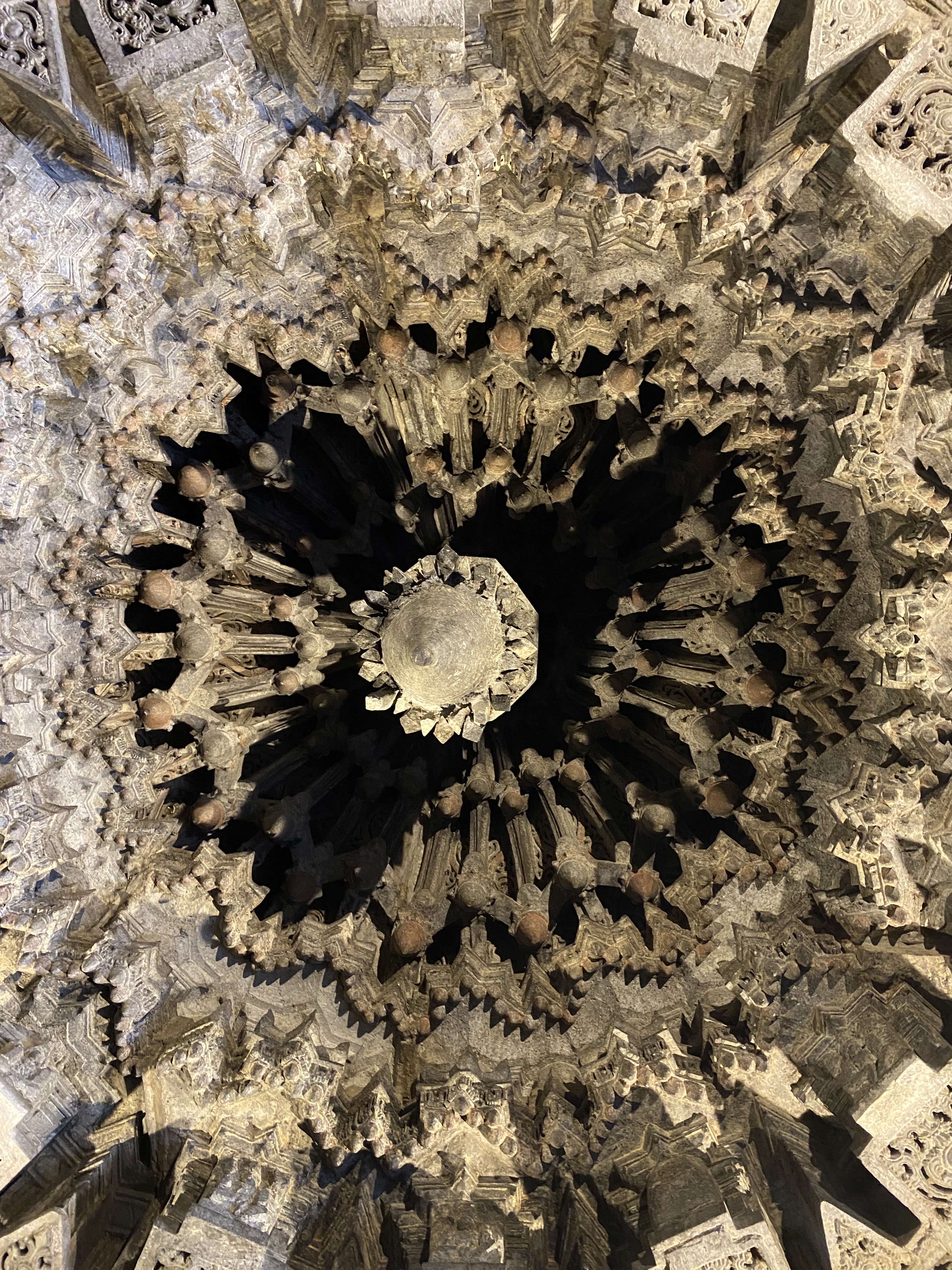 |
| Chennakeshava Temple, Somanathpura |
Continuing from where we left off in Part I, which can be read HERE
THE RAMAYANA PANELS
The Kapotabandha (frieze) of the temple contains scenes from the Ramayana, Bhagavata purana & Mahabharata. I've tried to decipher some of them. It starts with a scene from the Ramayana. It shows King Dasharatha seated in his royal court
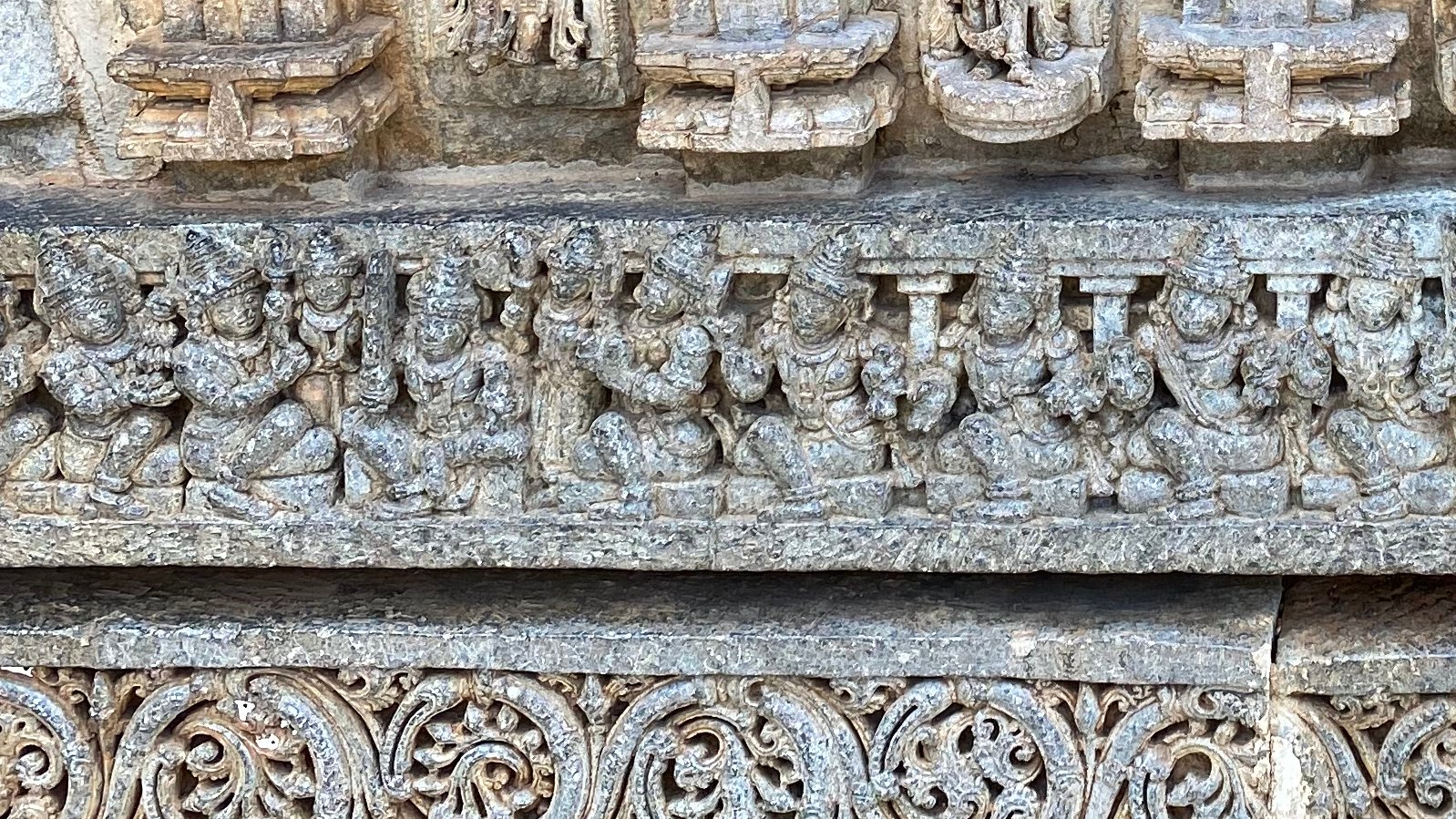 |
| Dasharatha seated in his court |
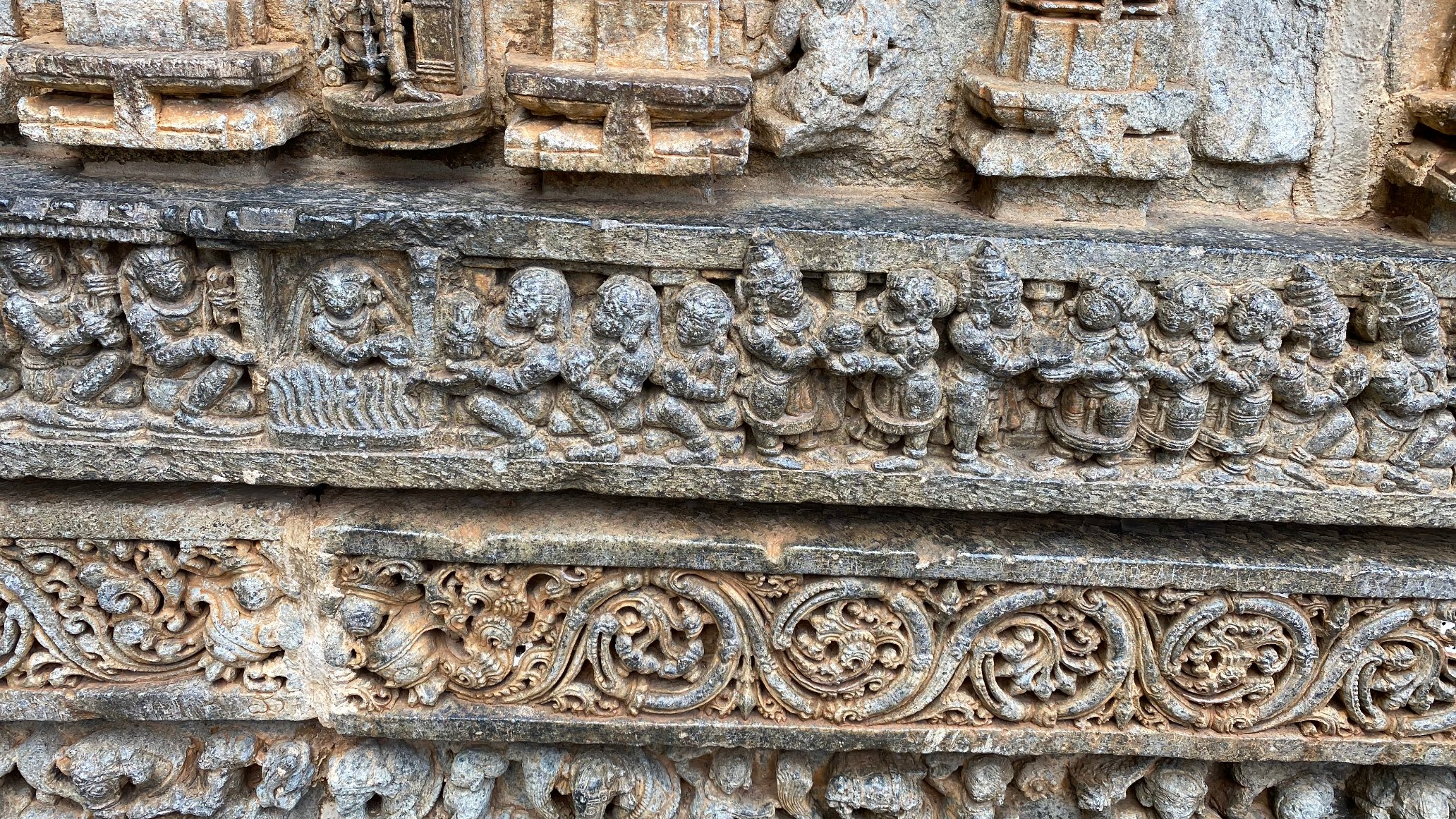 |
| Dasharatha on the advice of rishis performing Putrakameshti yaga for the sake of bearing children |
 |
| The birth of Shri Rama |
 |
| Namakarana of the children. Sumitra is seen holding twins Lakshmana & Shatrughna. Next to her is Kaikeyi holding Bharatha followed by Kausalya with Rama on her lap. Dasharatha is seated next to her |
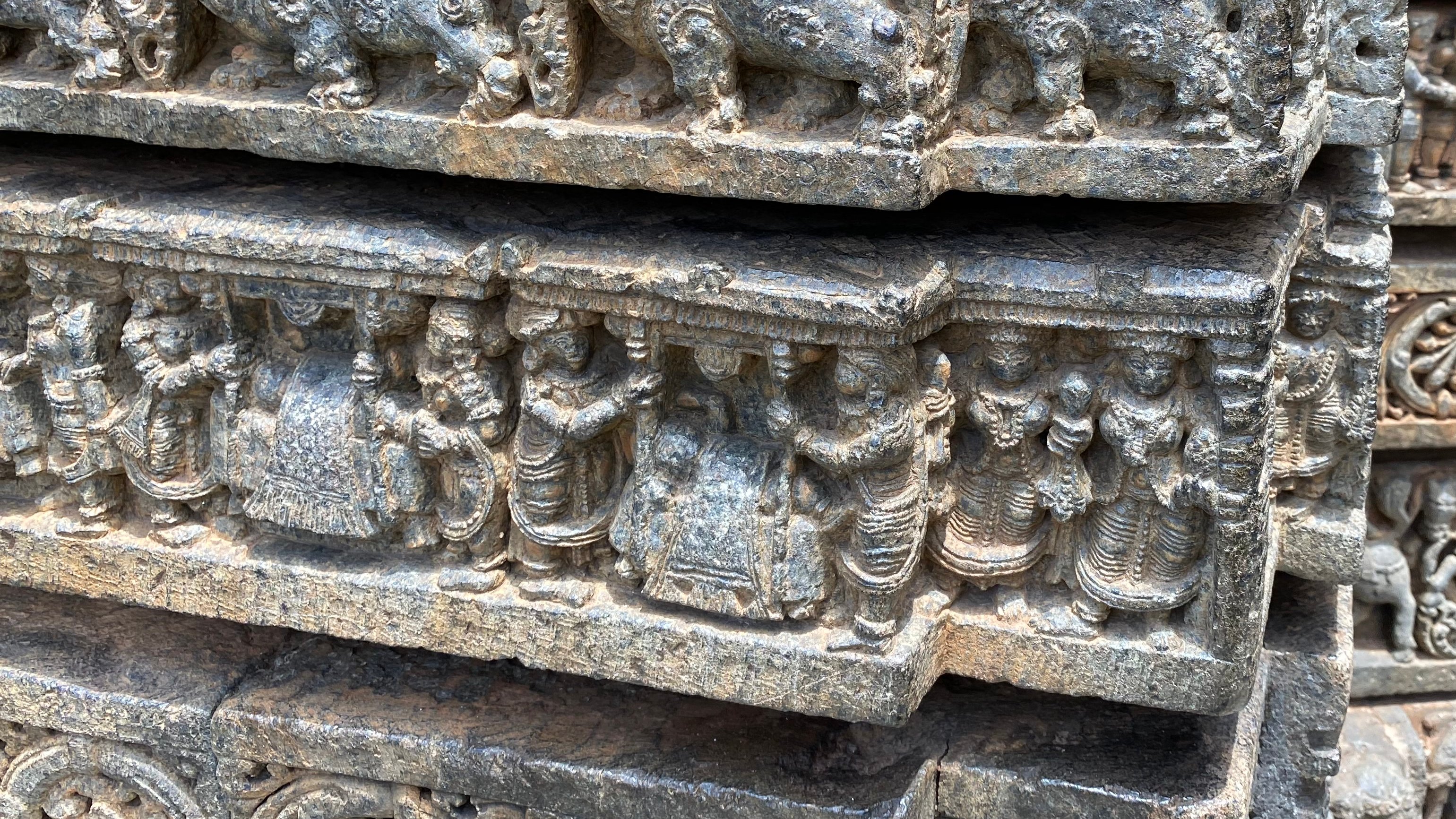 |
| Babies are rocked in cradles |
 |
| Babies learn to crawl |
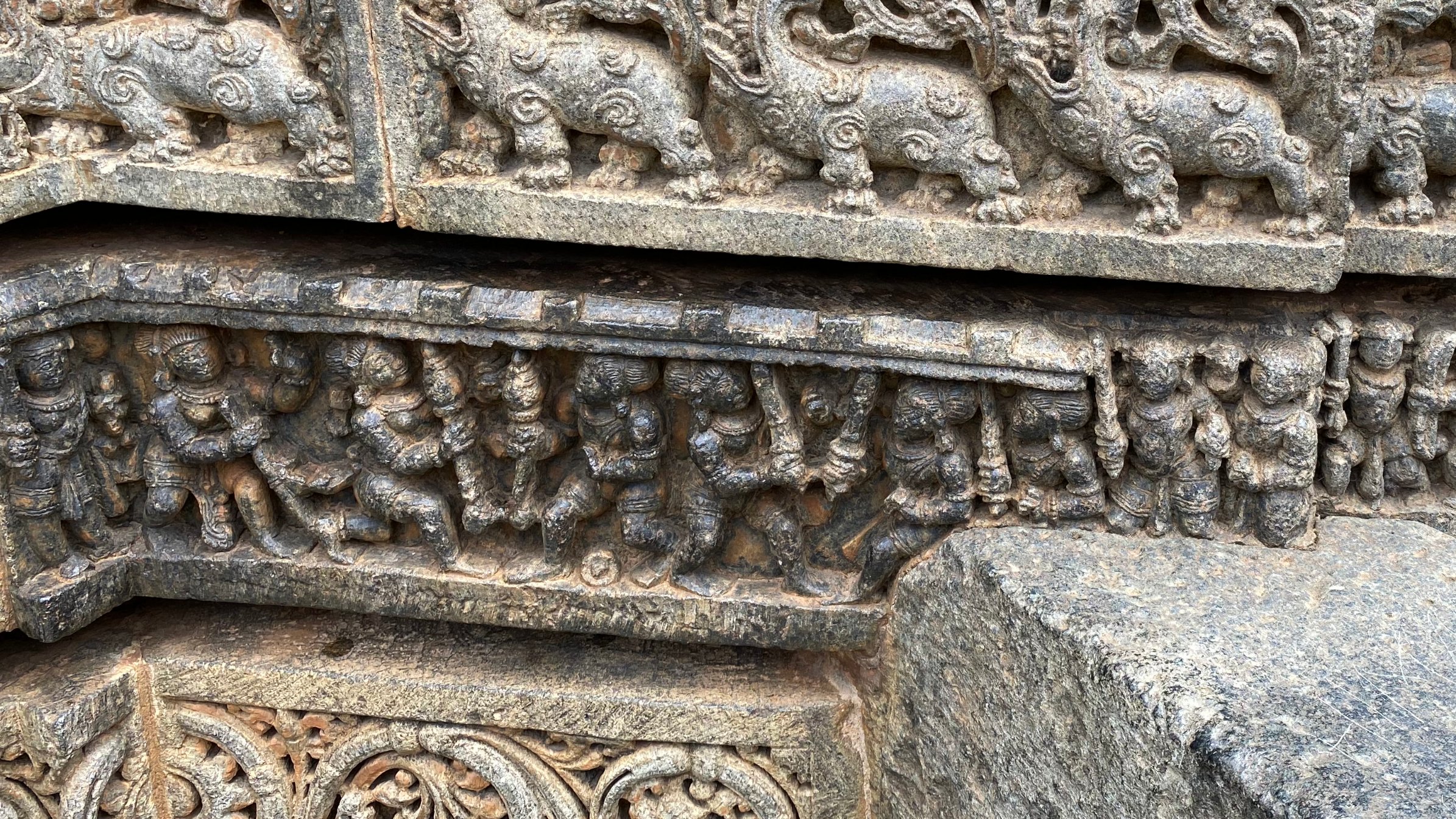 |
| Now a little grown up, the 4 brothers are given martial training |
 |
| Rama and Lakshmana accompany Rishi Vishwamitra to the forest |
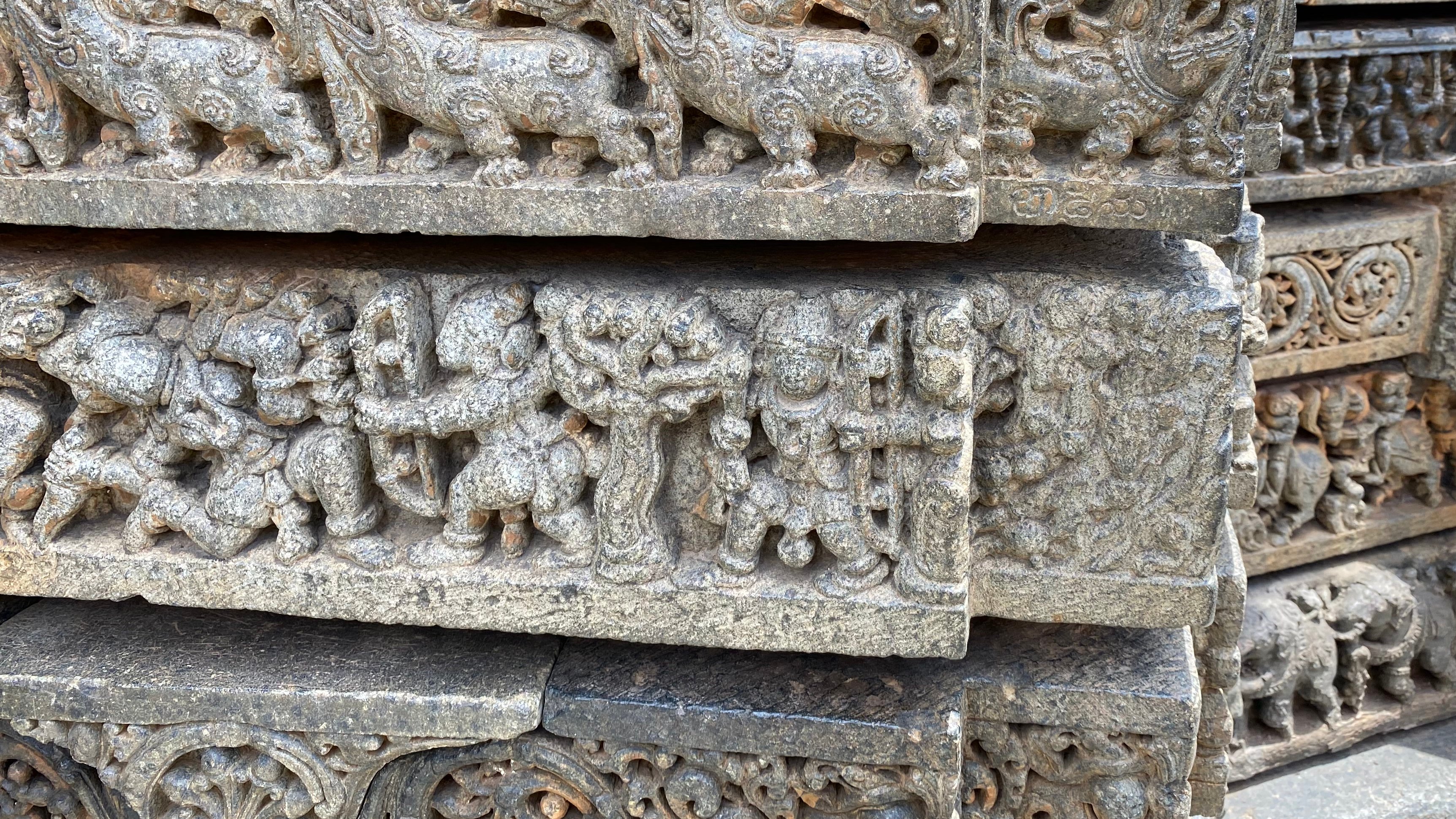 |
| Rama kills Tataka rakshashi who would often harass rishis performing yajnas |
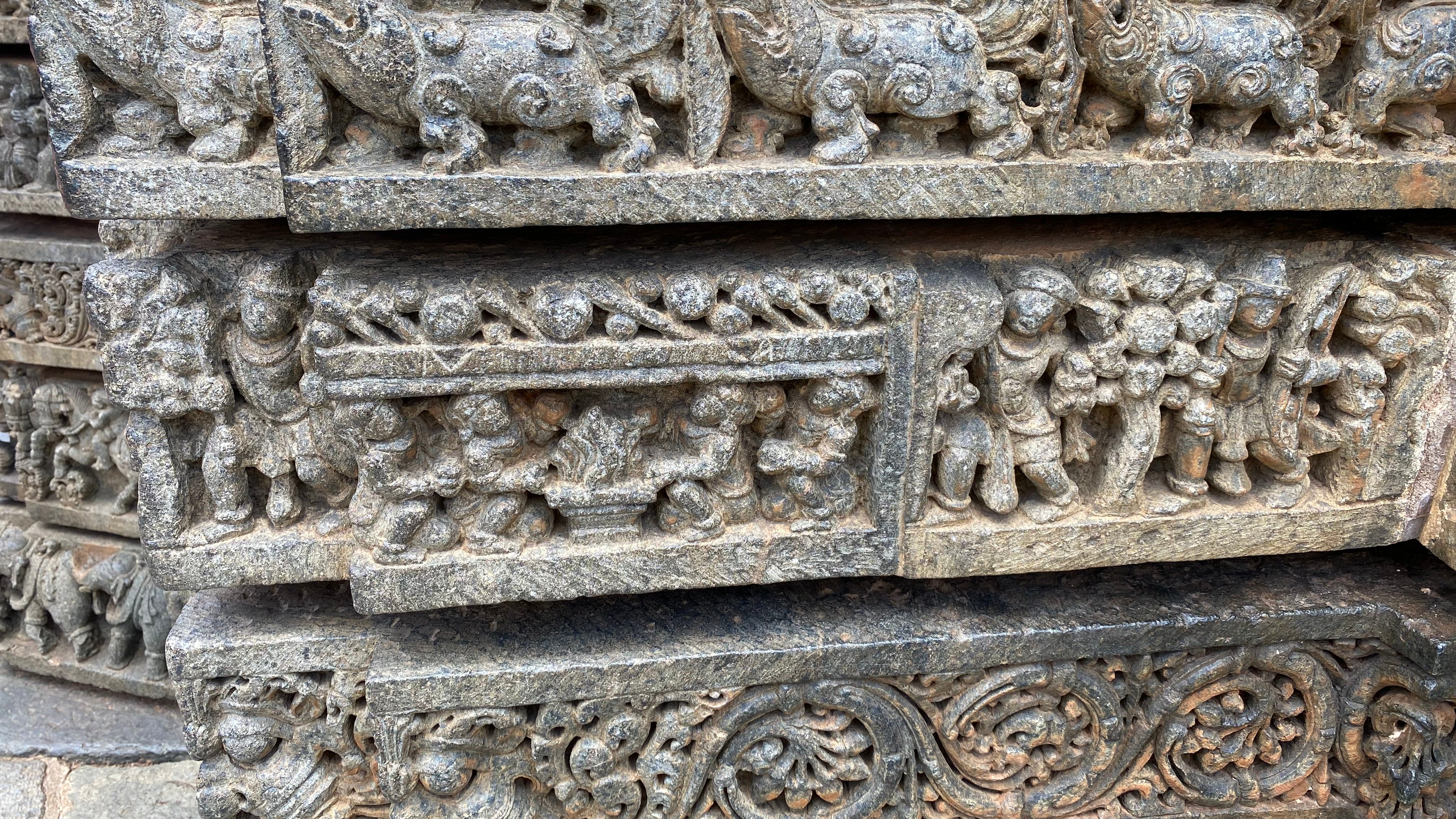 |
| Rishis resume performing Yajna as Rama and Lakshmana keep watch |
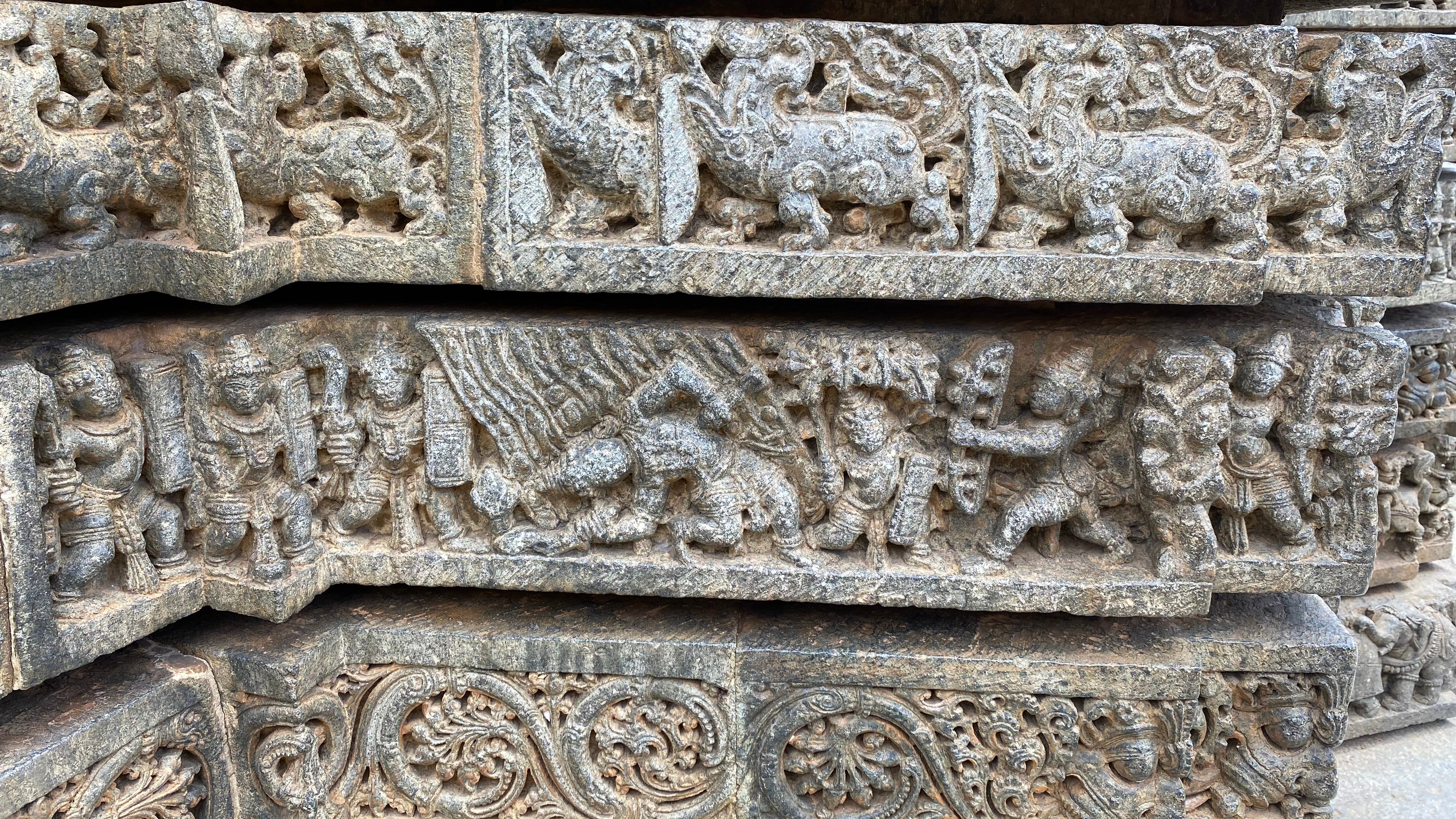 |
| Yajna attacked again by Tataka's son Maricha. He is defeated by Rama |
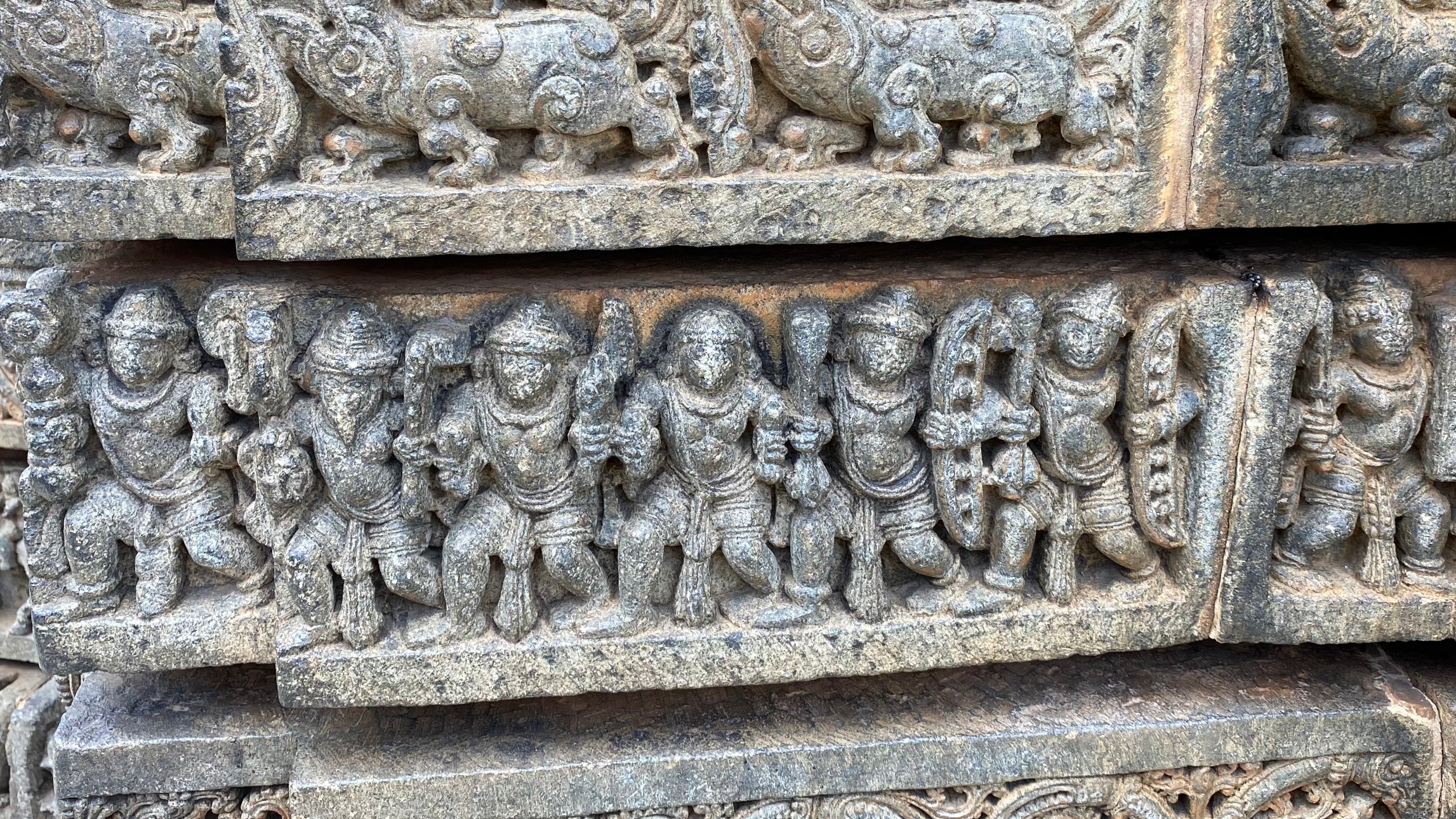 |
| Vishvamithra takes Rama & Lakshmana to Janaka's palace in Mithila |
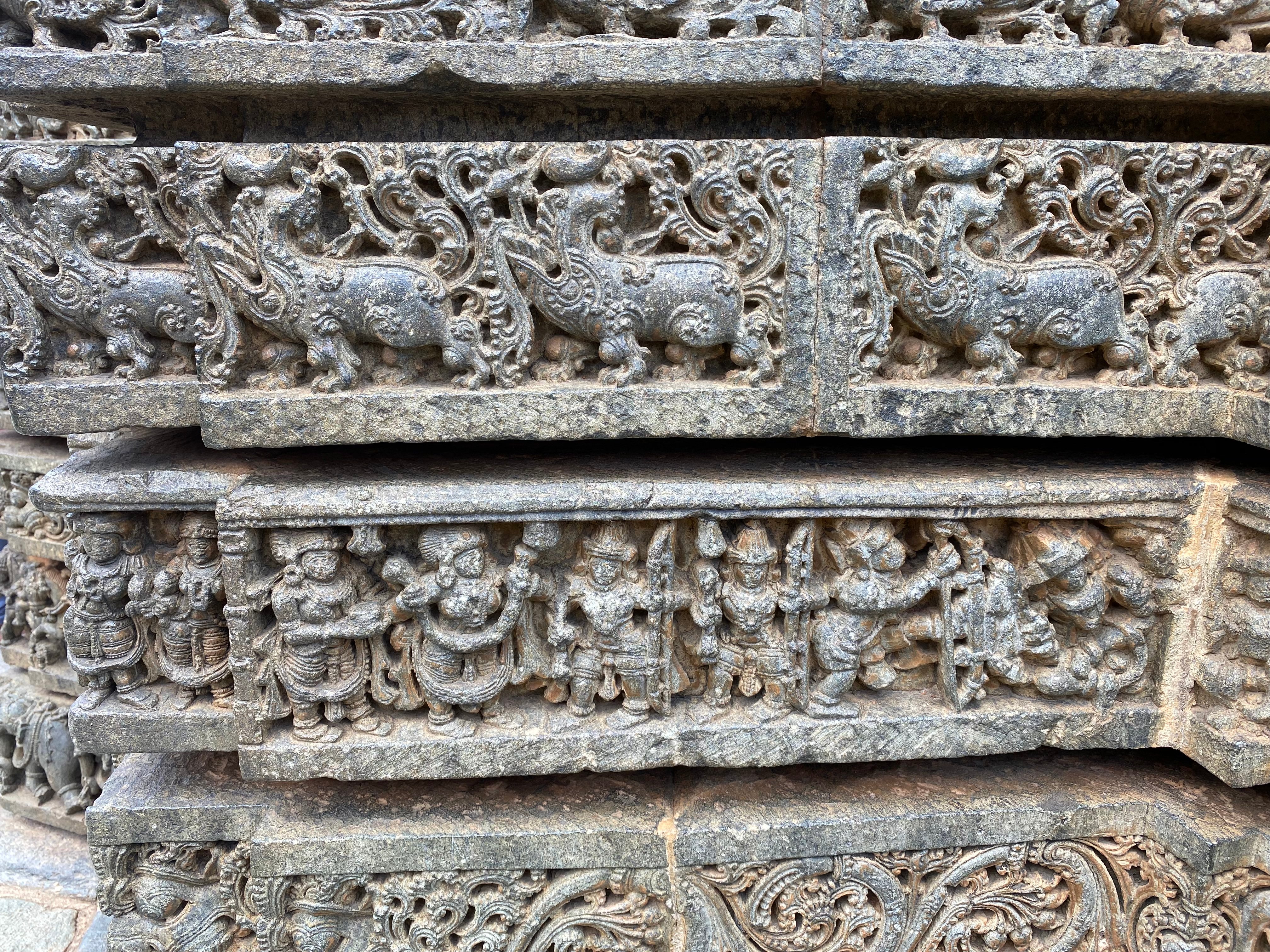 |
| Rama lifts & breaks the Pinaka bow of Shiva, followed by Sita garlanding Rama |
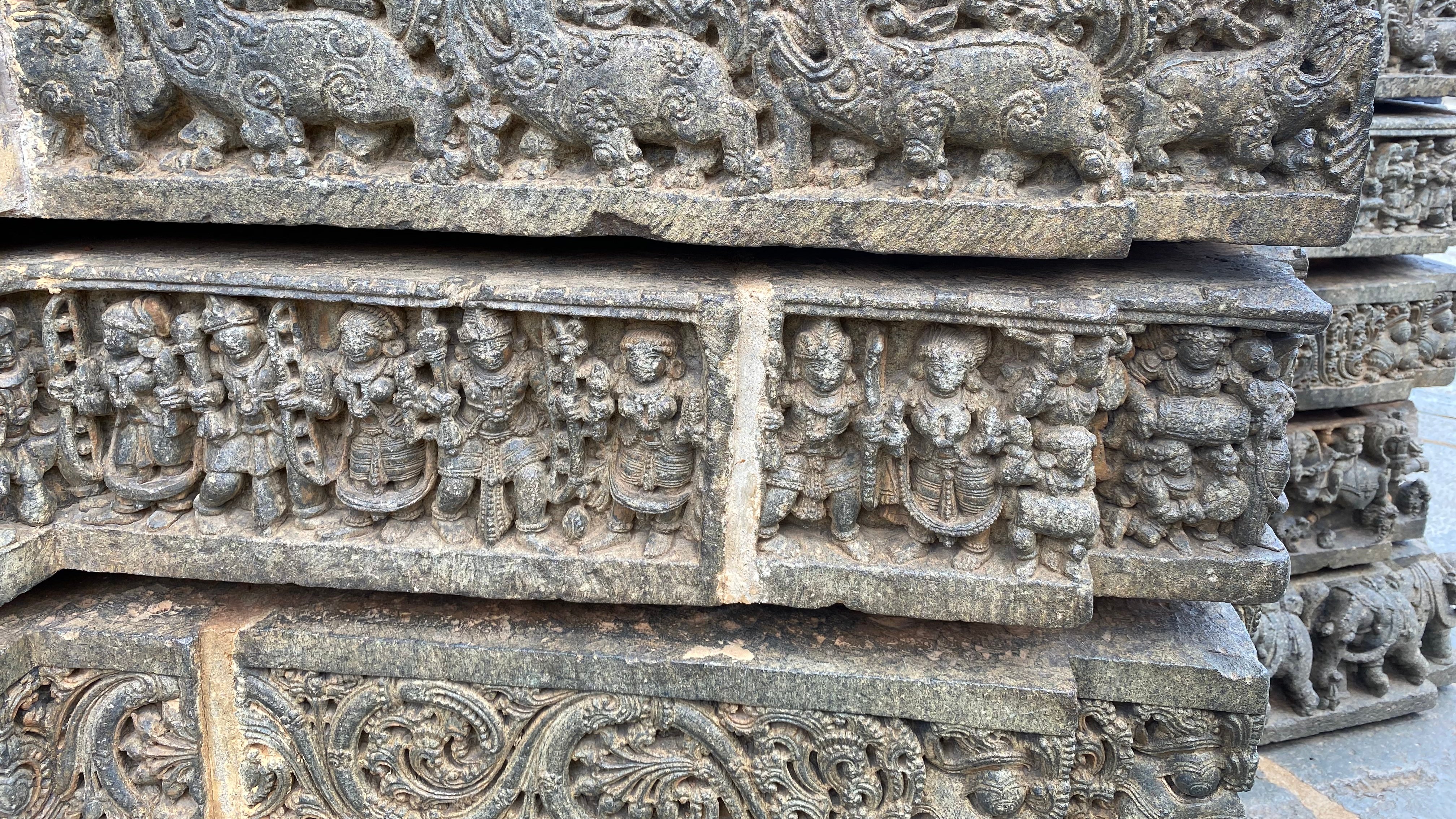 |
| Panels depicting marriages of Rama with Sita & Lakshmana with Urmila |
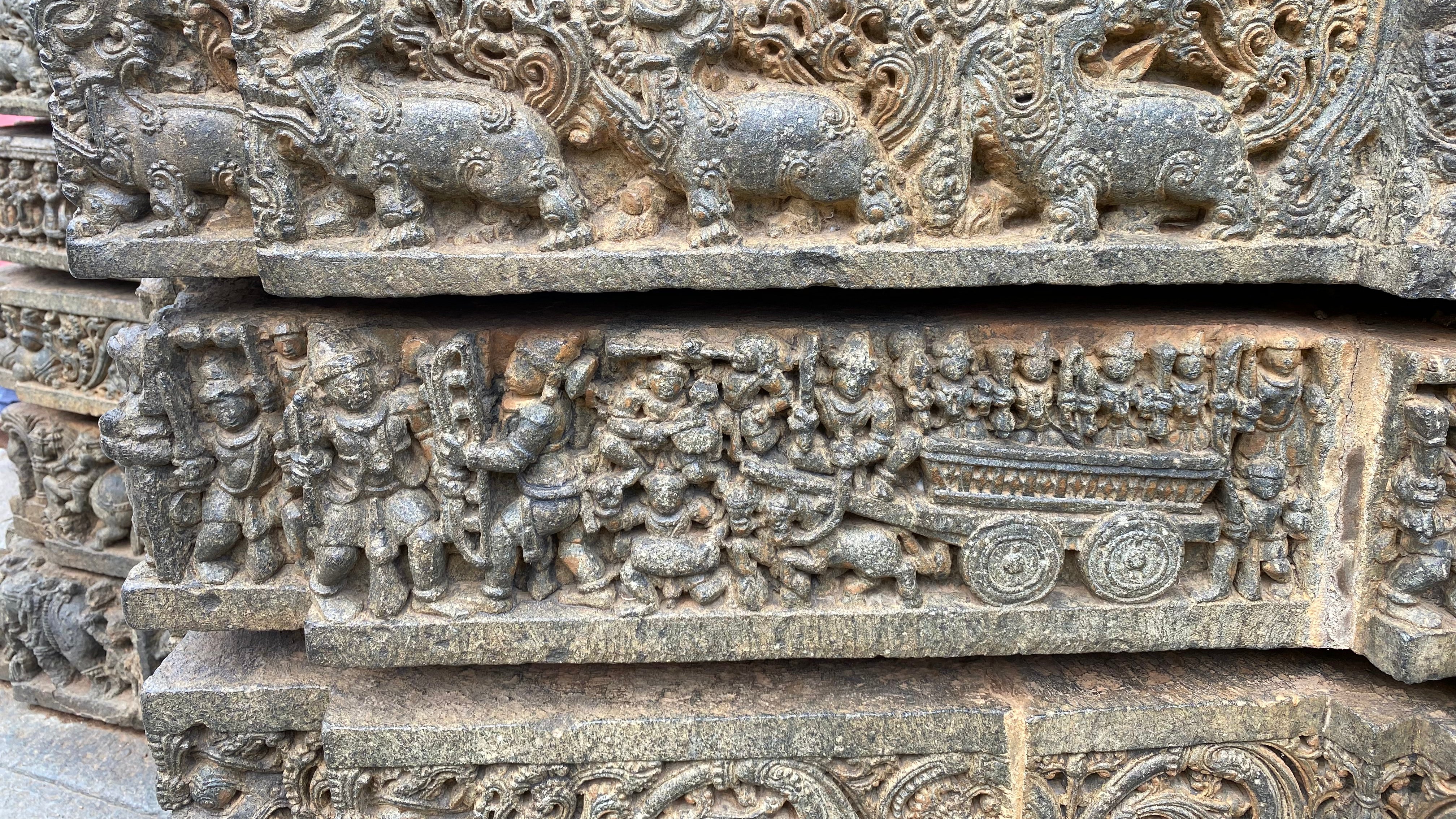 |
| Newly wed Rama & Lakshmana travelling back to Ayodhya from Mithila in a chariot. They are stopped and challenged by Parashurama |
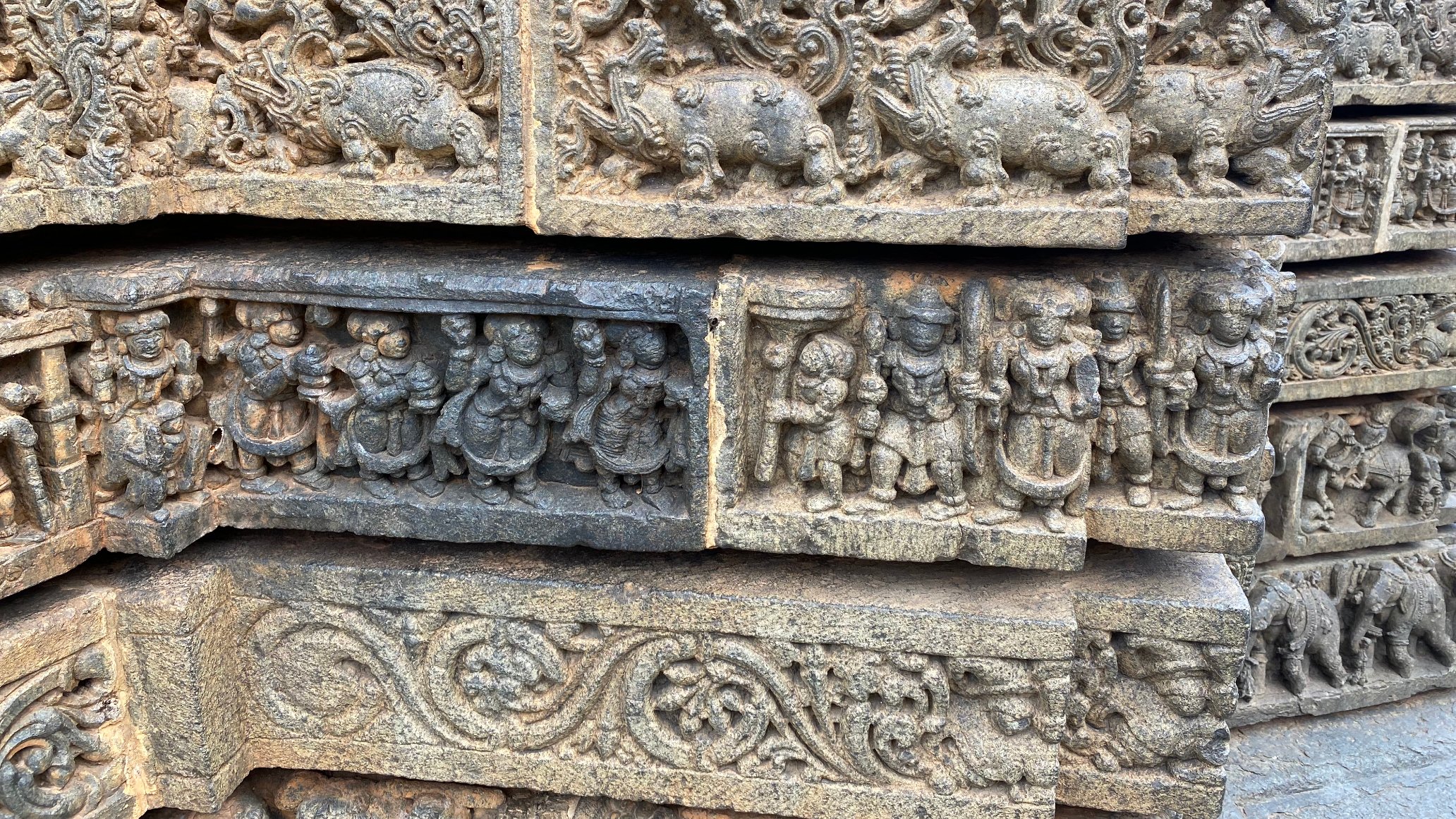 |
| Rama, Sita, Lakshmana & Urmila being welcomed in Ayodhya |
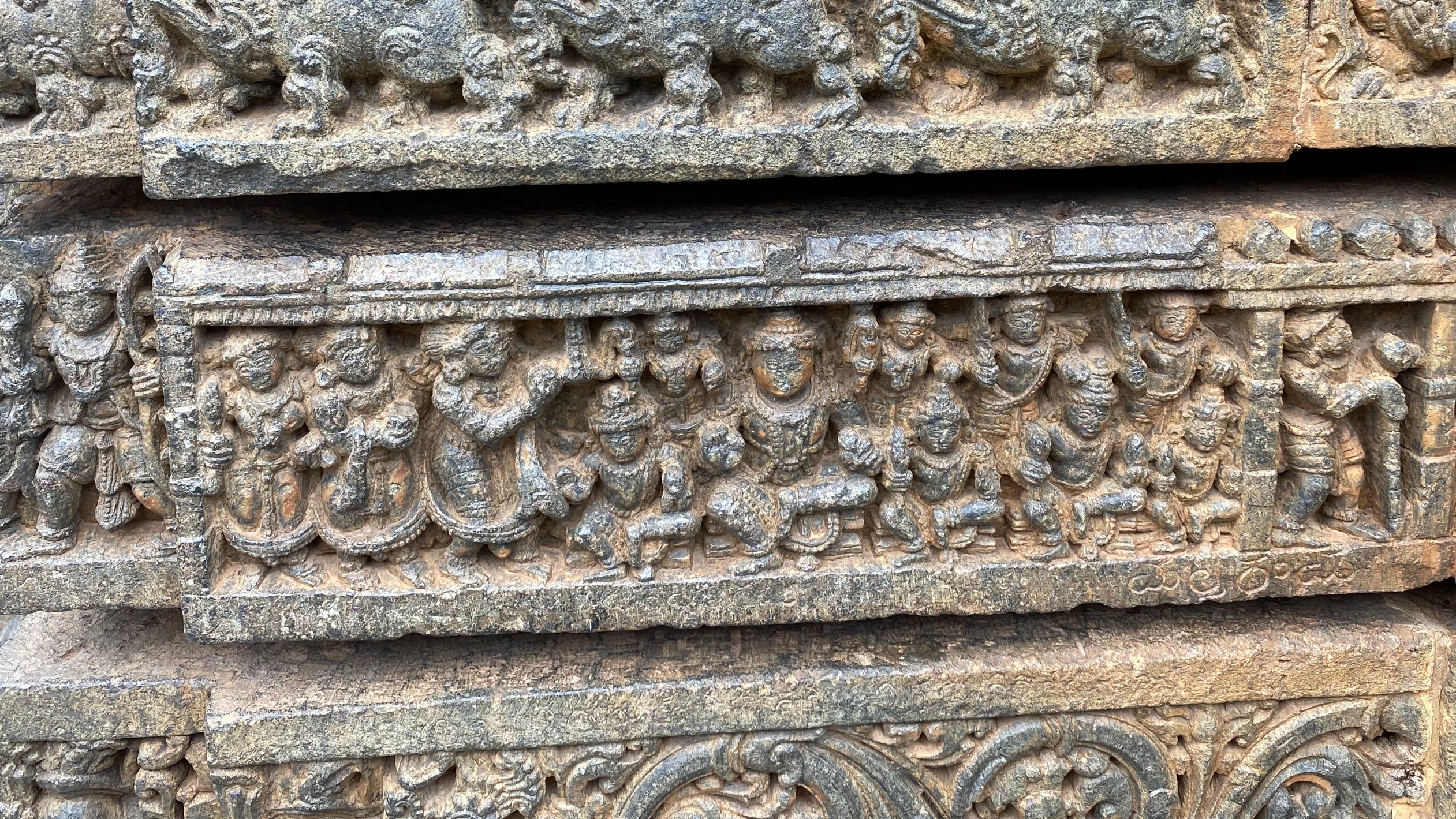 |
| Dasharatha and his 4 sons seated in durbar. On the bottom right side of the panel, Mallitama, the sculptor has left his signature in Kannada |
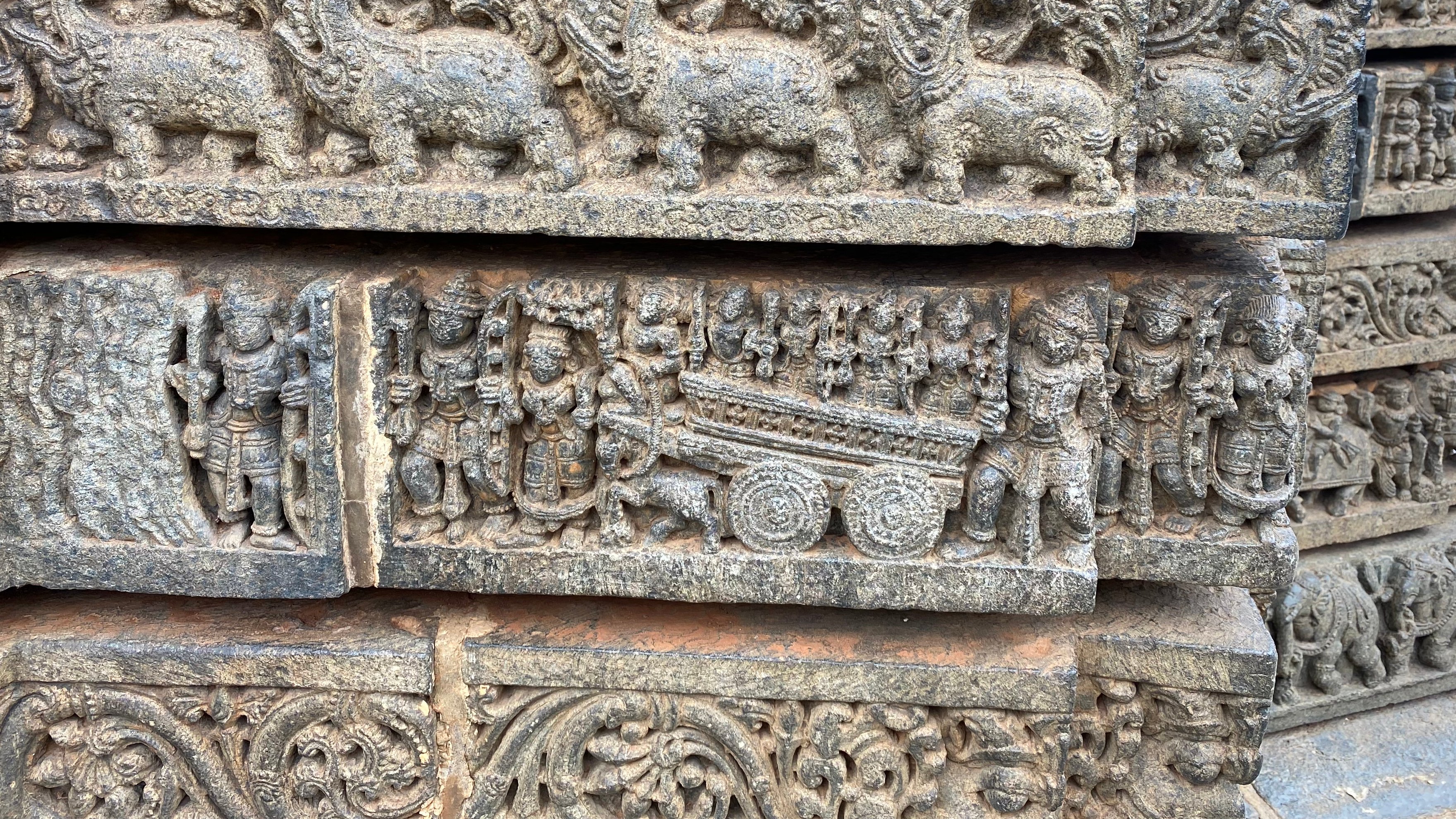 |
| This panel depicts the exile of Rama. He along with Lakshmana & Sita are taken away in a chariot by Sumantra |
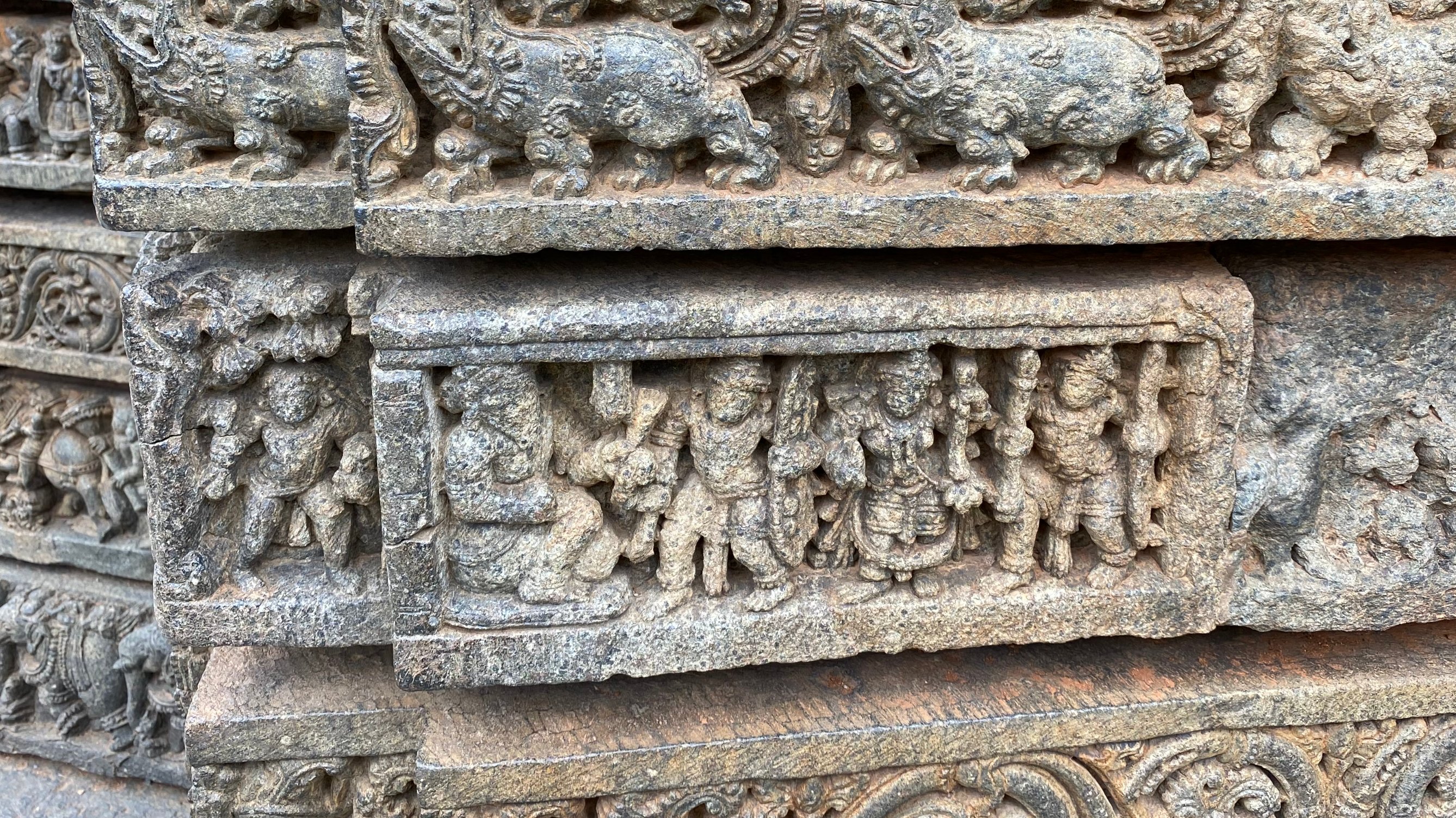 |
| Rama, Lakshmana & Sita enter the forest and are received by the Rishis |
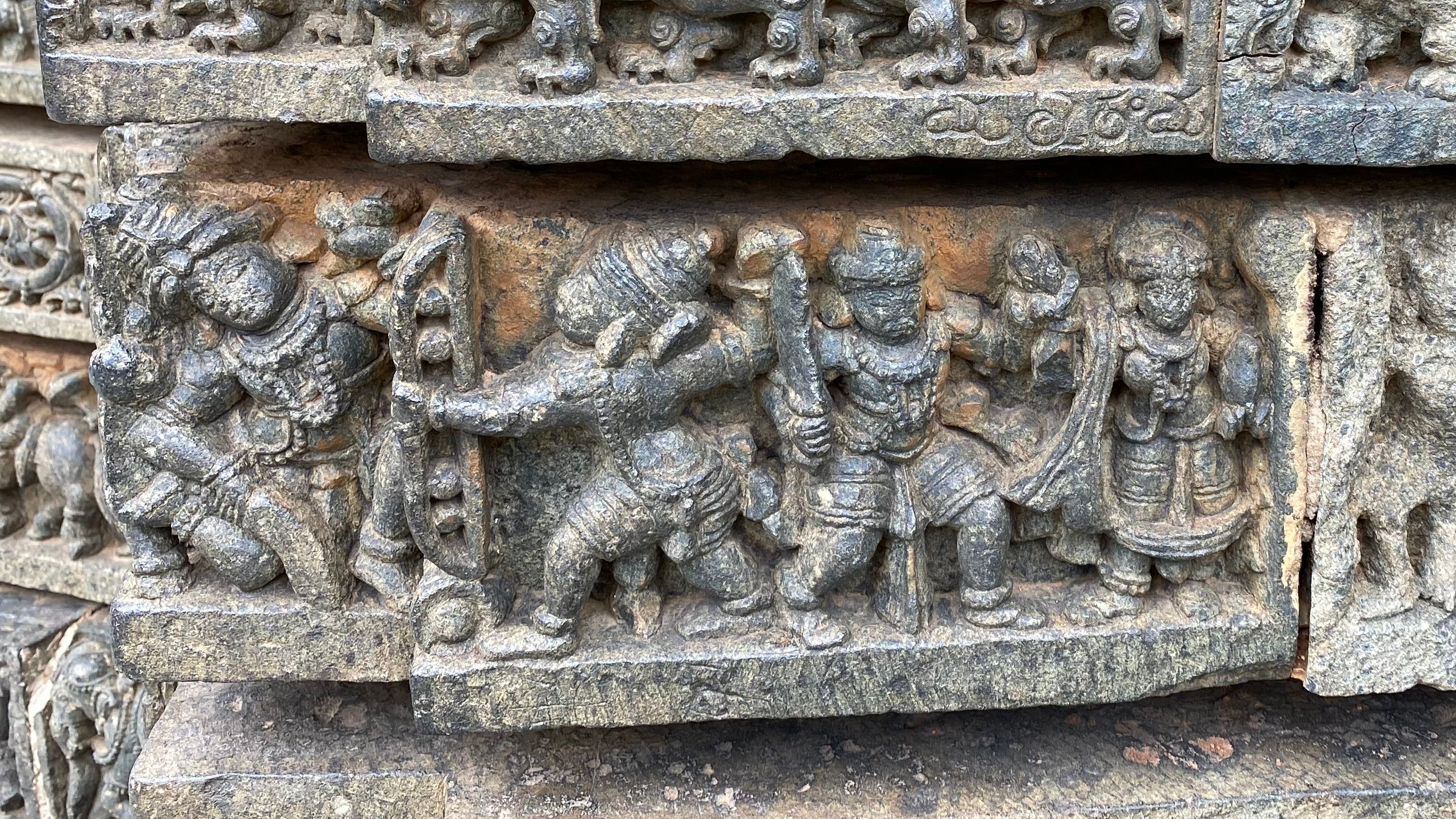 |
| Viradha, the rakshasa who tries to attack Sita is killed by Rama |
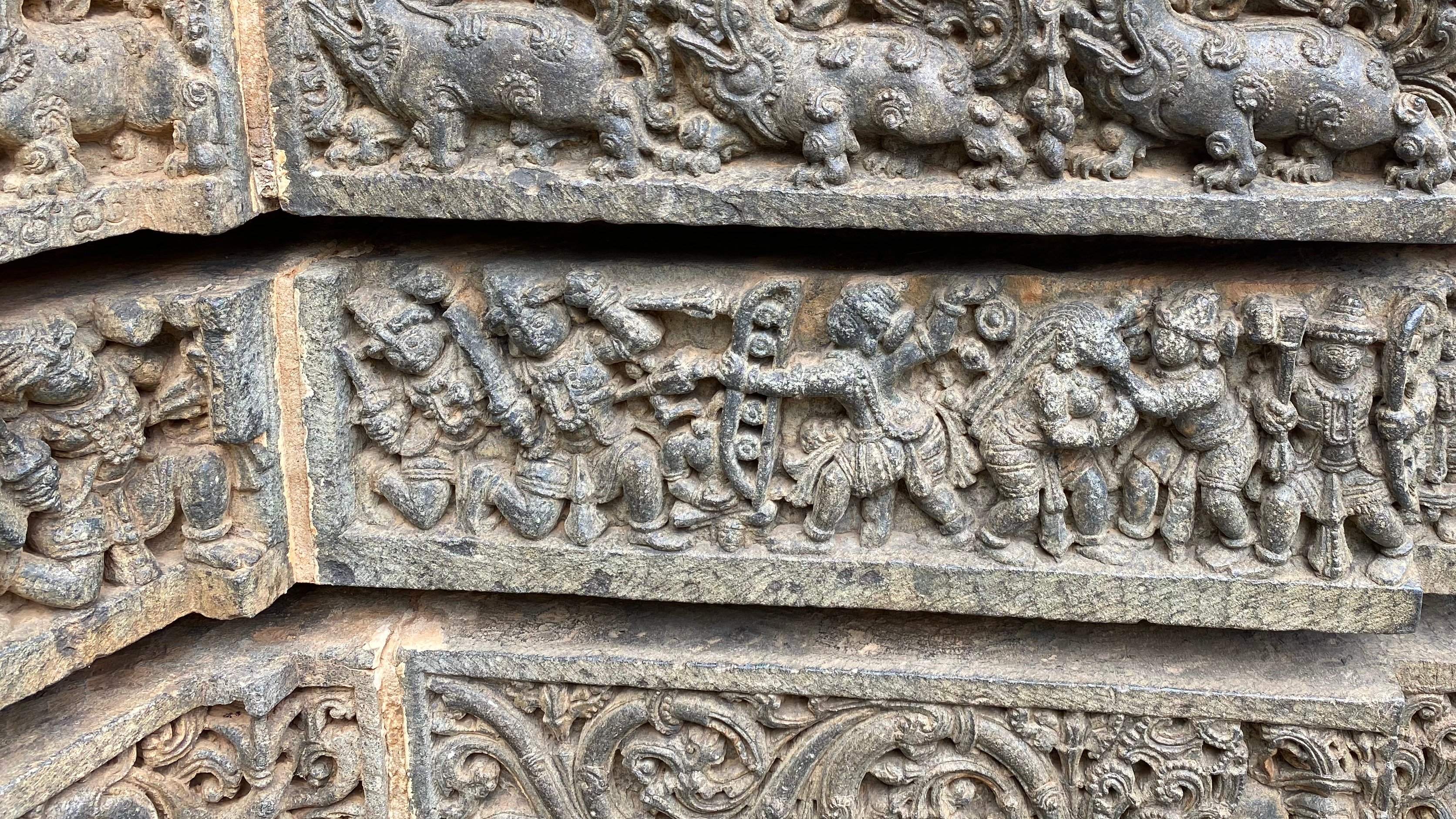 |
| This panel shows Lakshmana chopping off Surpanaki's nose. She is seen standing with her hands folded. In the next scene, Rama fights rakshasa brothers Khara and Dushana |
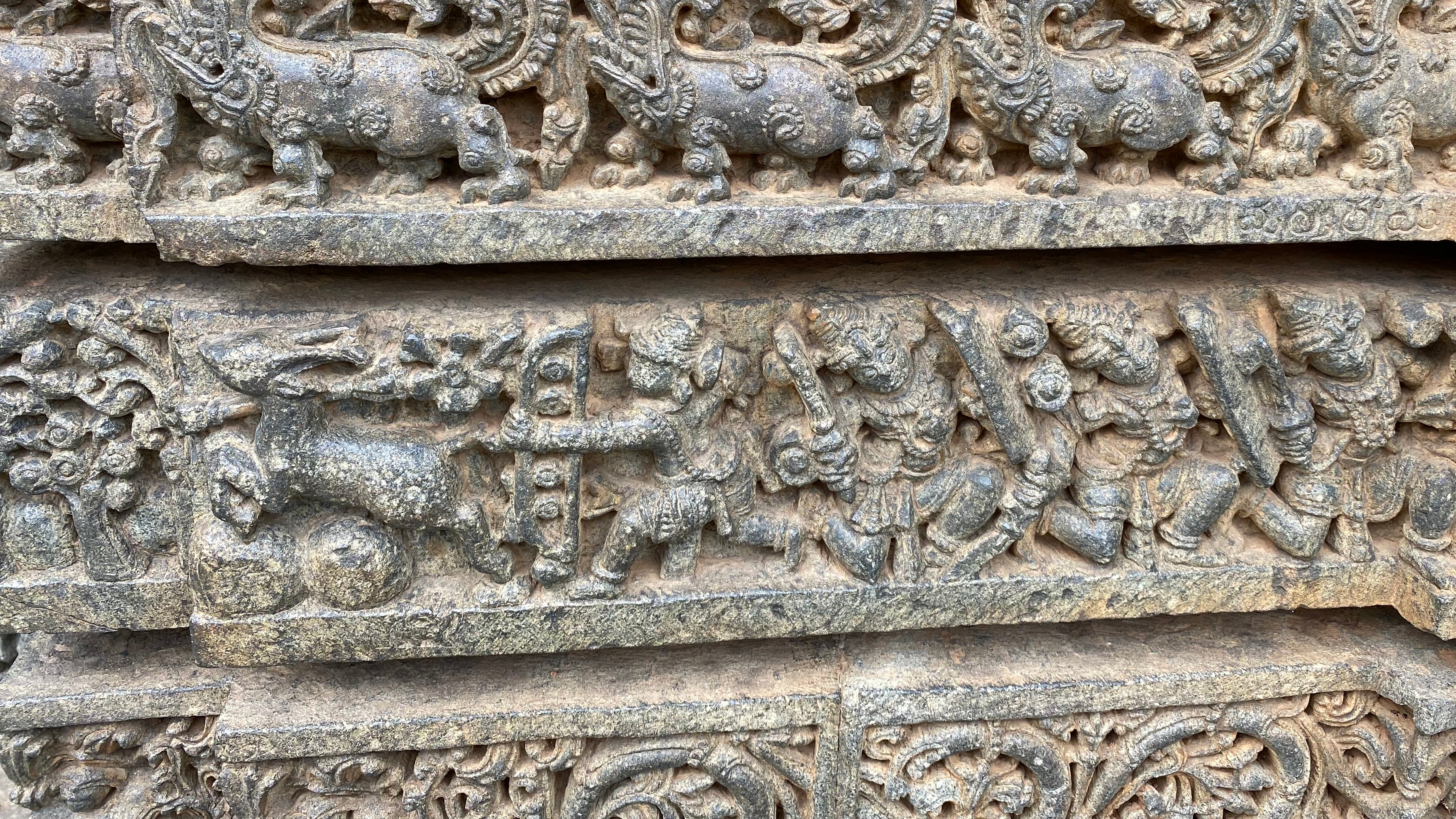 |
| Rama chases and kills Maricha who is in the form of a golden deer |
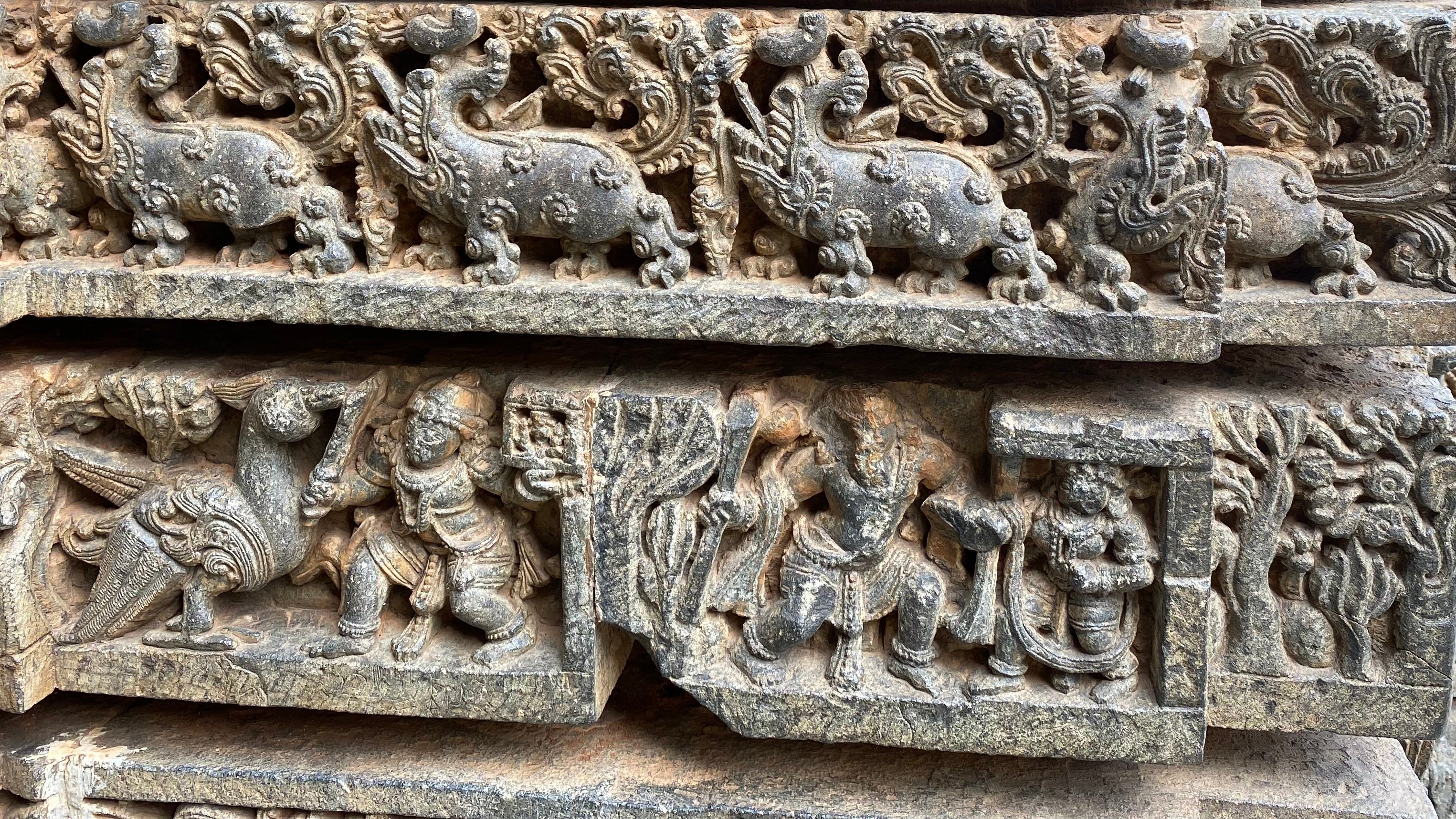 |
| Ravana abducts Sita. Following scene shows Jatayu fighting Ravana |
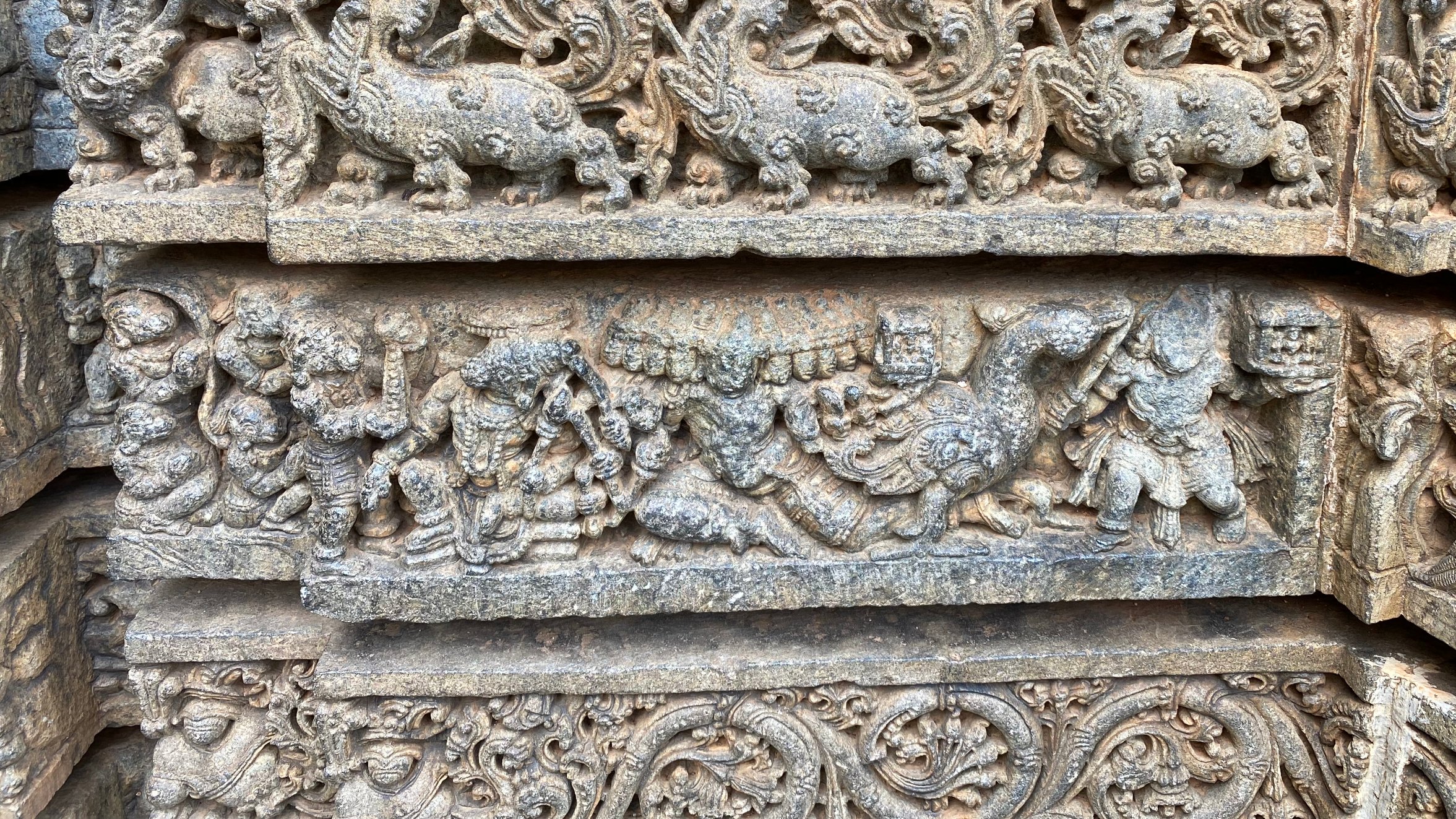 |
| Ravana kills Jatayu in battle. Sugreeva sees Sita's jewels |
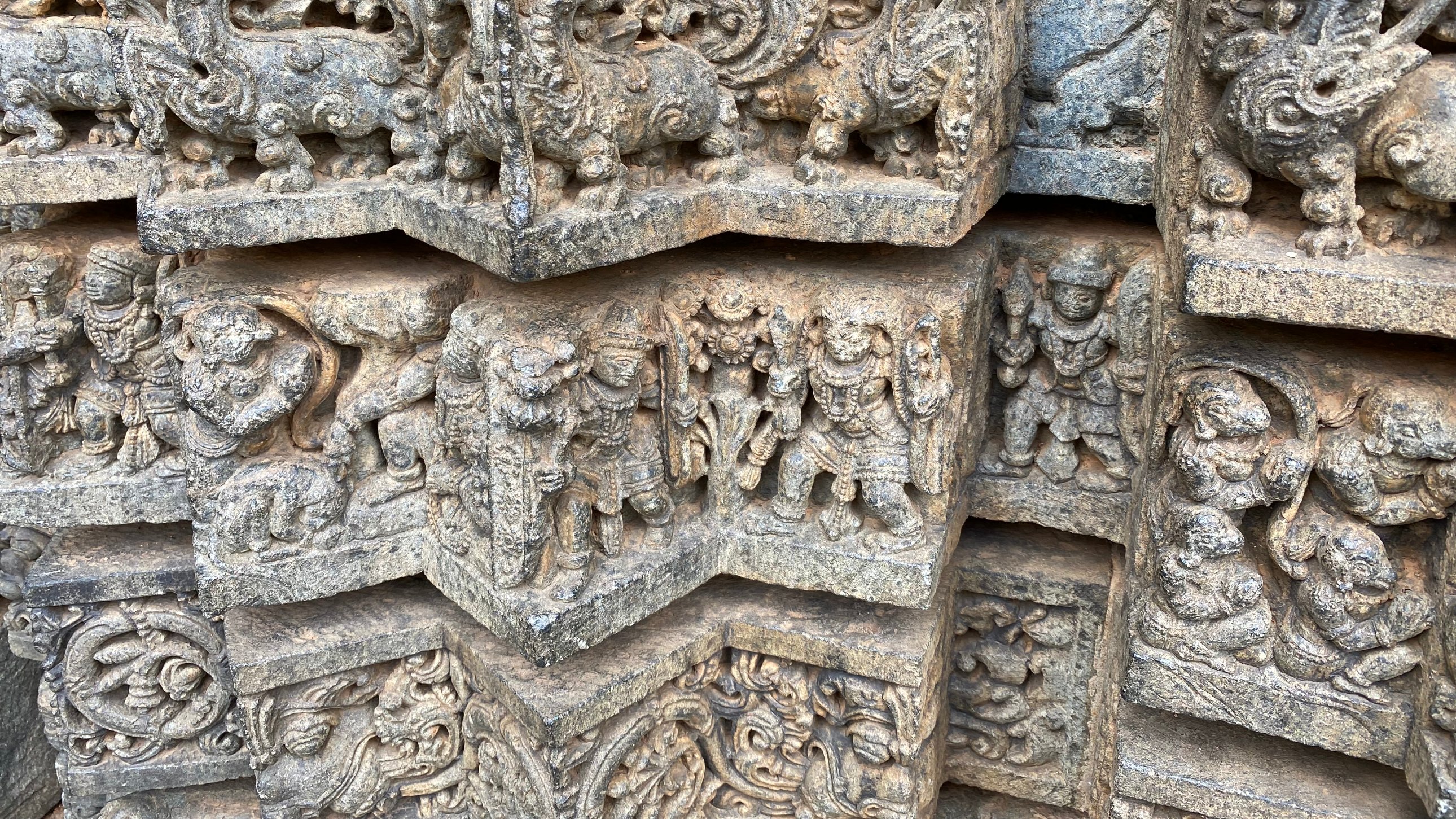 |
| The Ramayana panel ends here with the meeting of Hanuman with Rama & Lakshmana |
THE BHAGAVATA PANELS
The next set of panels depict the events surrounding Krishna's birth & childhood
 |
| The Bhagavata purana panels commence with Vishnu resting on Adishesha |
 |
| This panel shows the durbar of Vishnu & Lakshmi |
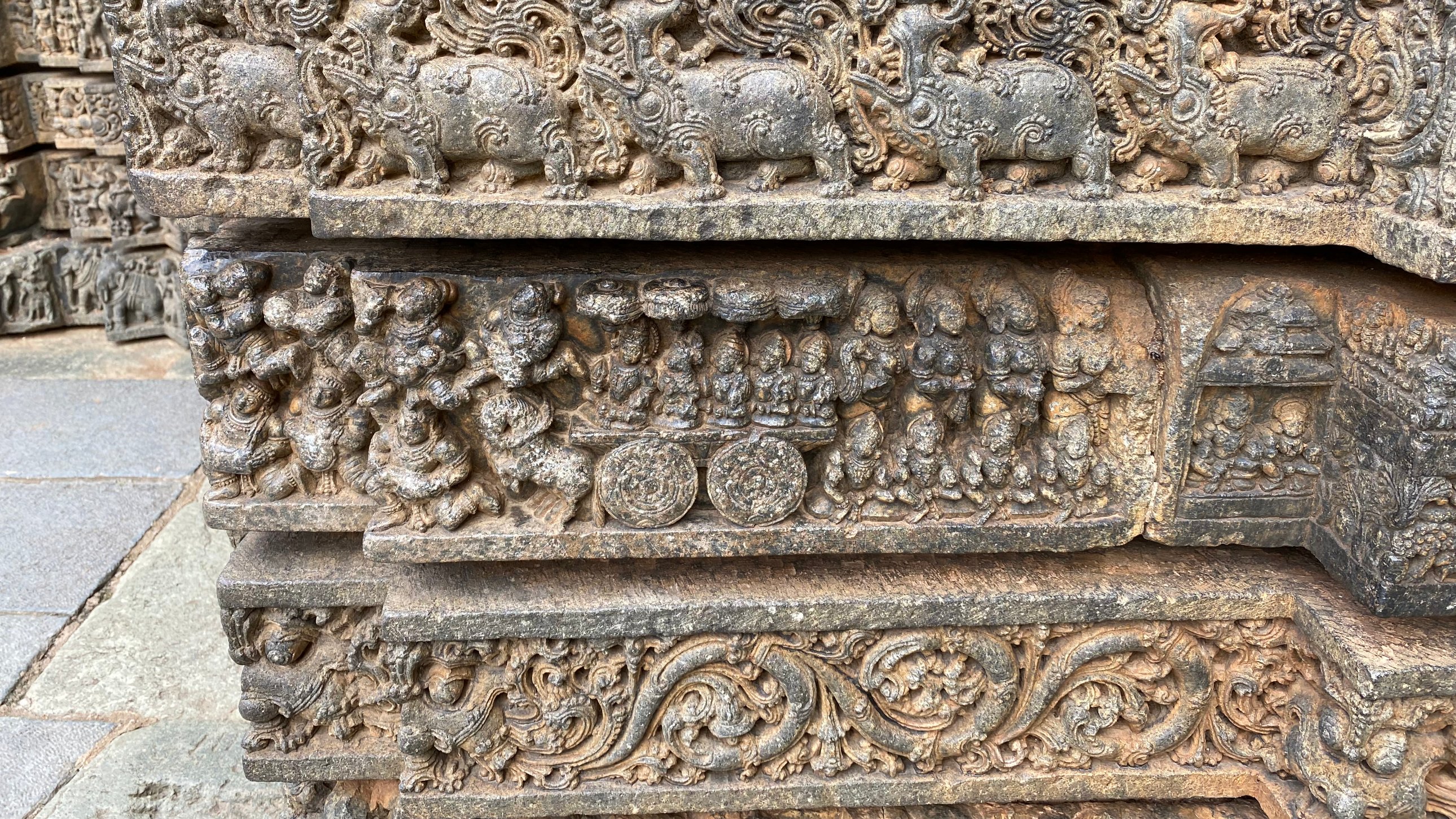 |
| Devaki-Vasudeva's marriage procession. Kamsa is the charioteer. |
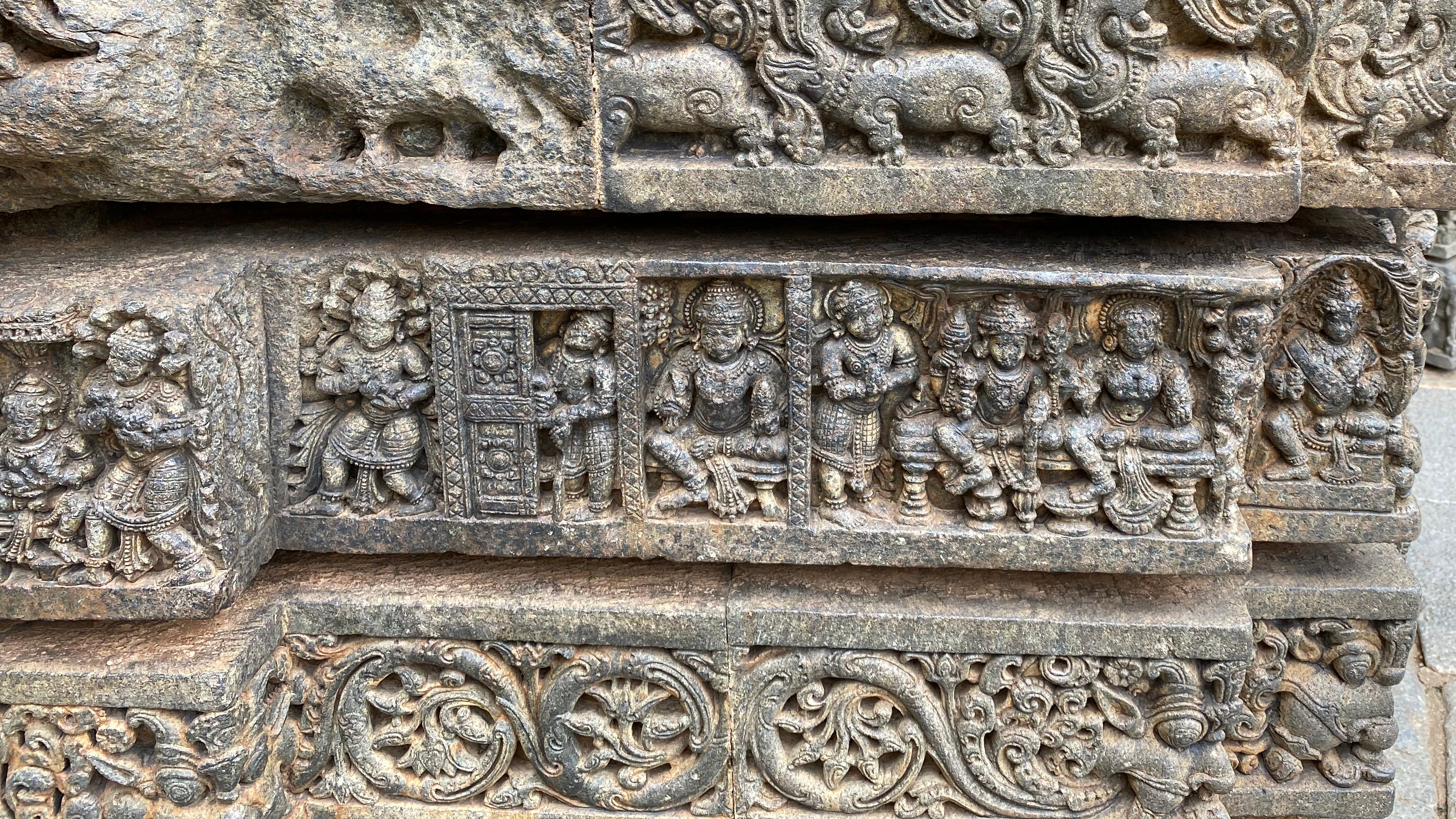 |
| Panel depicts Vasudeva exiting Kamsa's prison in Mathura. A prison guard is seen behind a door sleeping on the job. Vasudeva is seen crossing the Yamuna river holding the just born Krishna in his arms |
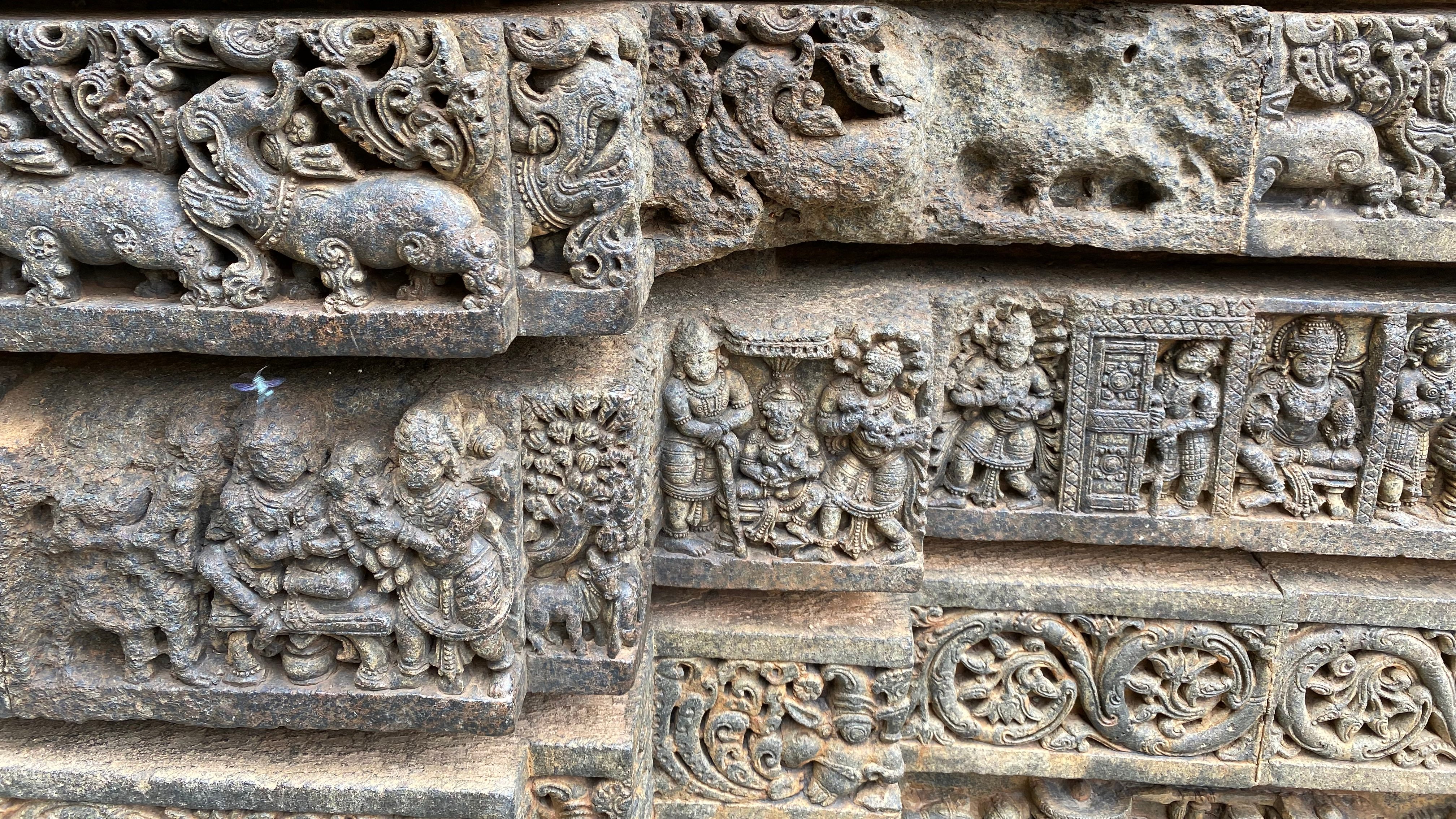 |
| Vasudeva arrives at Gokula. Panels depict him exchanging the new born Krishna with the girl baby (Yogamaya) of Yashoda |
 |
| Two panels showing Krishna being handed over to Gopi at Gokula & Kamsa dreaming of Krishna's escape from Mathura |
 |
| News of Krishna's escape being confirmed to Kamsa by prison guards |
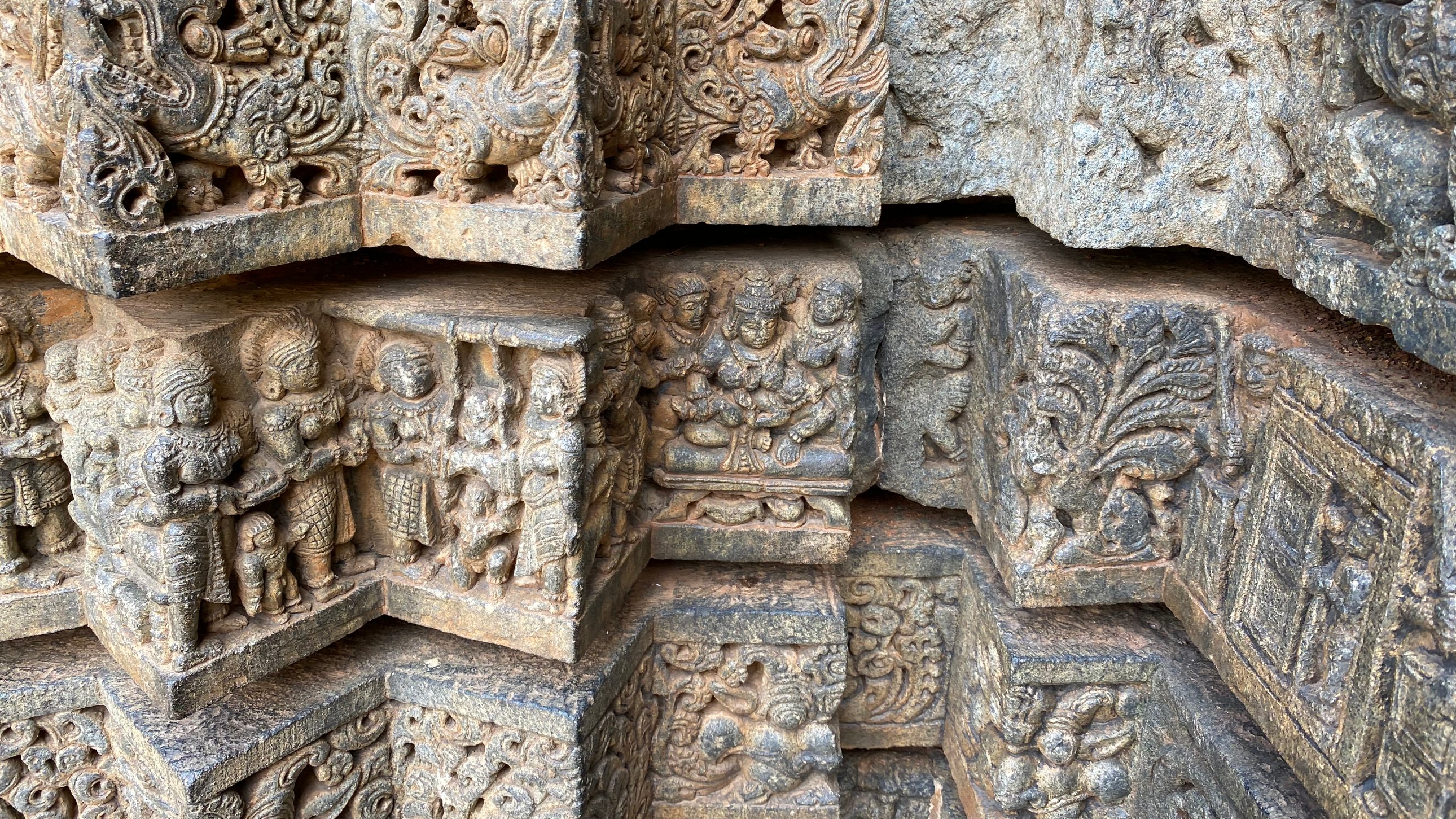 |
| Panels depicting Krishna being brought up in Gokula, rocked in a swing, fed milk by Yashoda |
 |
| Panel showing Krishna killing Putana rakshasi |
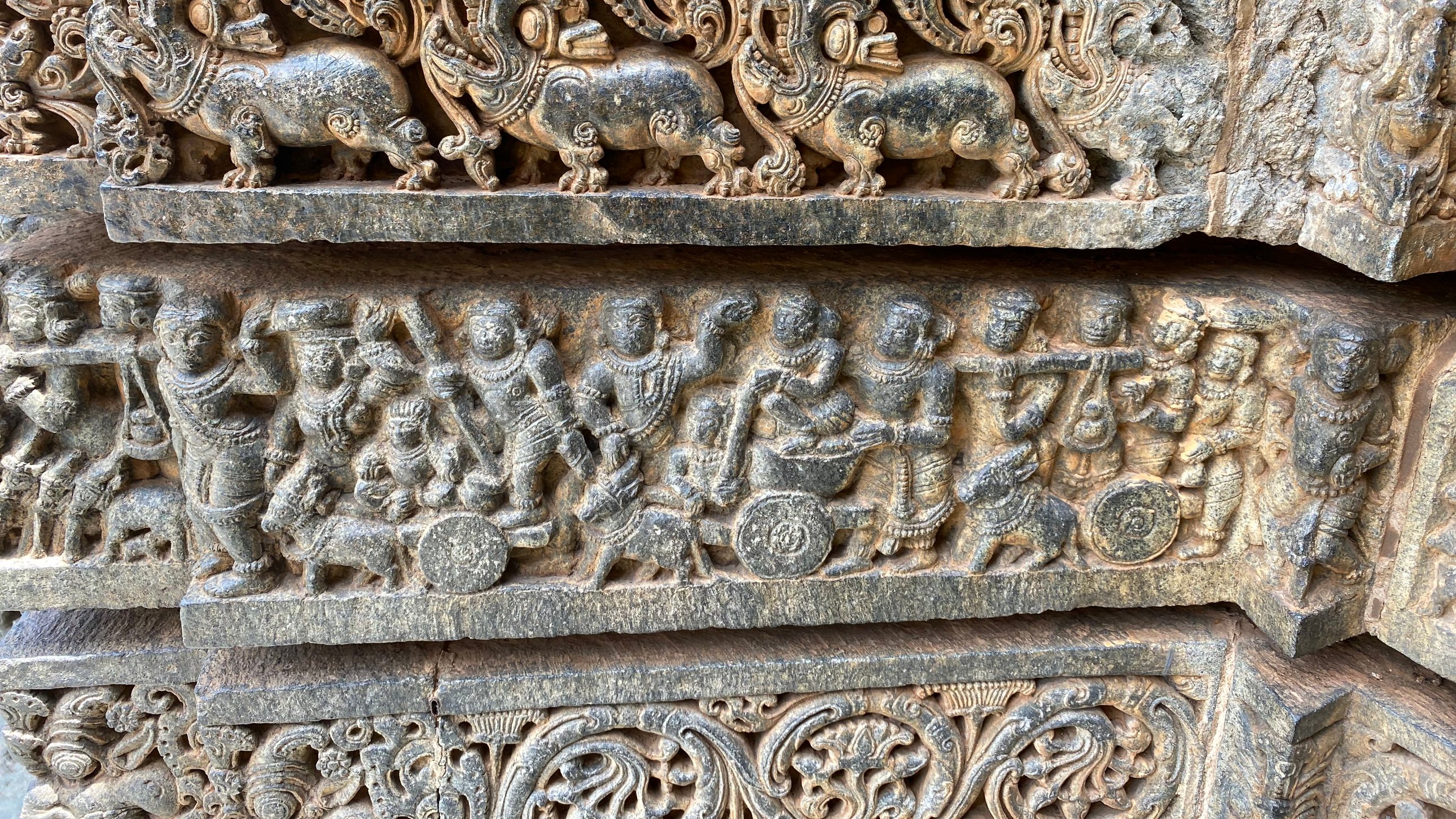 |
| People of Gokula traveling to Nanda's house to meet Krishna |
 |
| Krishna kicking the cart & thereby killing Sakatasura |
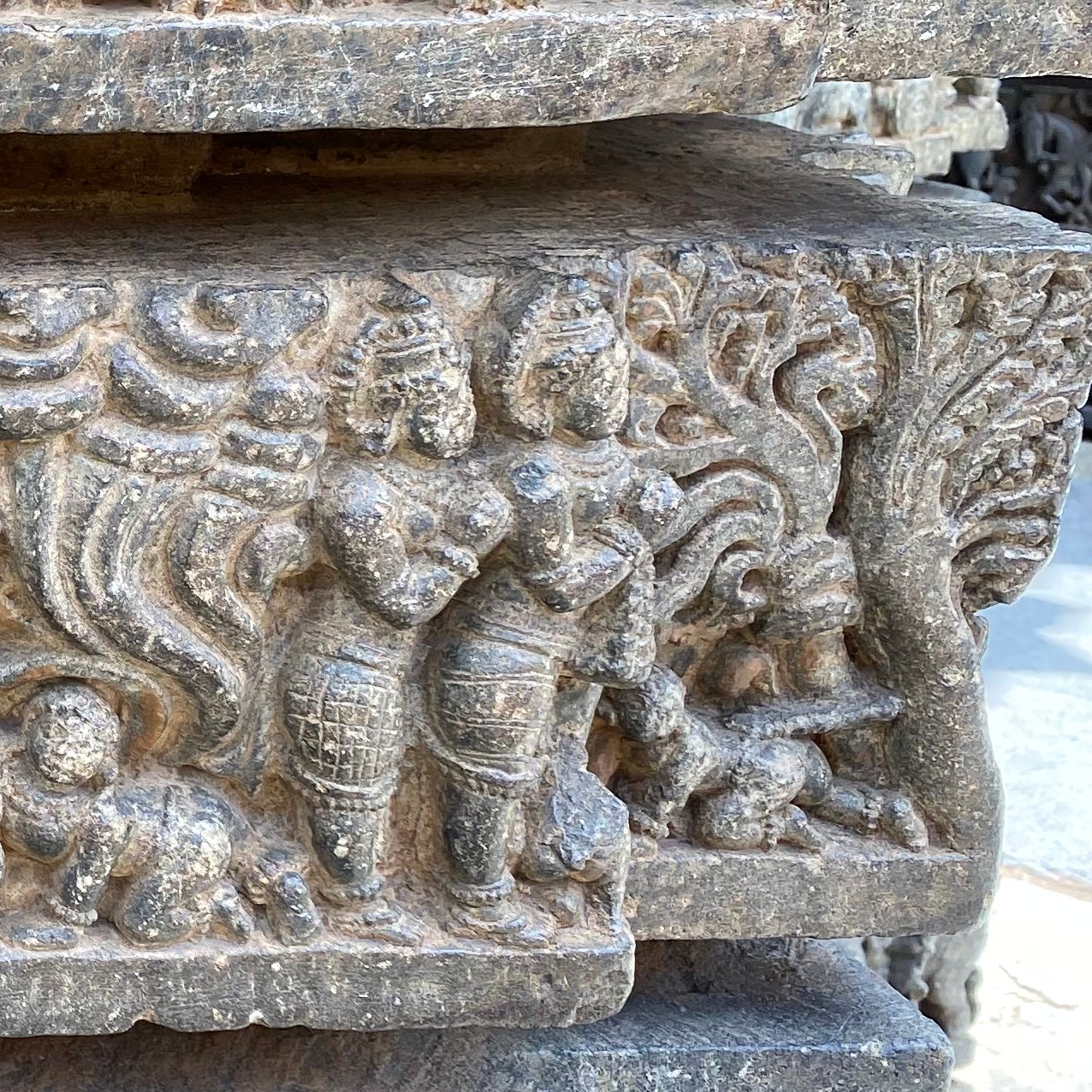 |
| Krishna uproots the Arjuna tree, liberating Nalakubara & Manigriva |
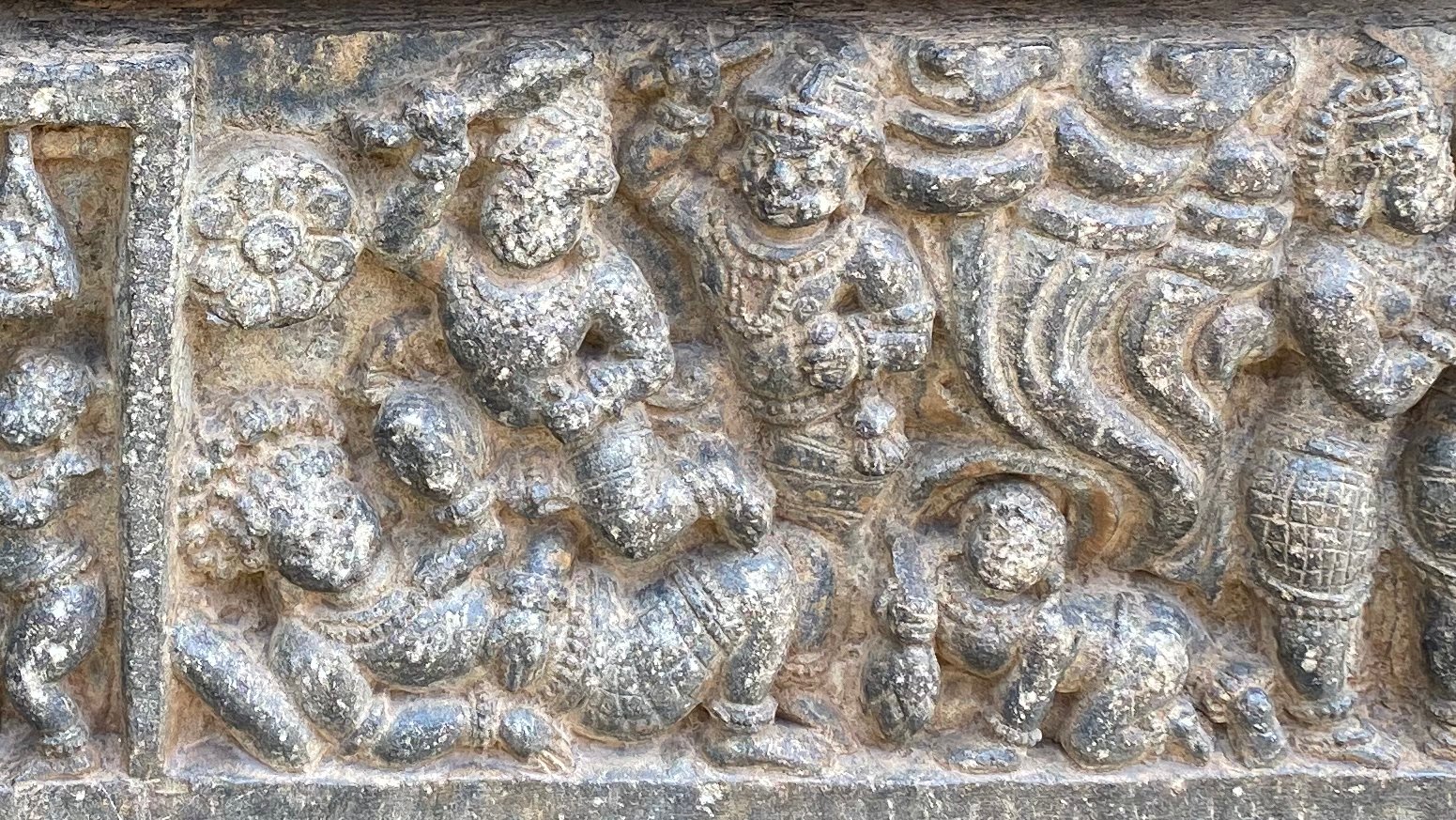 |
| Krishna kills Bakasura, a rakshasa in form of a crane |
 |
| Krishna stealing butter |
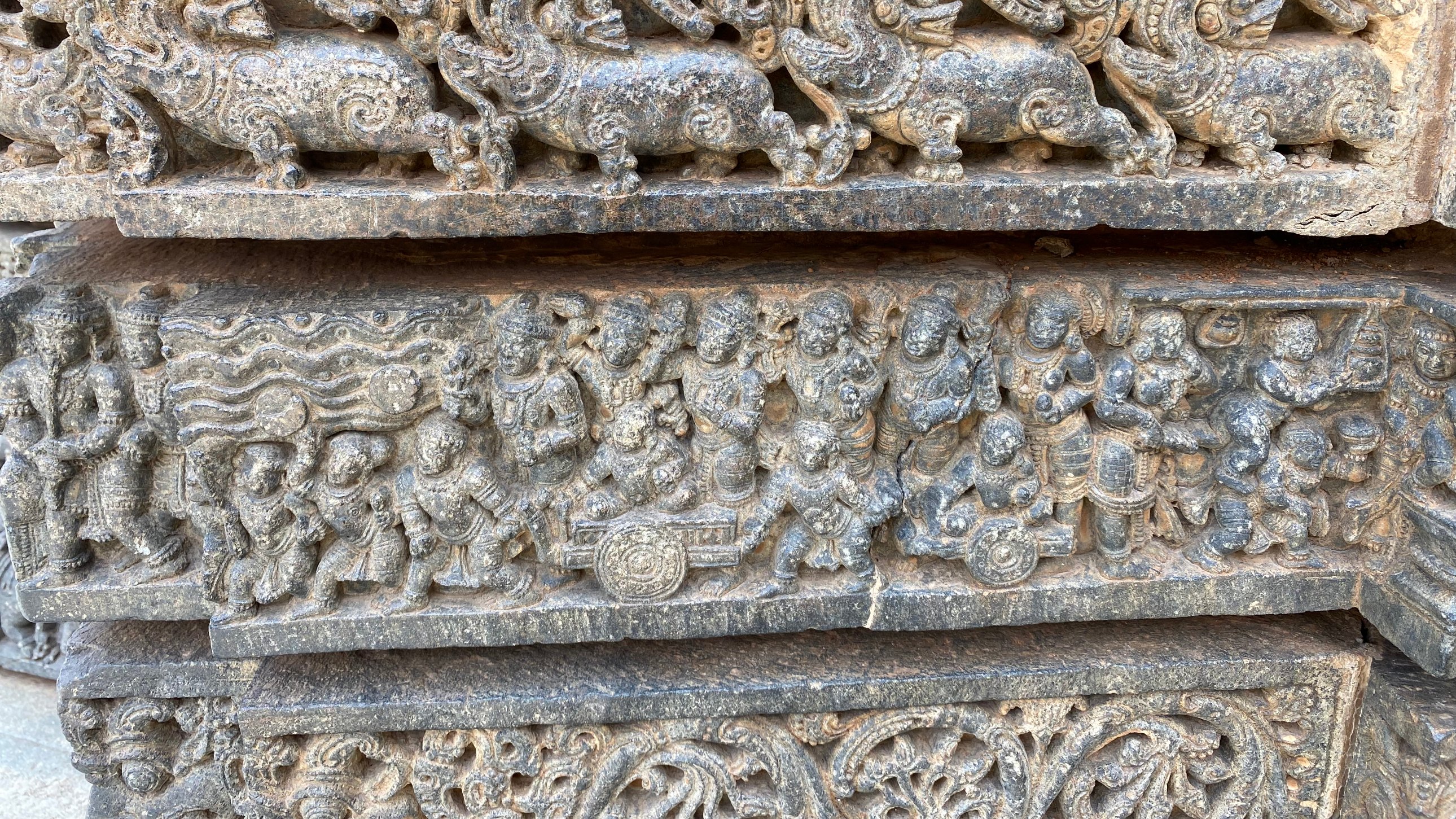 |
| People of Gokula migrating to Vrindavana |
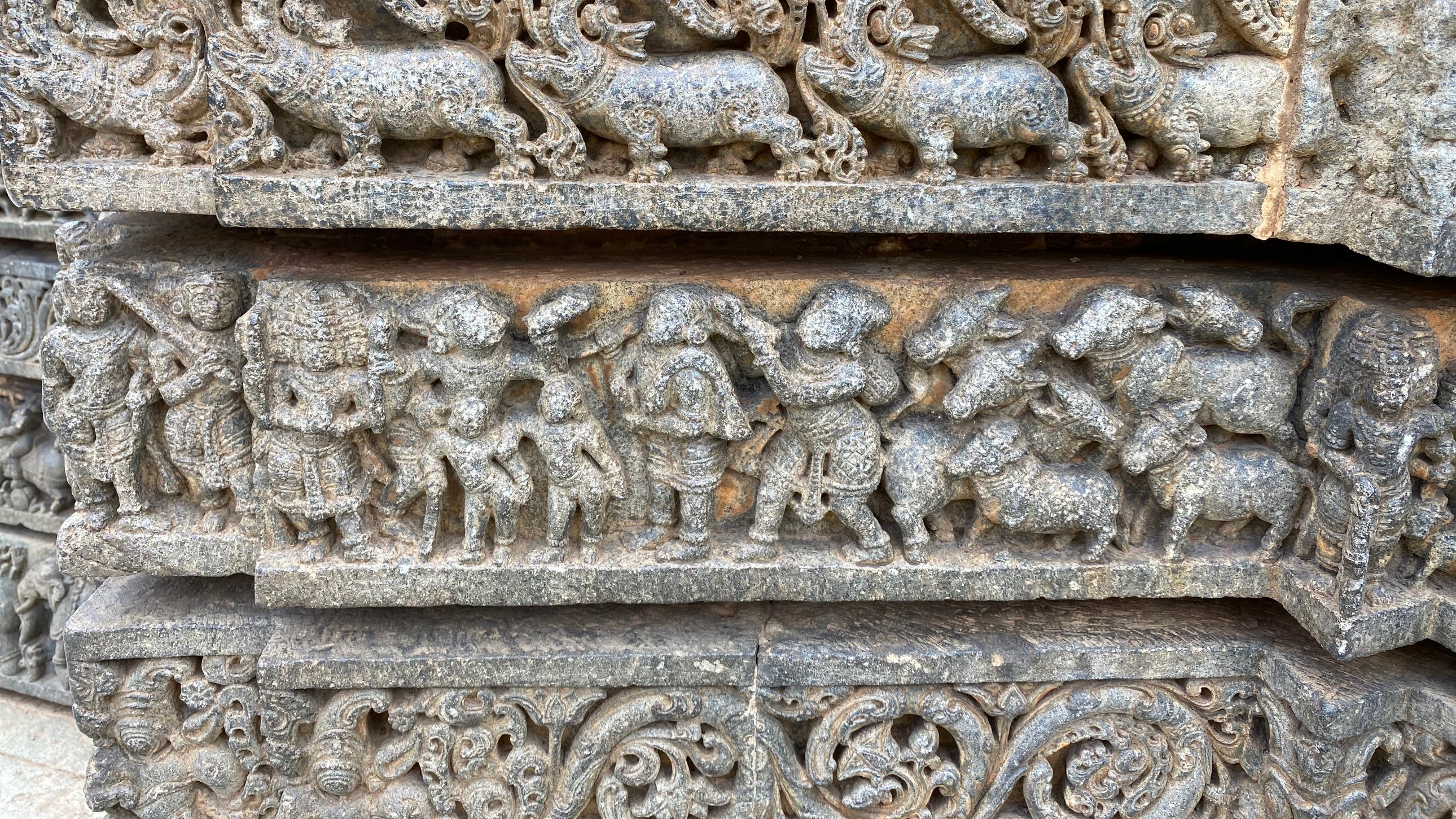 |
| Krishna grants Vishvaroopa darshana to cowherds |
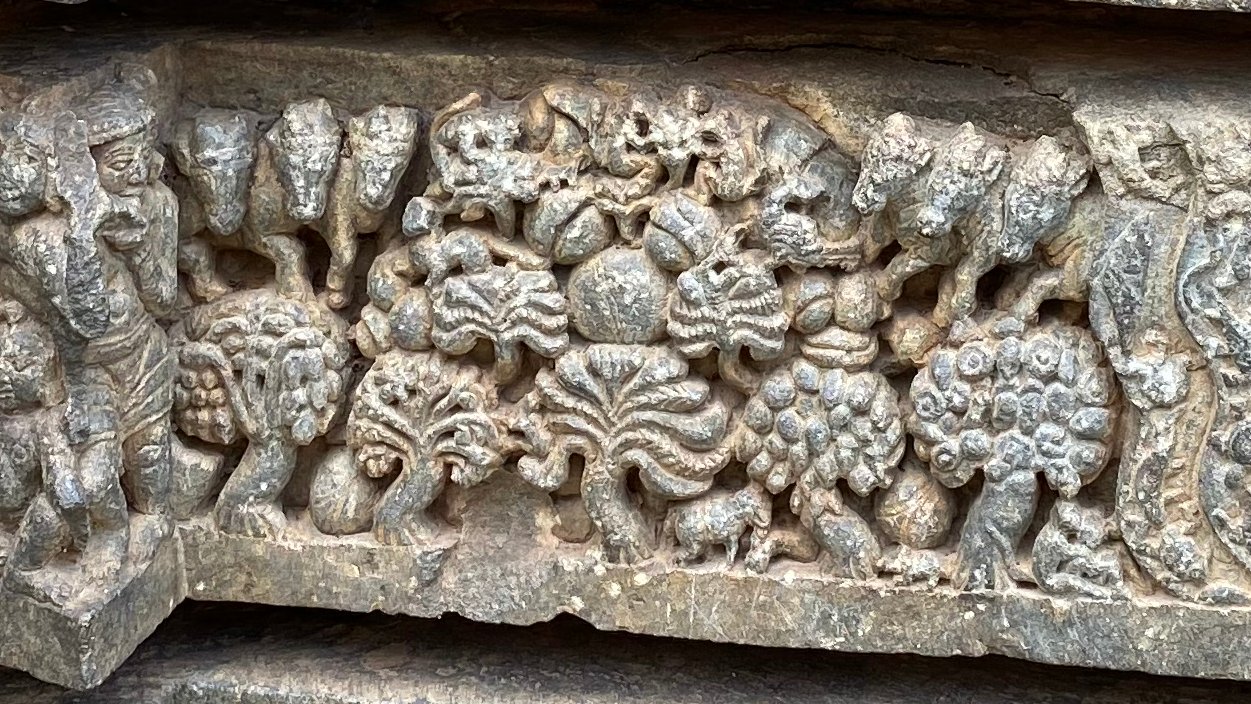 |
| Krishna plays in the groves on the banks of the Yamuna river |
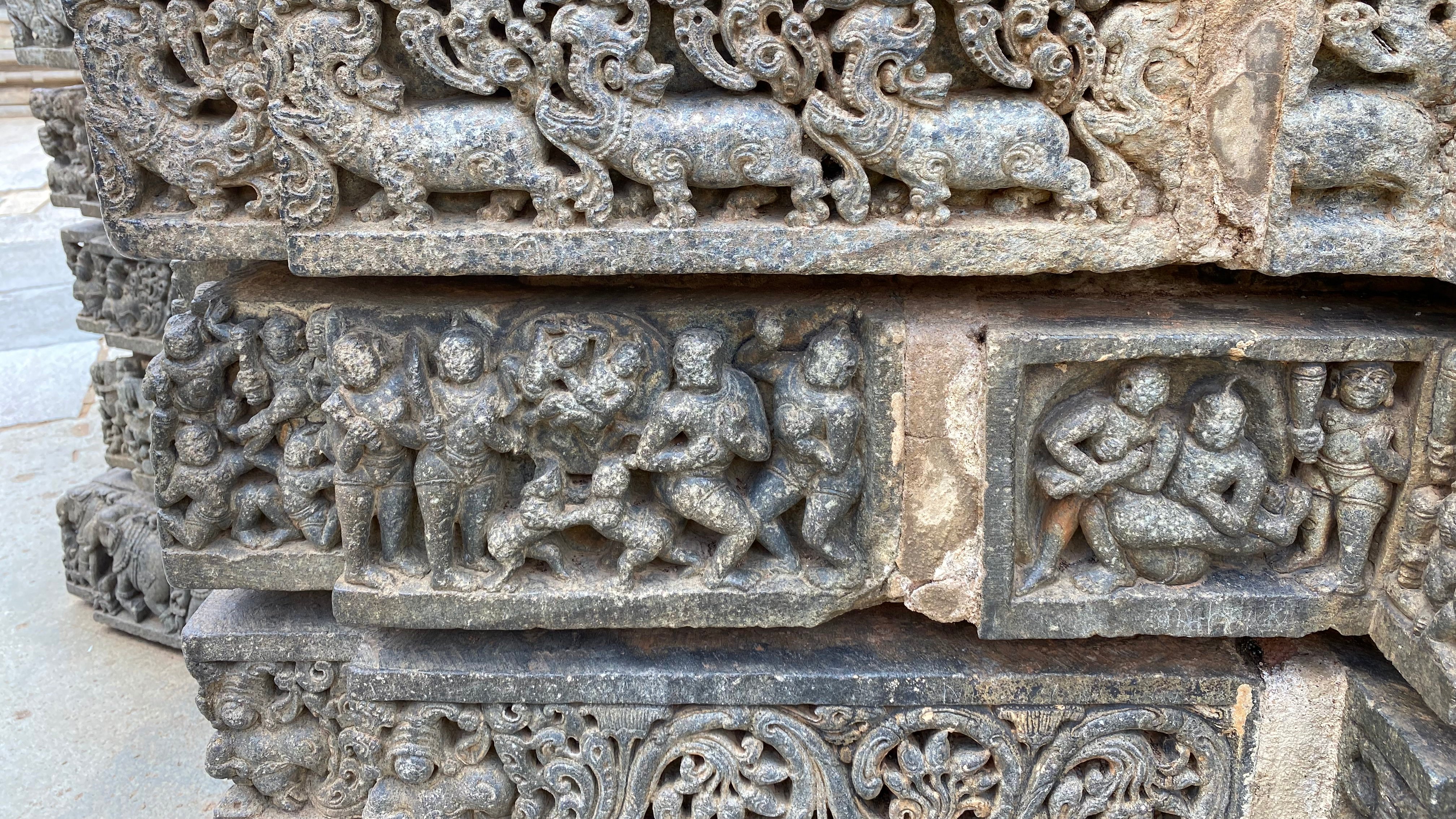 |
| Krishna wrestles with Chanura, Mushtika & other wrestlers |
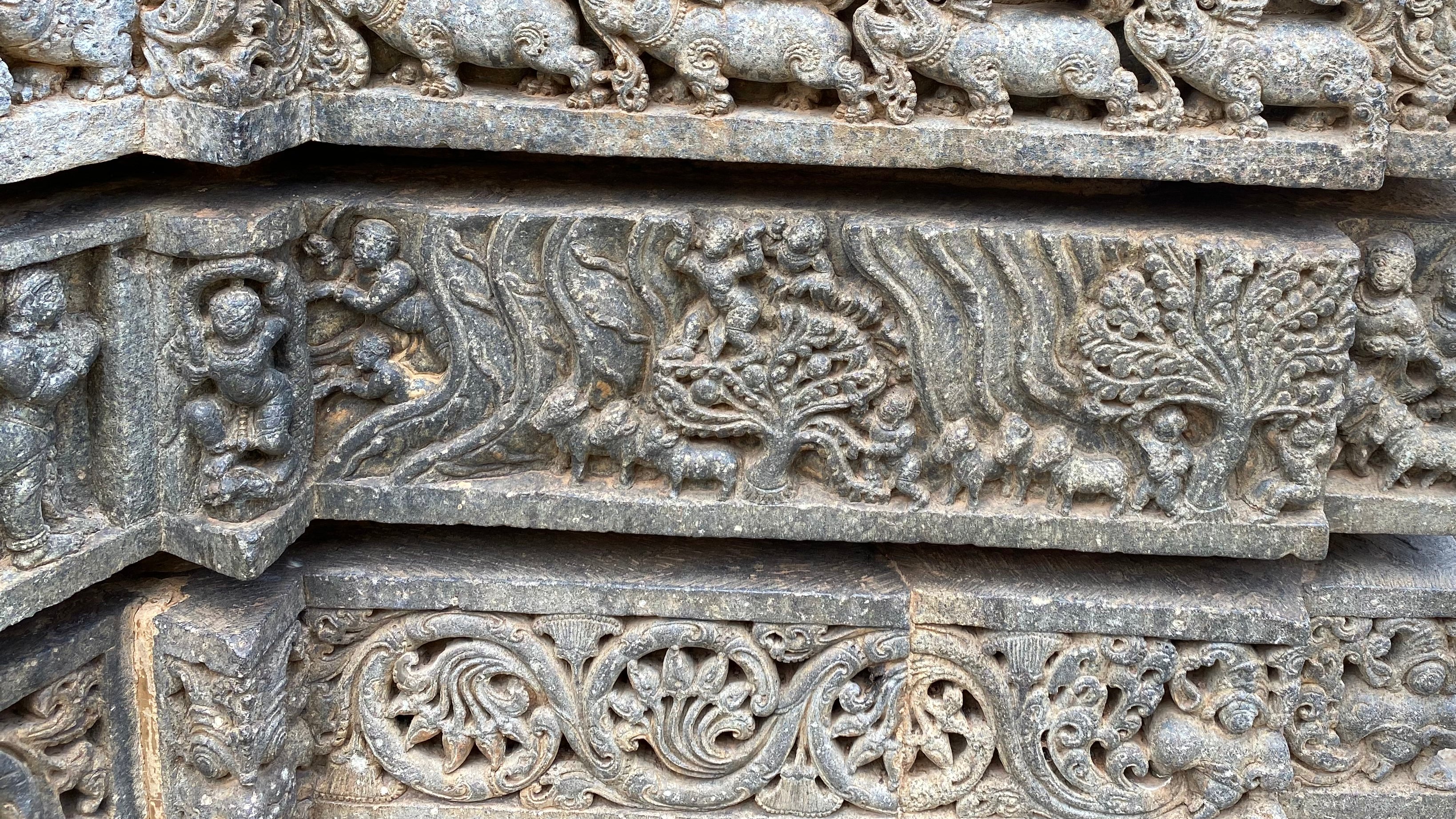 |
| Krishna dancing on Kaliya's hood after subduing him |
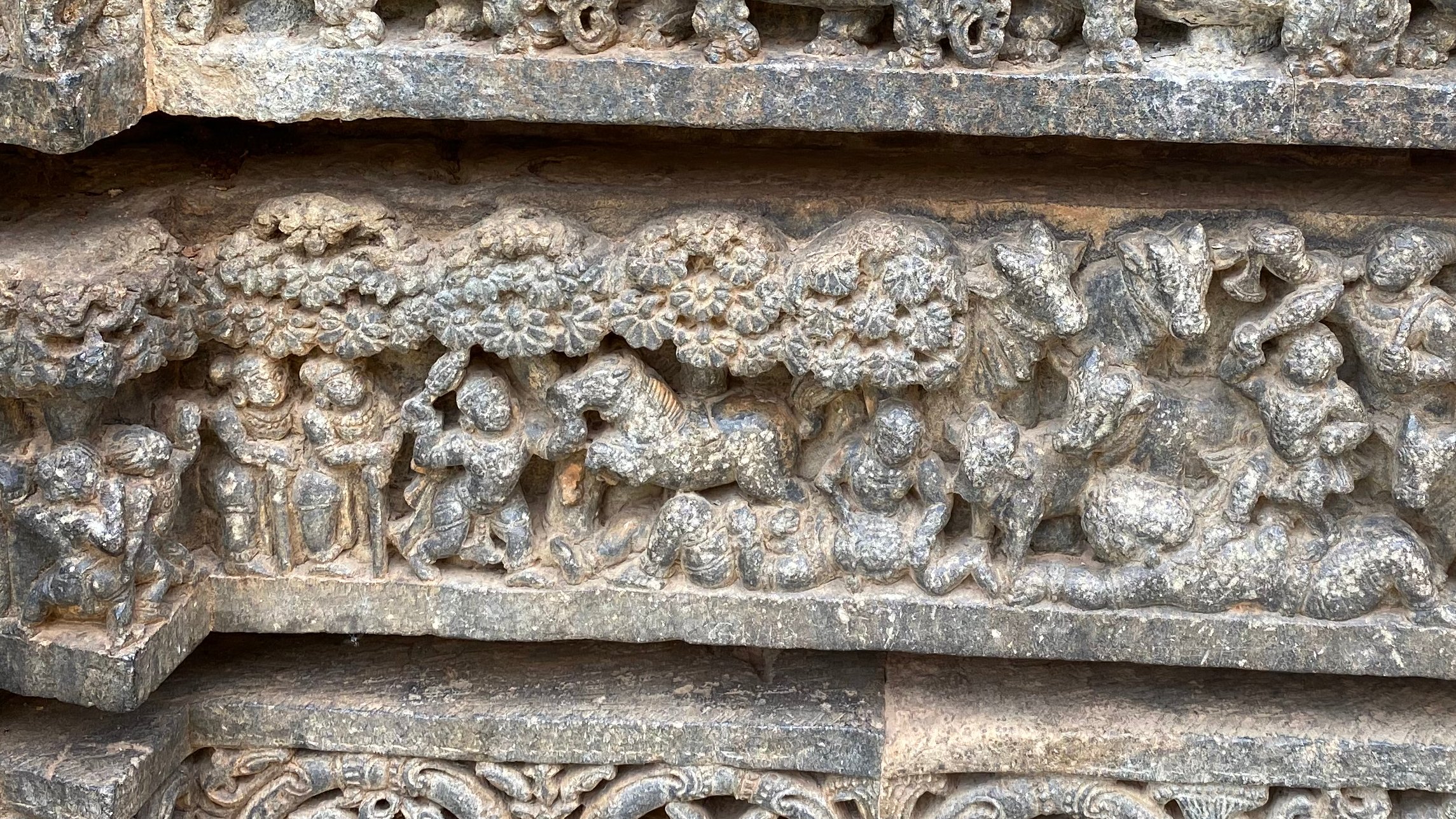 |
| Balarama kills Dhenukasura, the asura in form of a donkey |
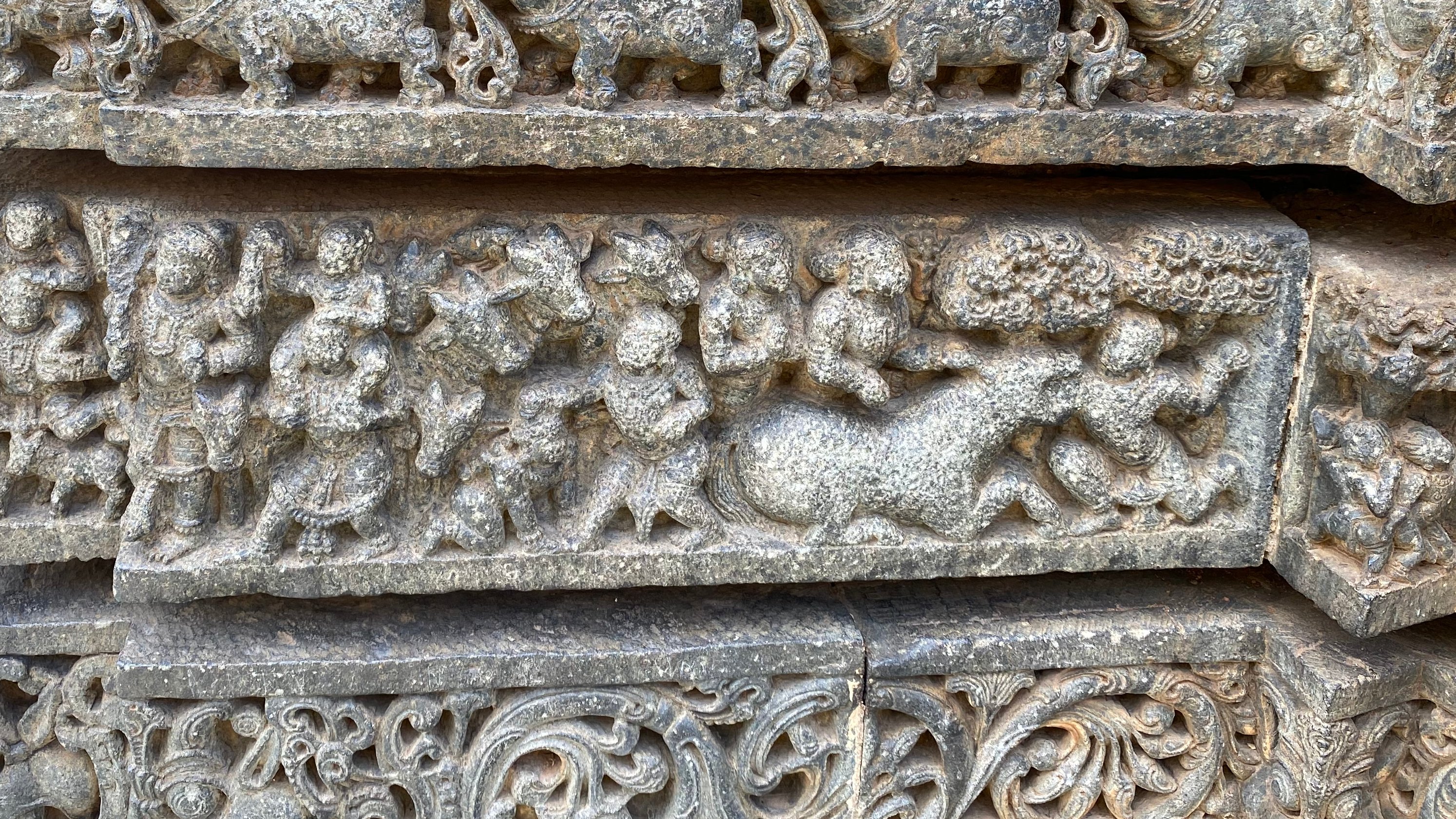 |
| Krishna kills Gardabhasura, a donkey shaped asura with the tail of a horse |
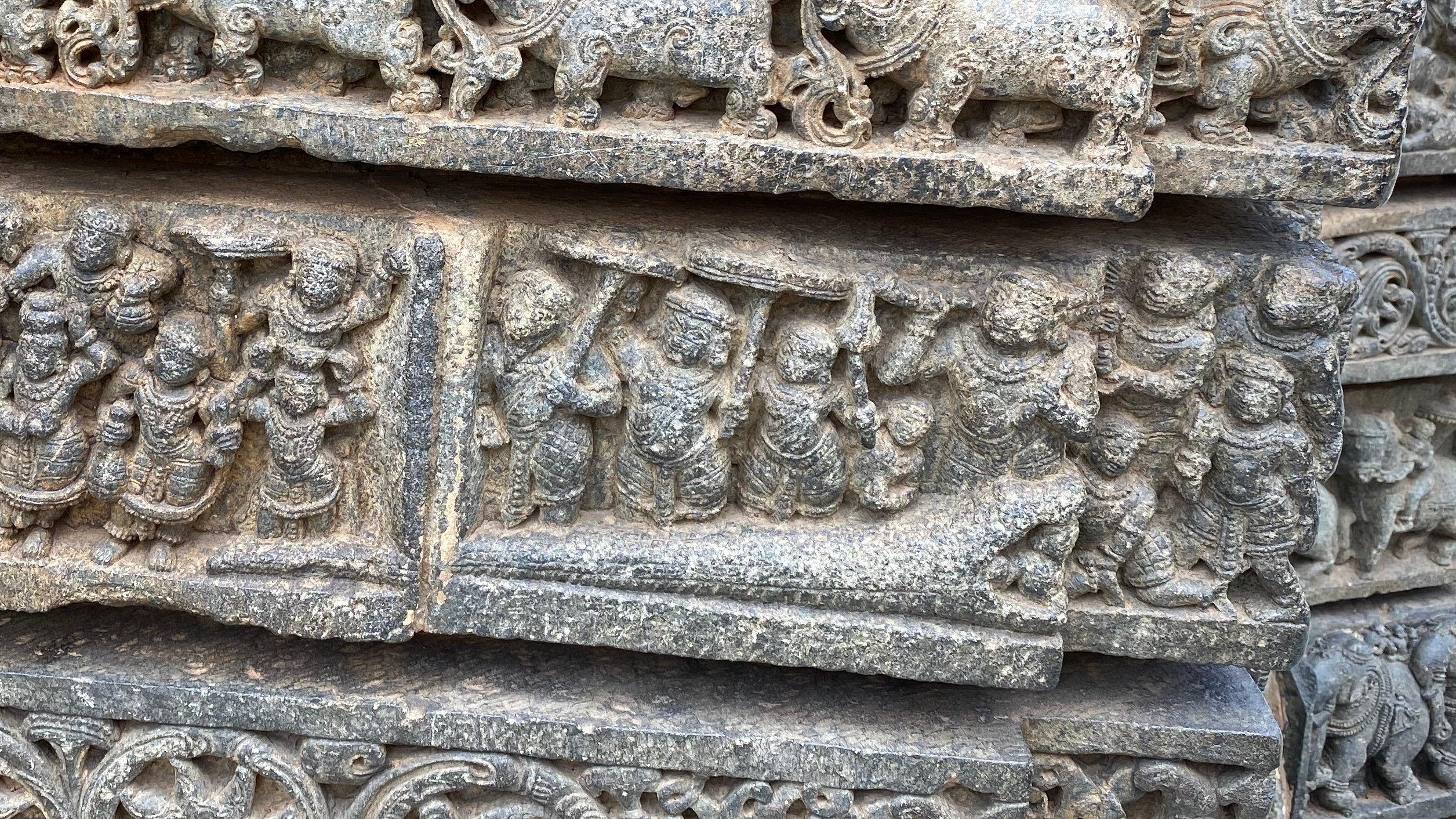 |
| Krishna kills Aghasura, who assumes the form of a Python |
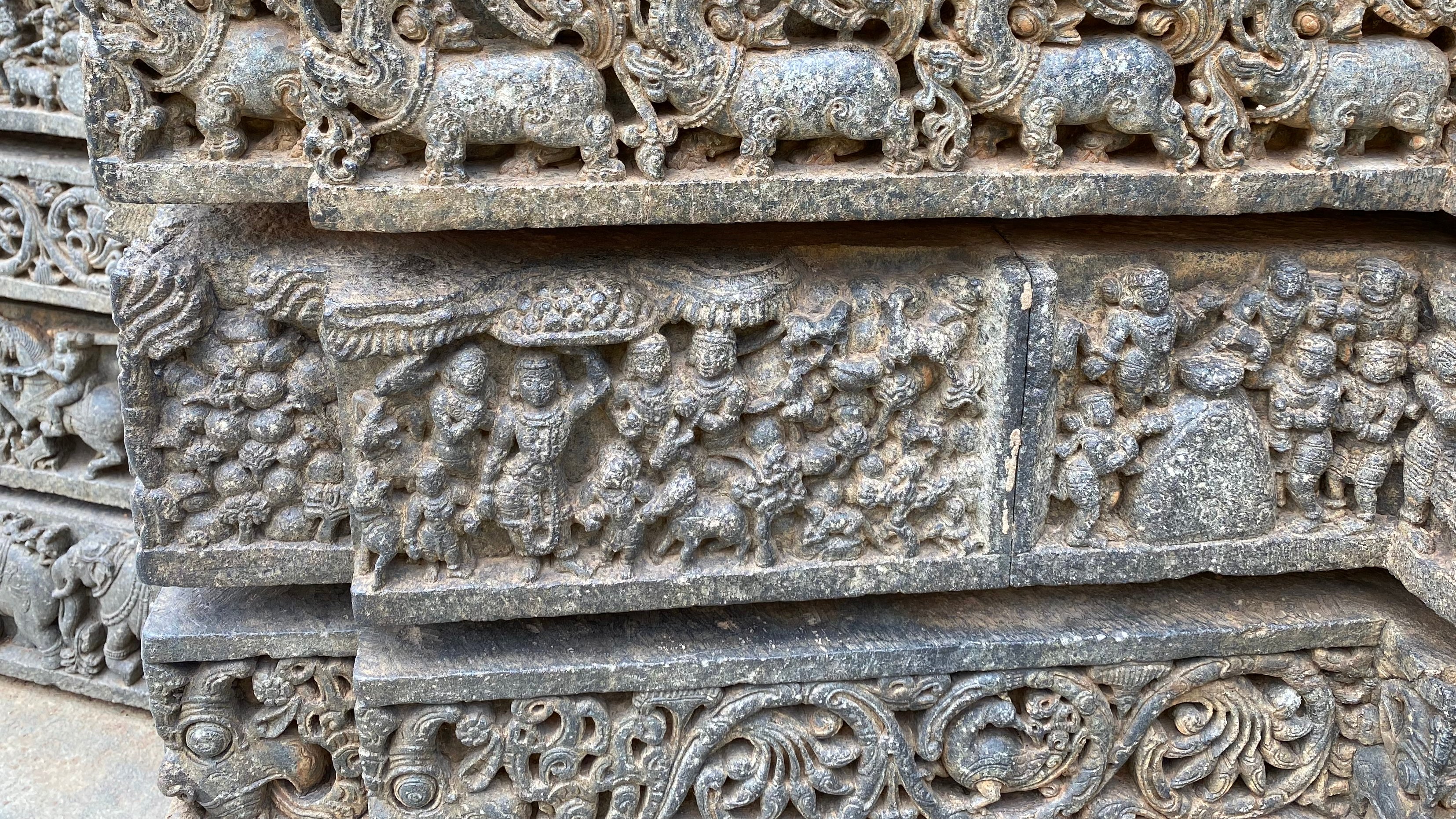 |
| Krishna lifting the Govardhana mountain. Indra is seen praying to him |
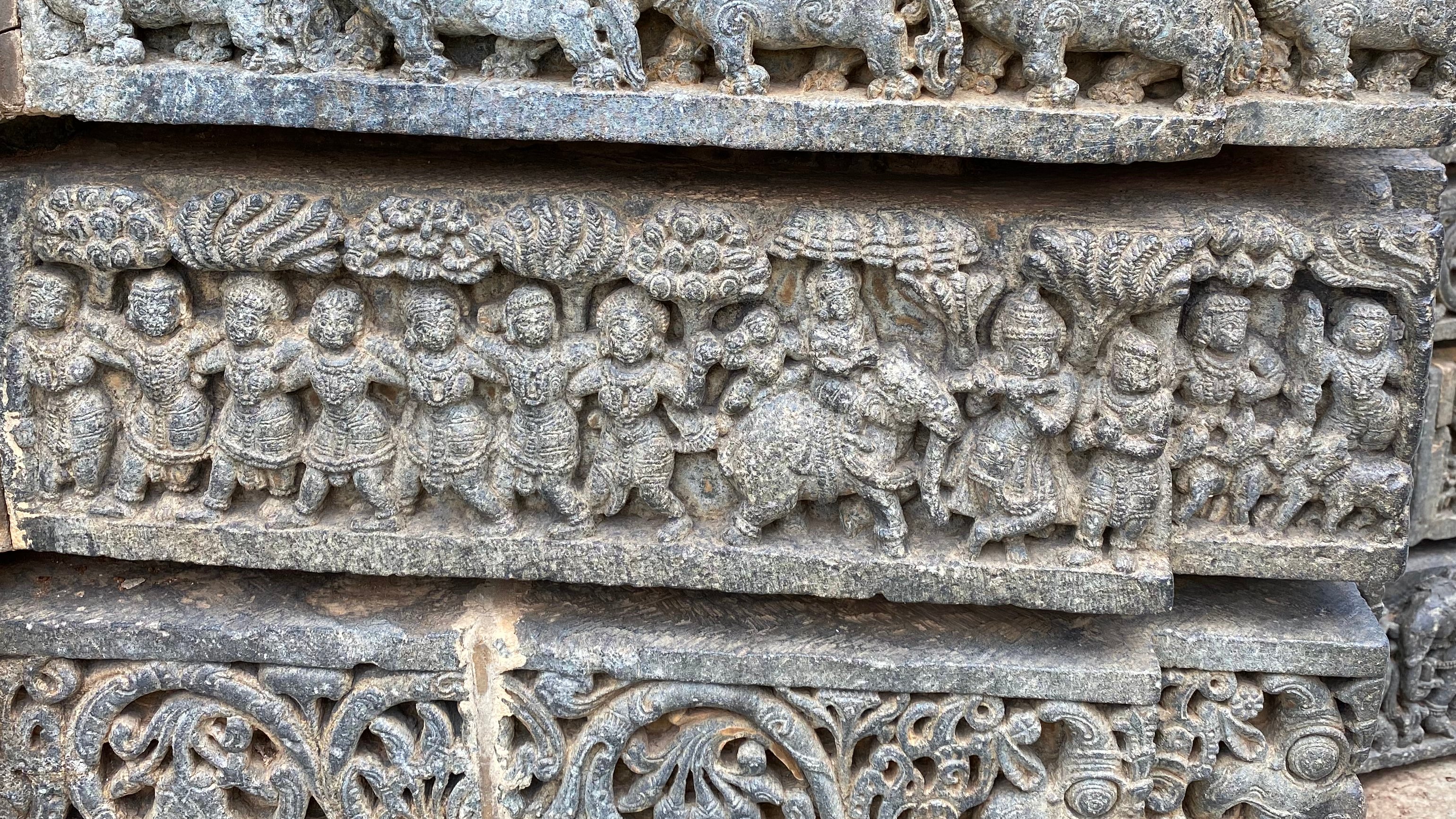 |
| Indra seen seated on his vahana, Airavata coronates Krishna. Indra gives the name "Govinda" to Krishna on this occasion |
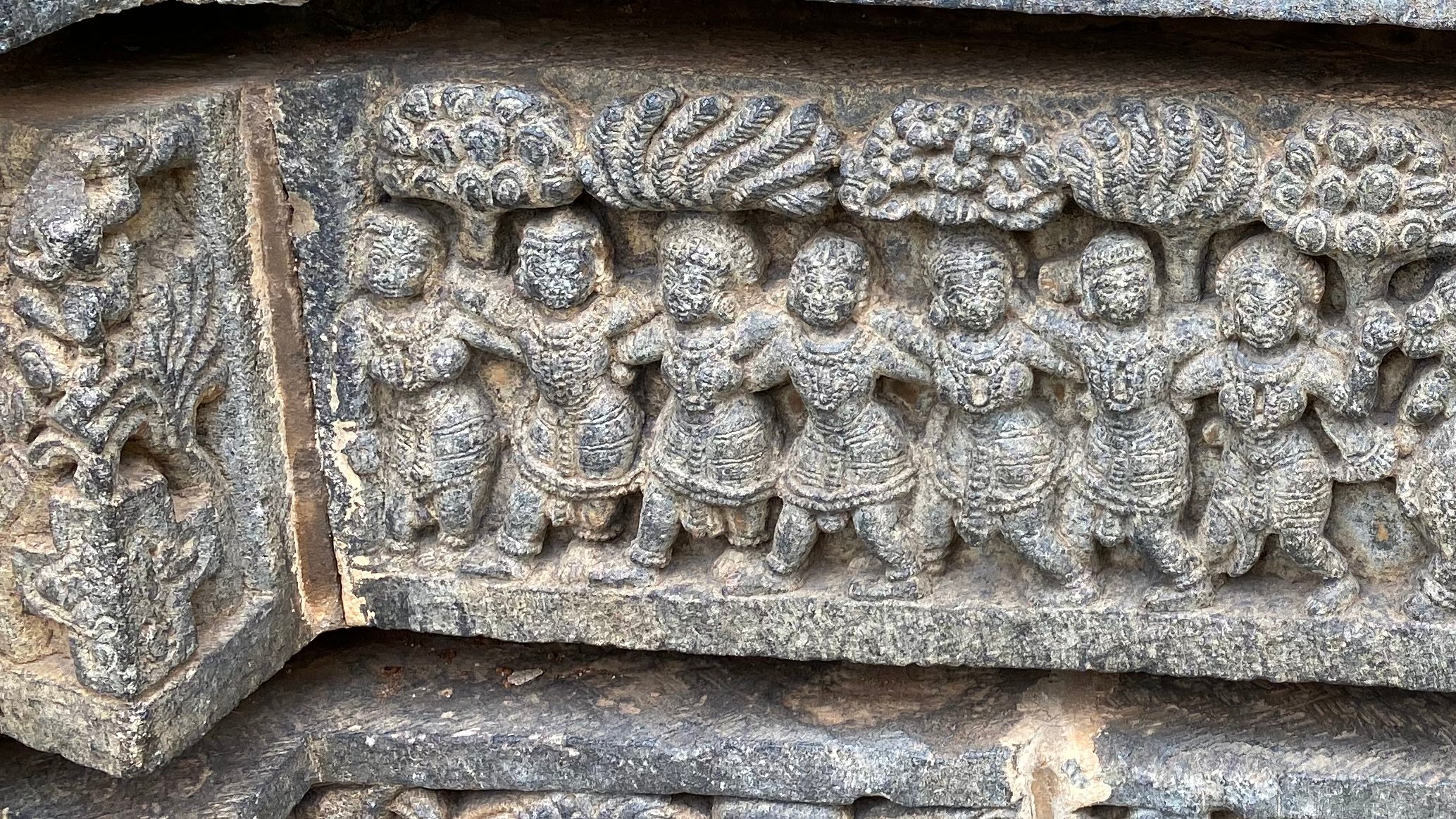 |
| Panels depicting Krishna's Rasakrida with Gopis |
 |
| Krishna kills asura Vyoma |
 |
| Scenes depicting Krishna's arrival at Mathura |
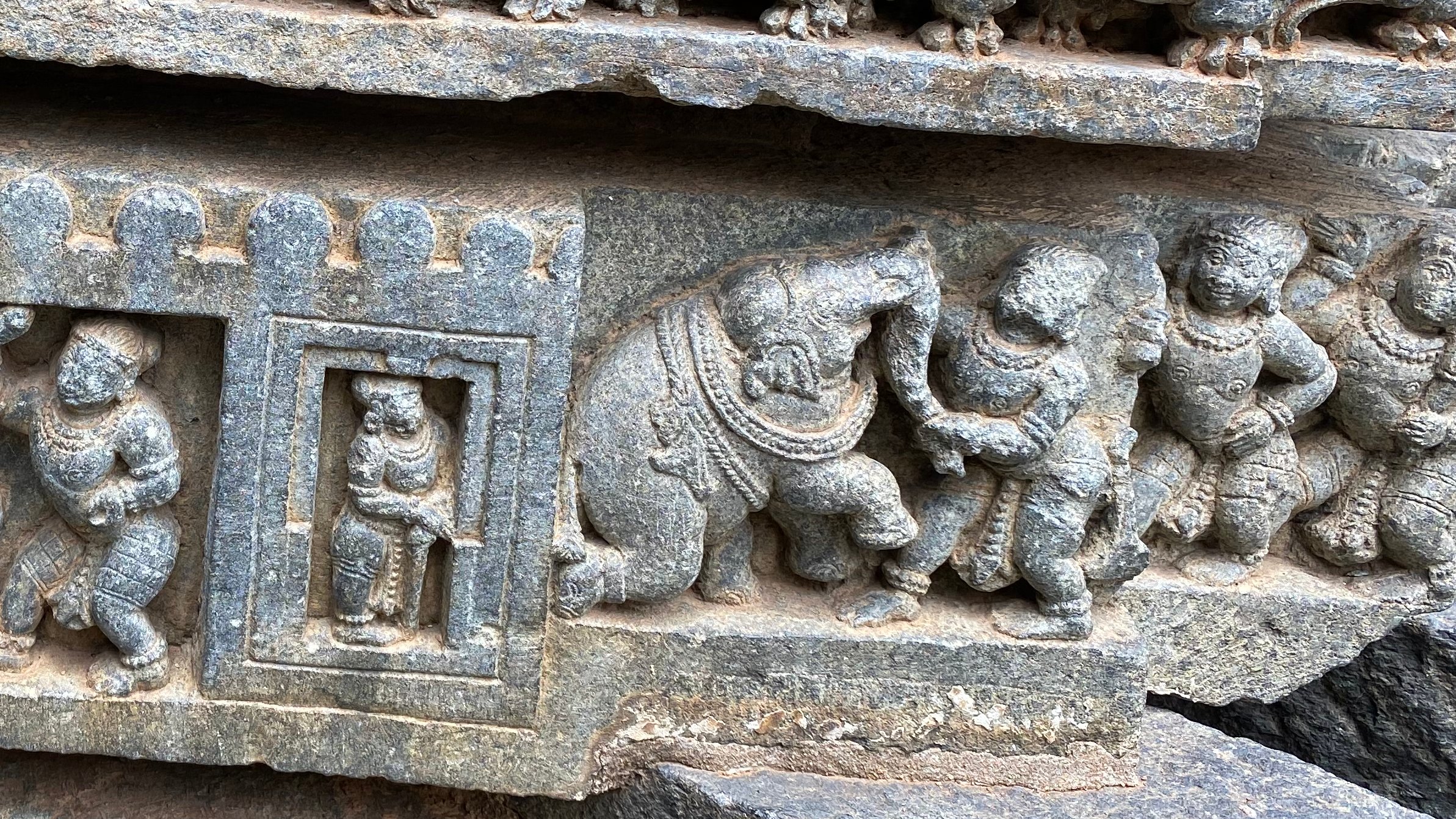 |
| Panel depicting killing of the elephant Kuvalayapida by Krishna |
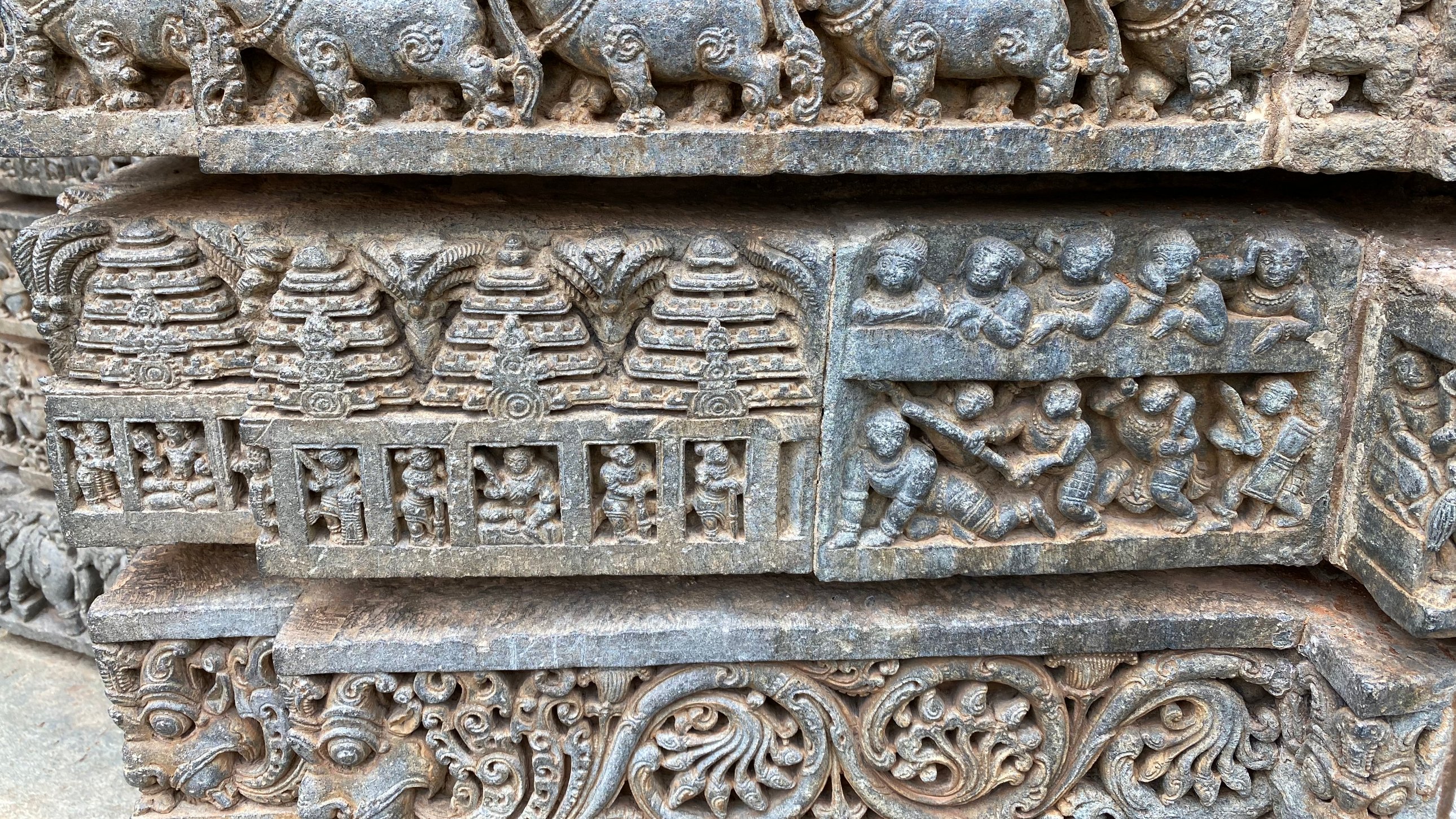 |
| Panels depicting scenes from the wrestling arena. It shows many prominent wrestlers like Chanura, Mushtika, Kuta, Sala ,Tosala & others |
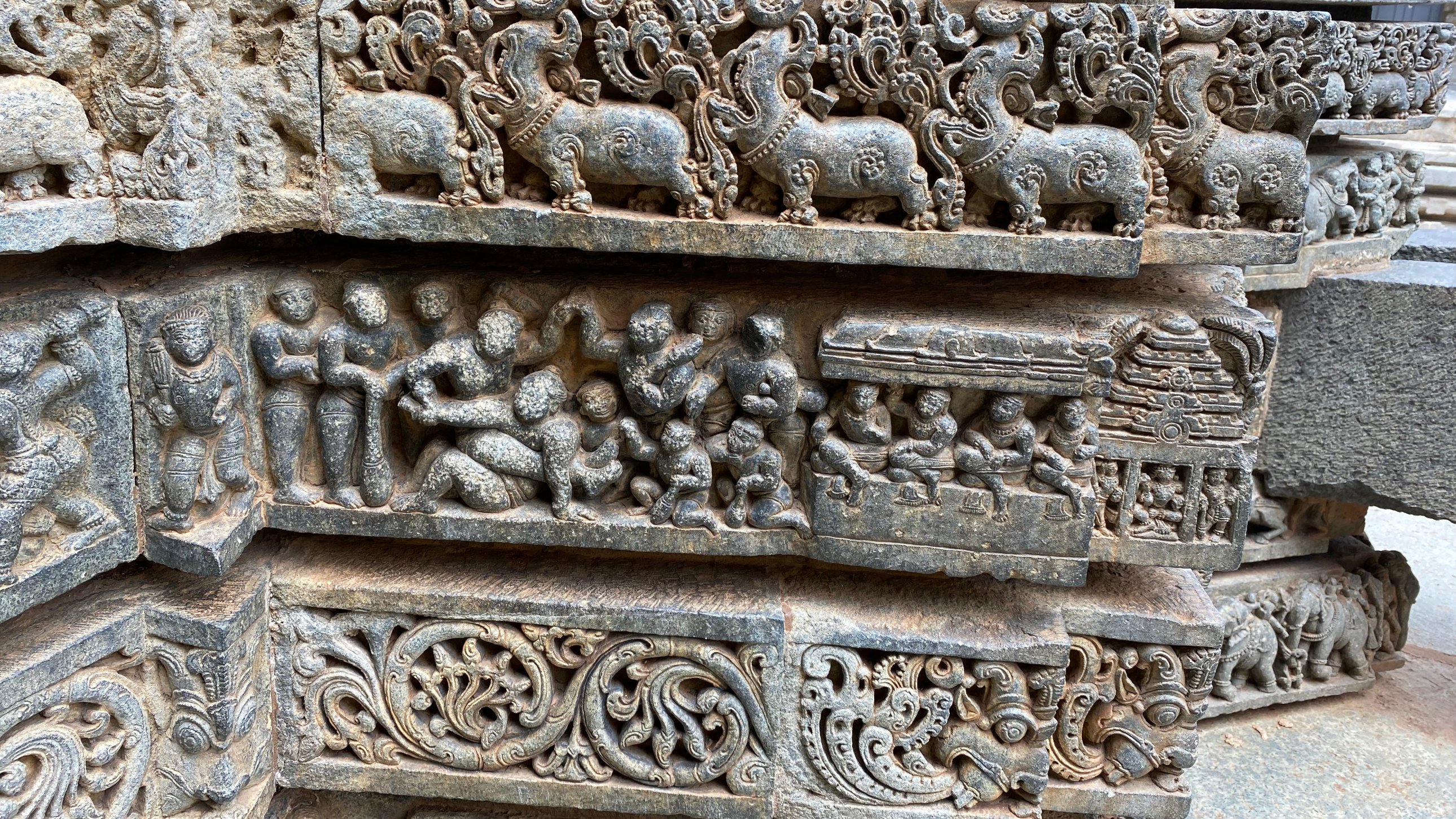 |
| Krishna & Balarama wrestle and defeat Kamsa's wrestlers as spectators seated in the gallery watch on |
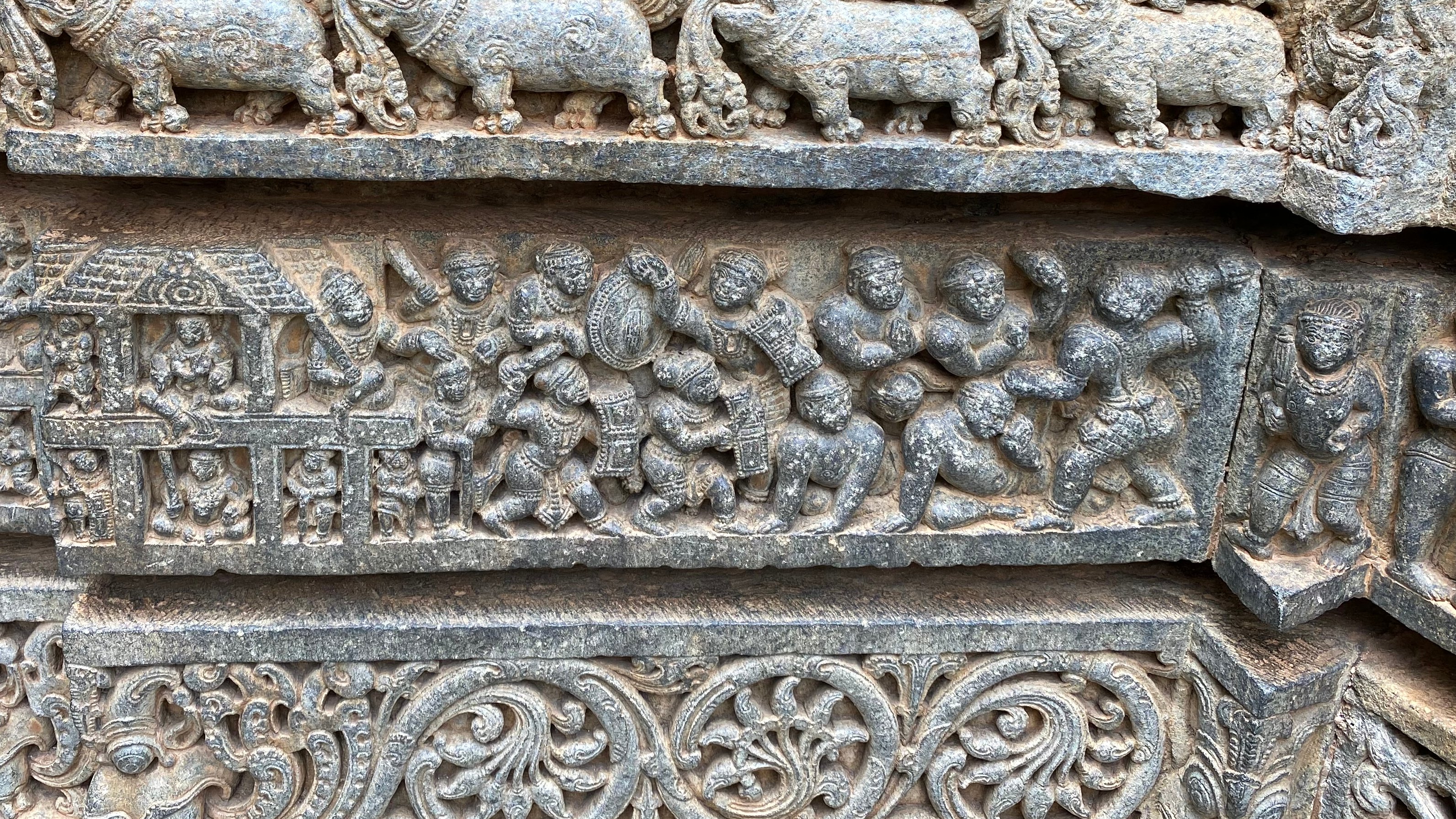 |
| Chanura & Mushtika are killed by Balarama & Krishna |
 |
| Panels depicting the final battle with Kamsa. The last panel shows Krishna dragging Kamsa by his hair & killing him |
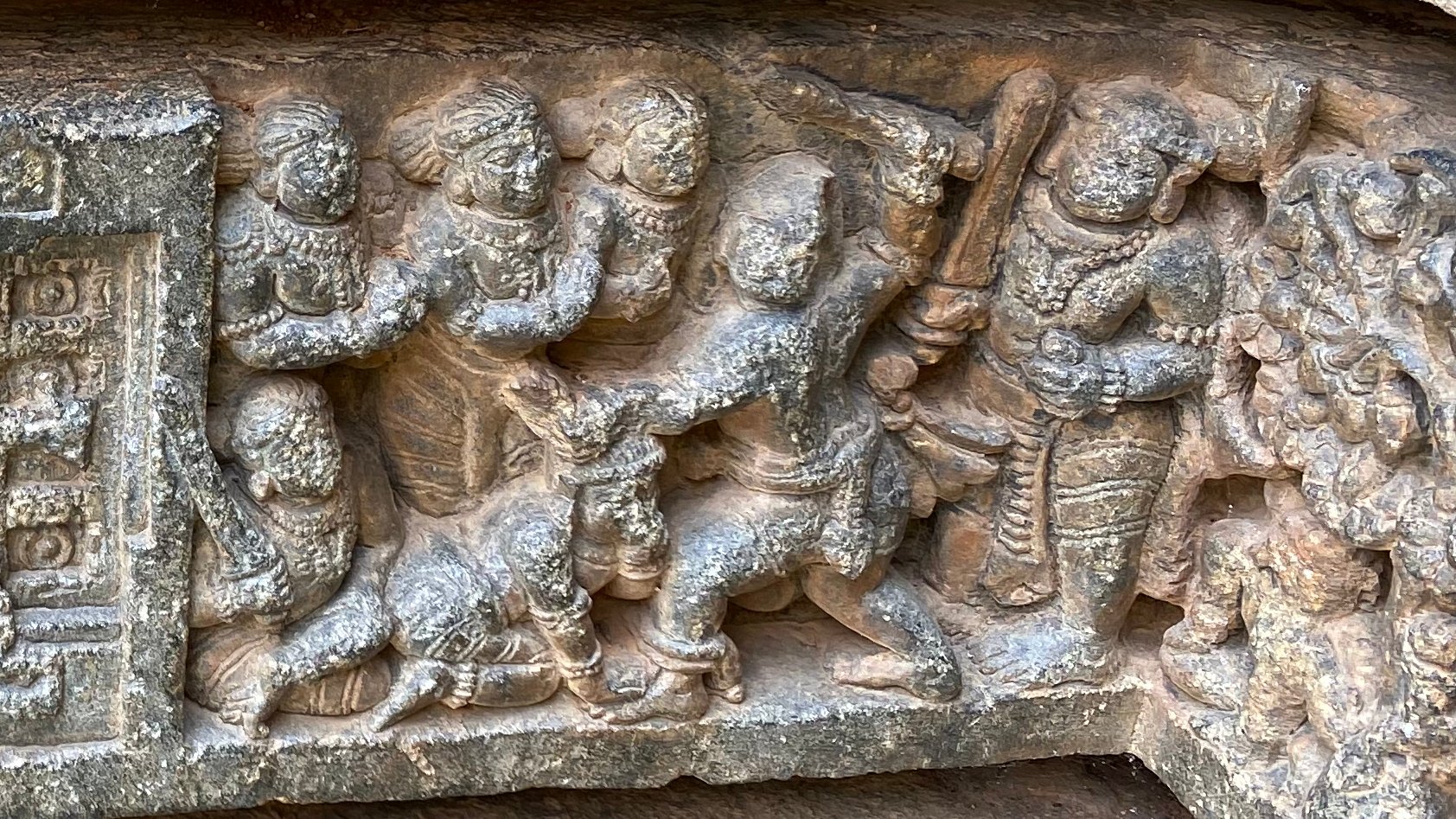 |
| Krishna killing Kamsa |
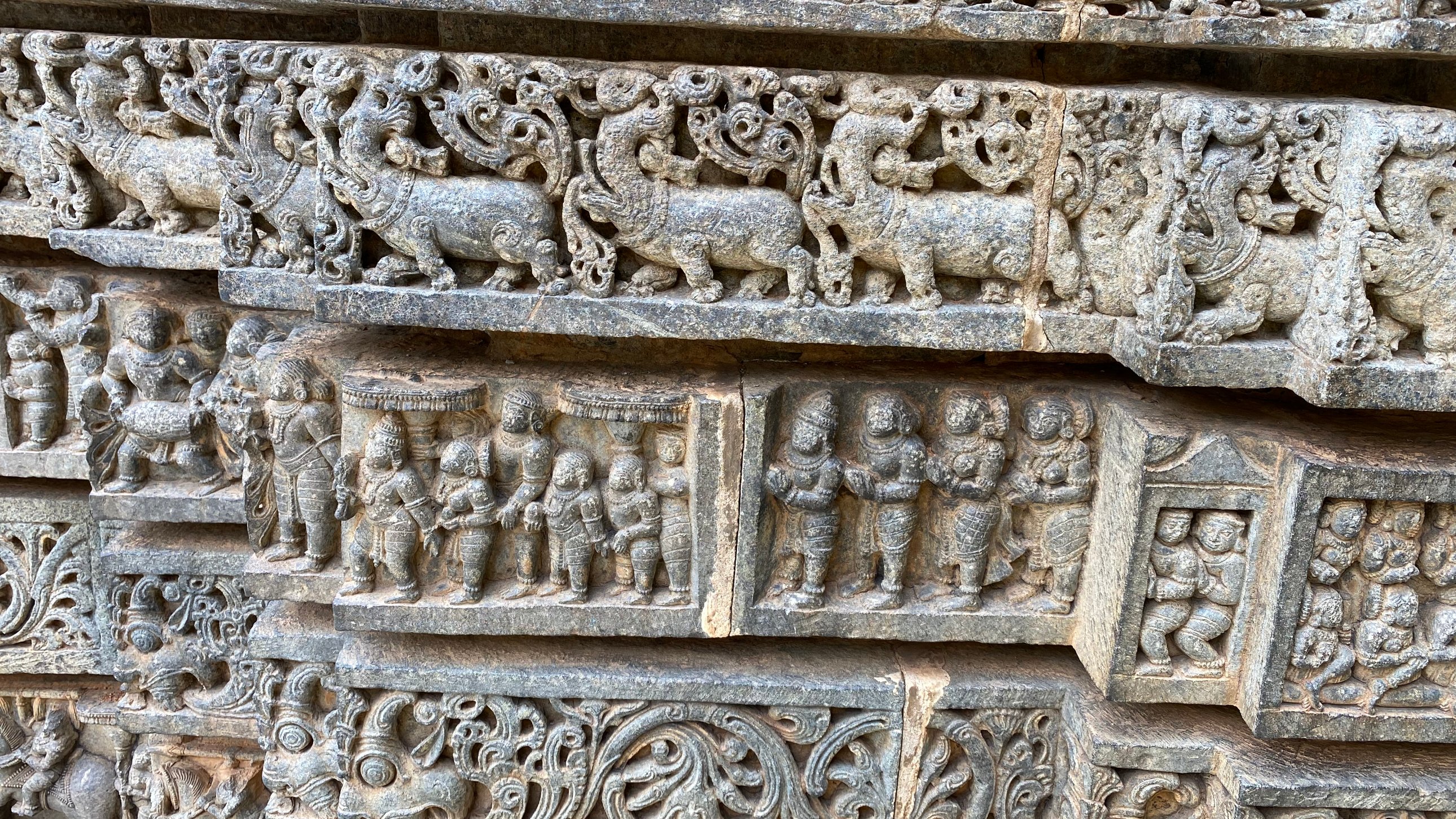 |
| The following panels show Krishna proceeding towards the prison where his biological parents Devaki & Vasudeva are held in captivity. He goes on to free them |
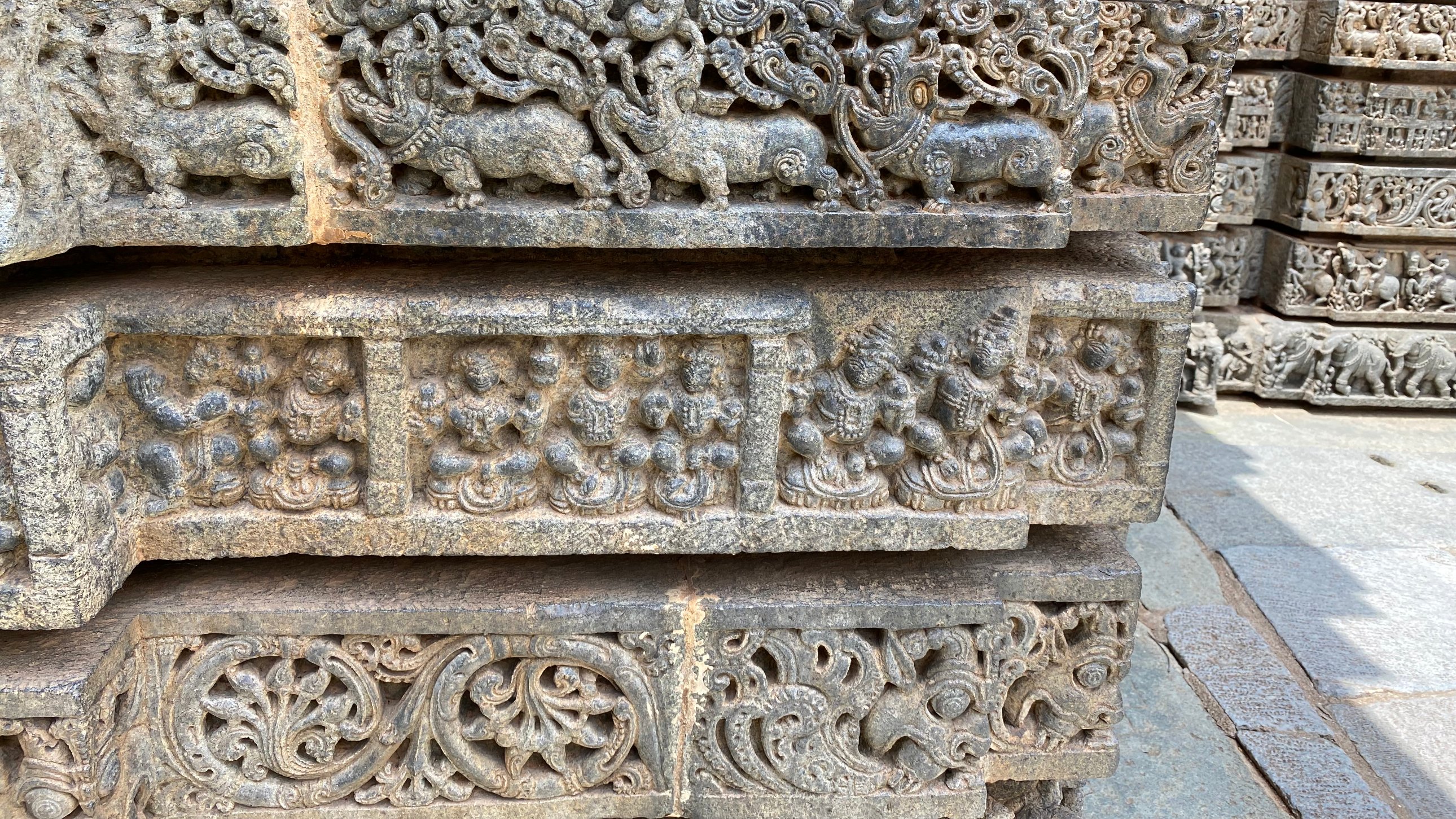 |
| Krishna reinstates his grandfather Ugrasena as the ruler of Mathura. The Bhagavata panels end here with a depiction of Ugrasena's durbar |
THE MAHABHARATHA PANELS
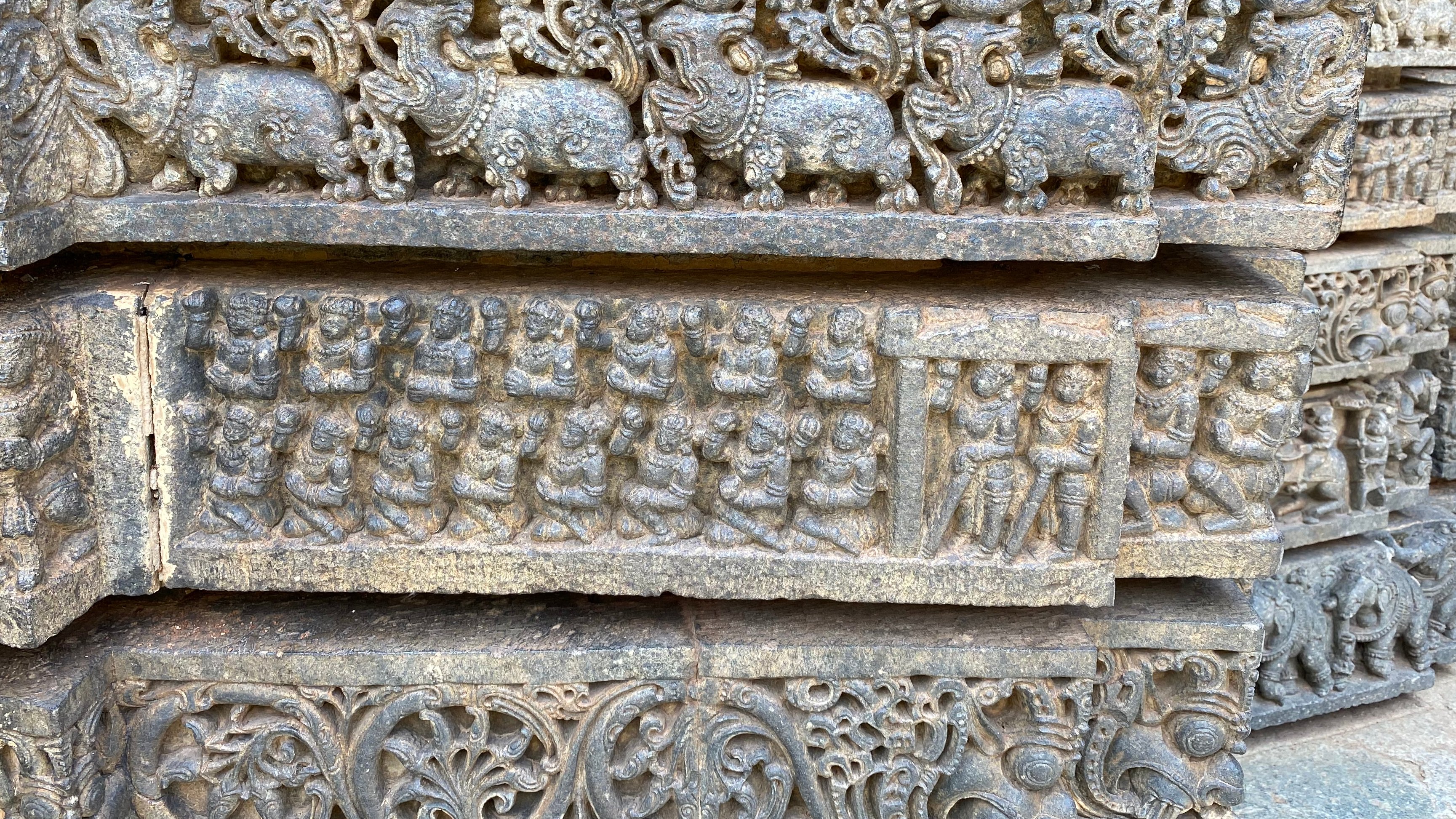 |
| The following panels depict episodes from the Mahabharata. Seen here is Dhritarashtra's durbar |
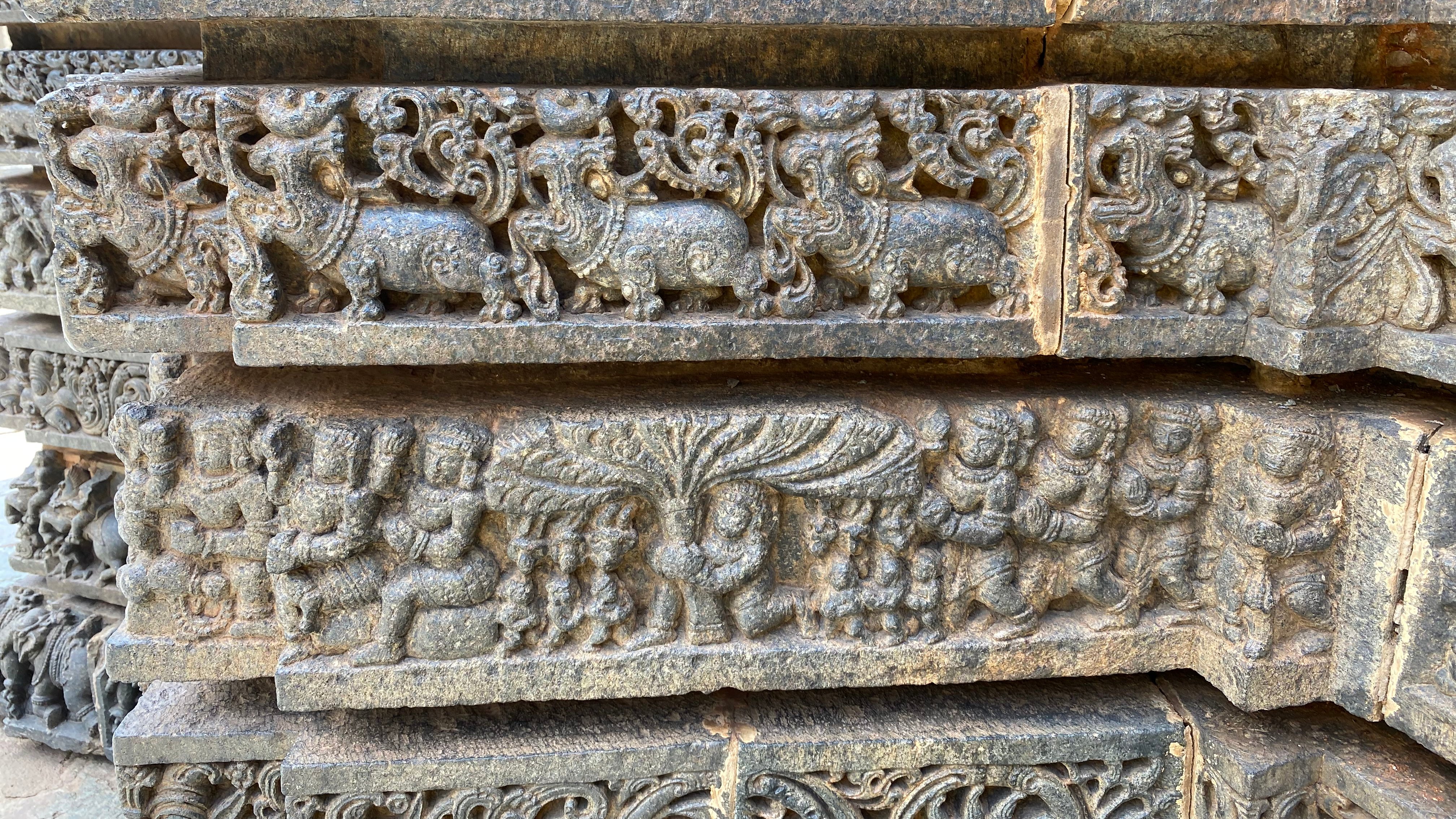 |
| Bhima displaying his immense strength by shaking a tree resulting in the Kauravas falling down from it |
 |
| Pandavas & Kauravas receive martial training |
 |
| Pandavas & Kauravas take to battlefield on their chariots |
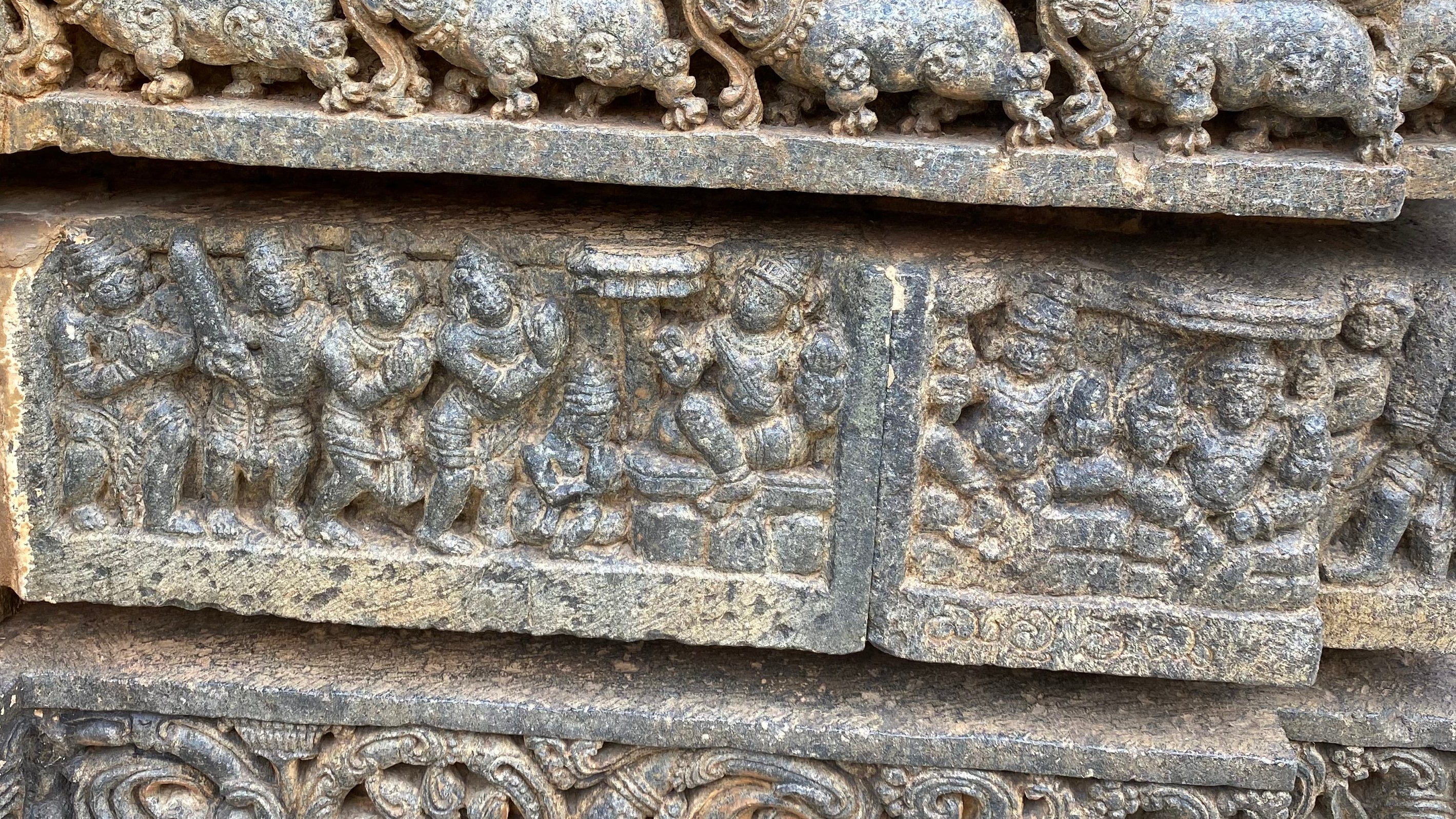 |
| Dhritarashtra intervenes to prevent the war |
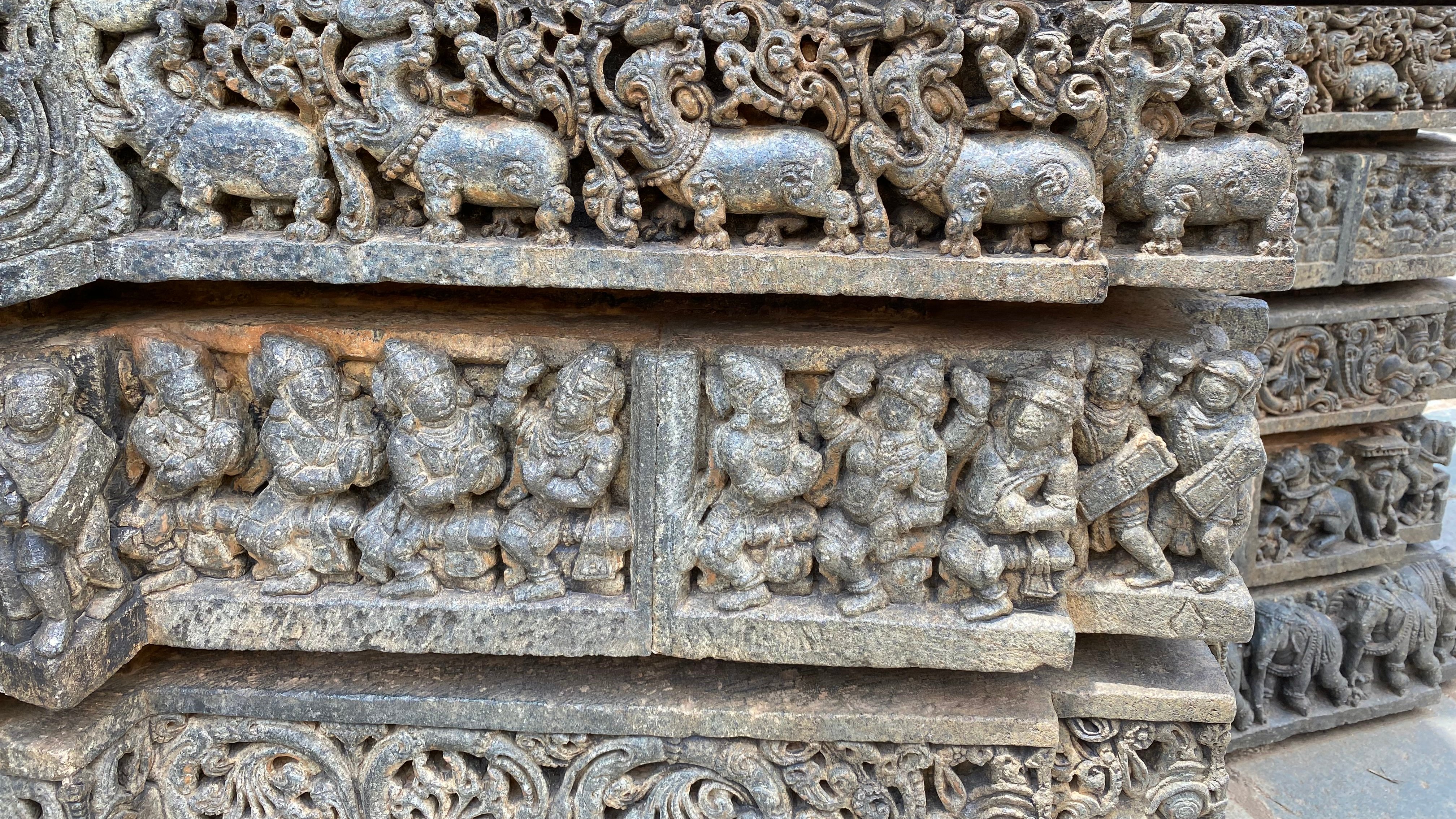 |
| Elders like Bhishma & Drona advice against war |
 |
| Pandavas survive the assassination attempt at Lakshagriha. Carving of burning flames can clearly be seen |
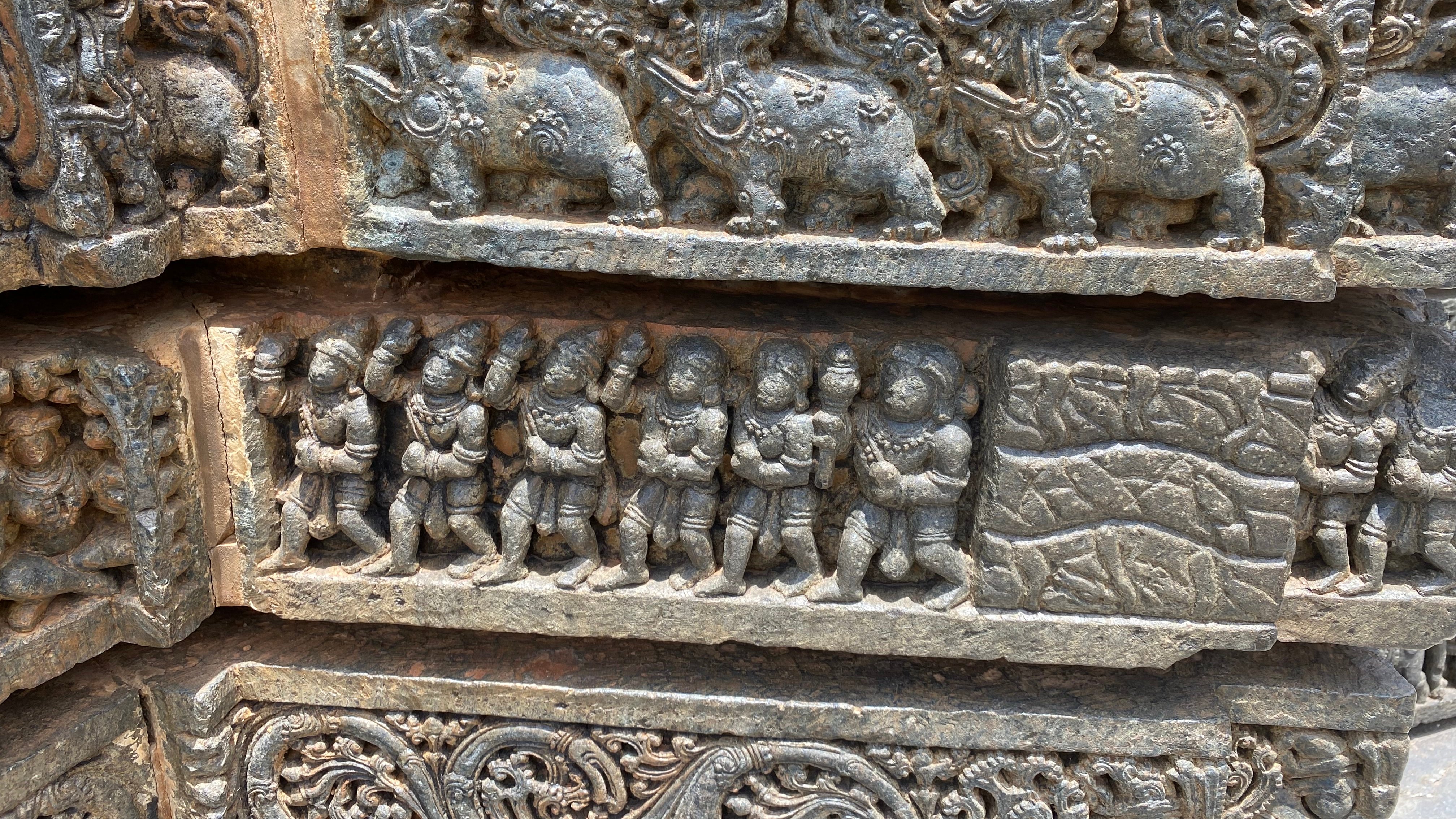 |
| Pandavas escaping Lakshagriha to the forests via a secret passage |
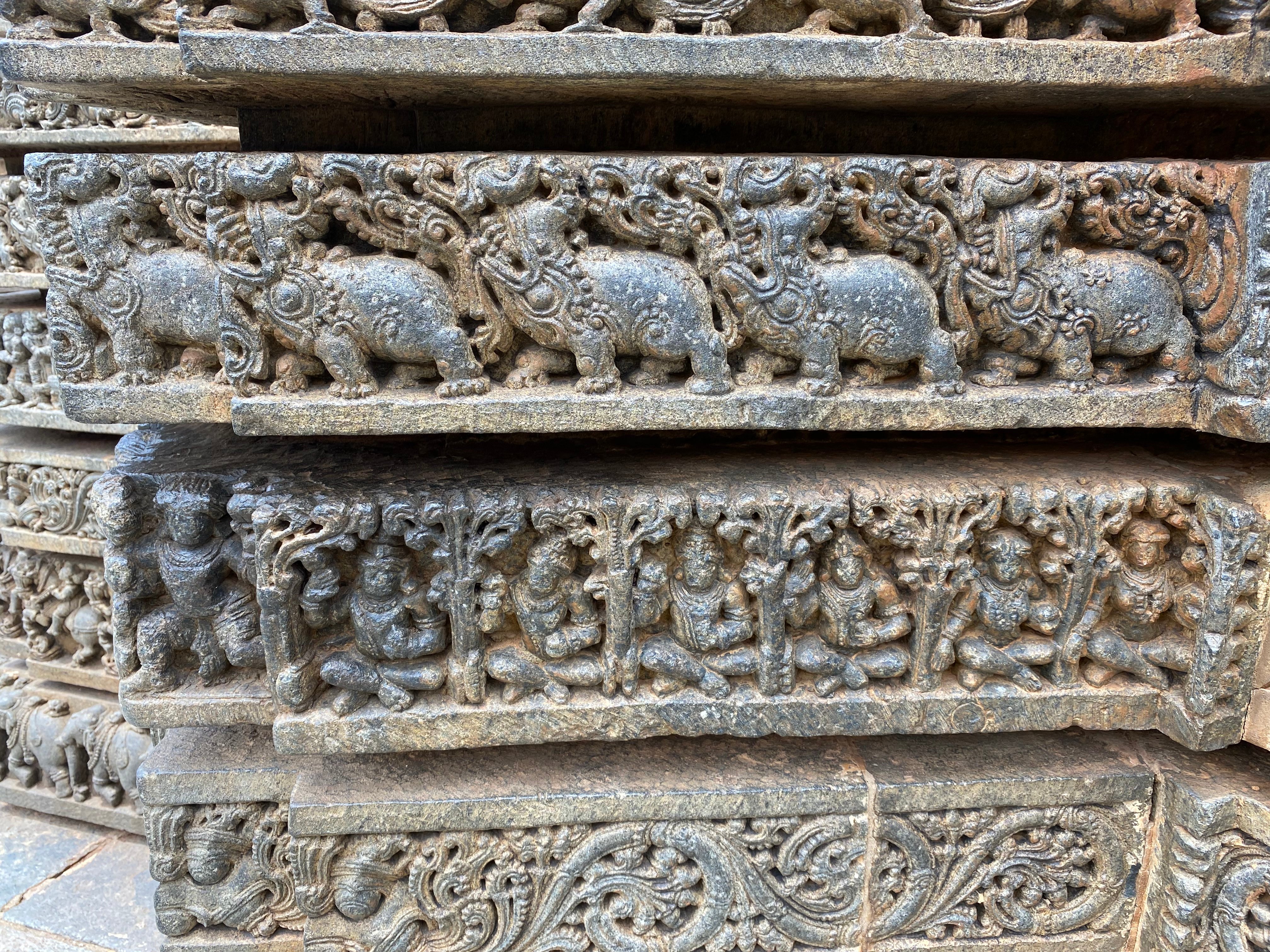 |
| Pandavas in the forest |
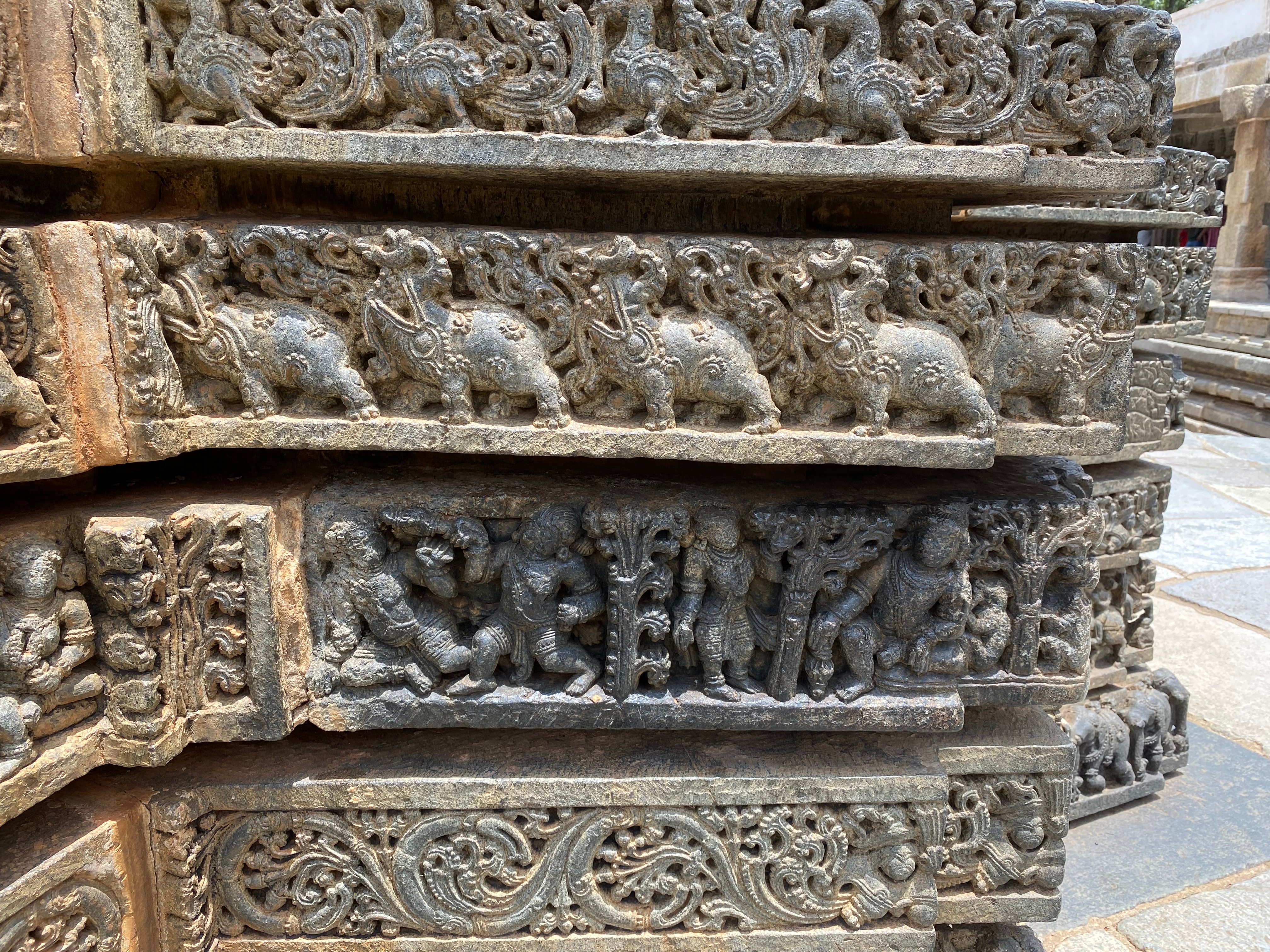 |
| Hidimbi meets Bhima in Kamyakavana forest. Her brother Hidamba furious with her fights Bhima & is killed in the battle |
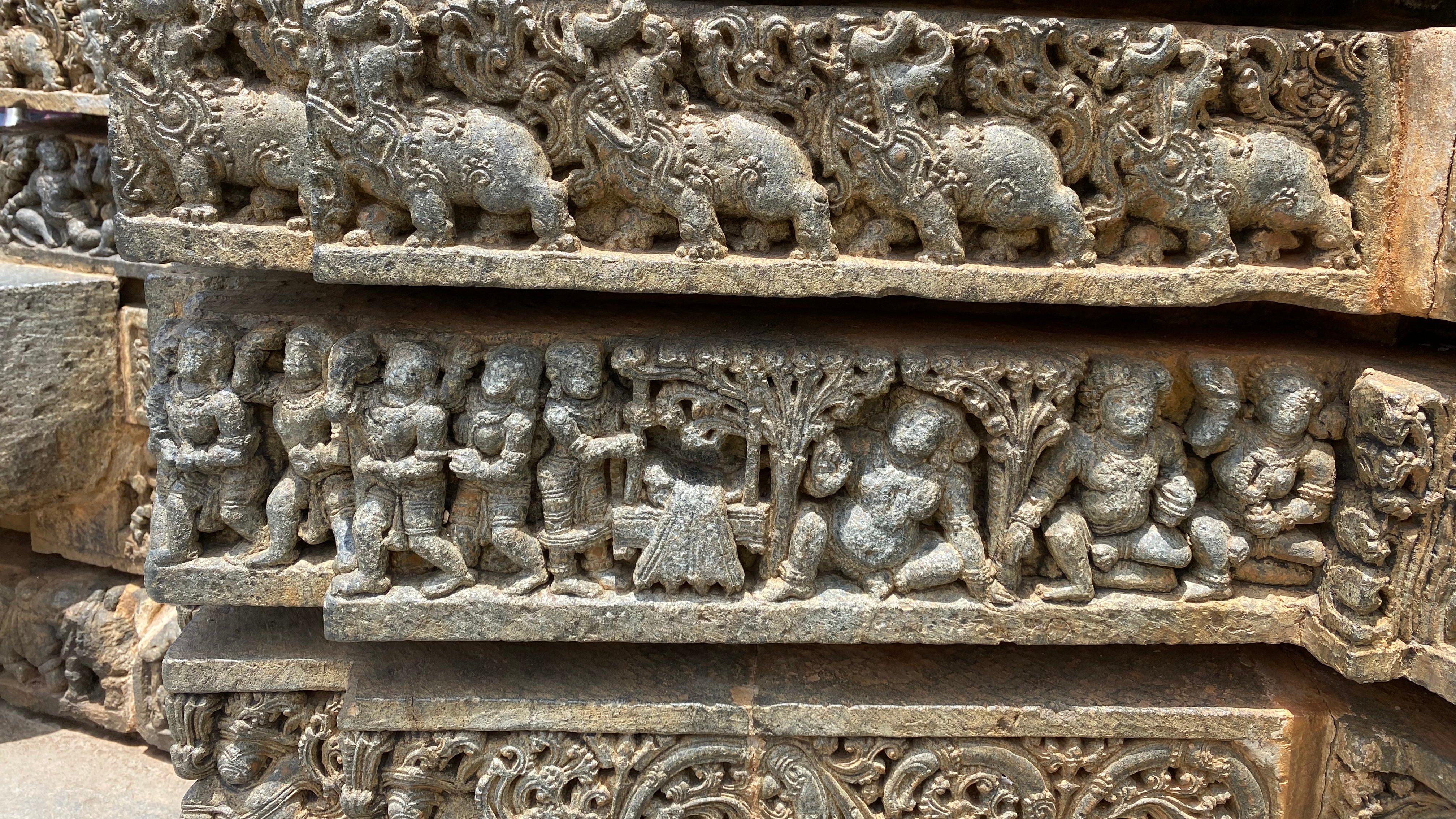 |
| Hidmbi gives birth to Ghatotkacha who is seen in a cradle suspended from a tree |
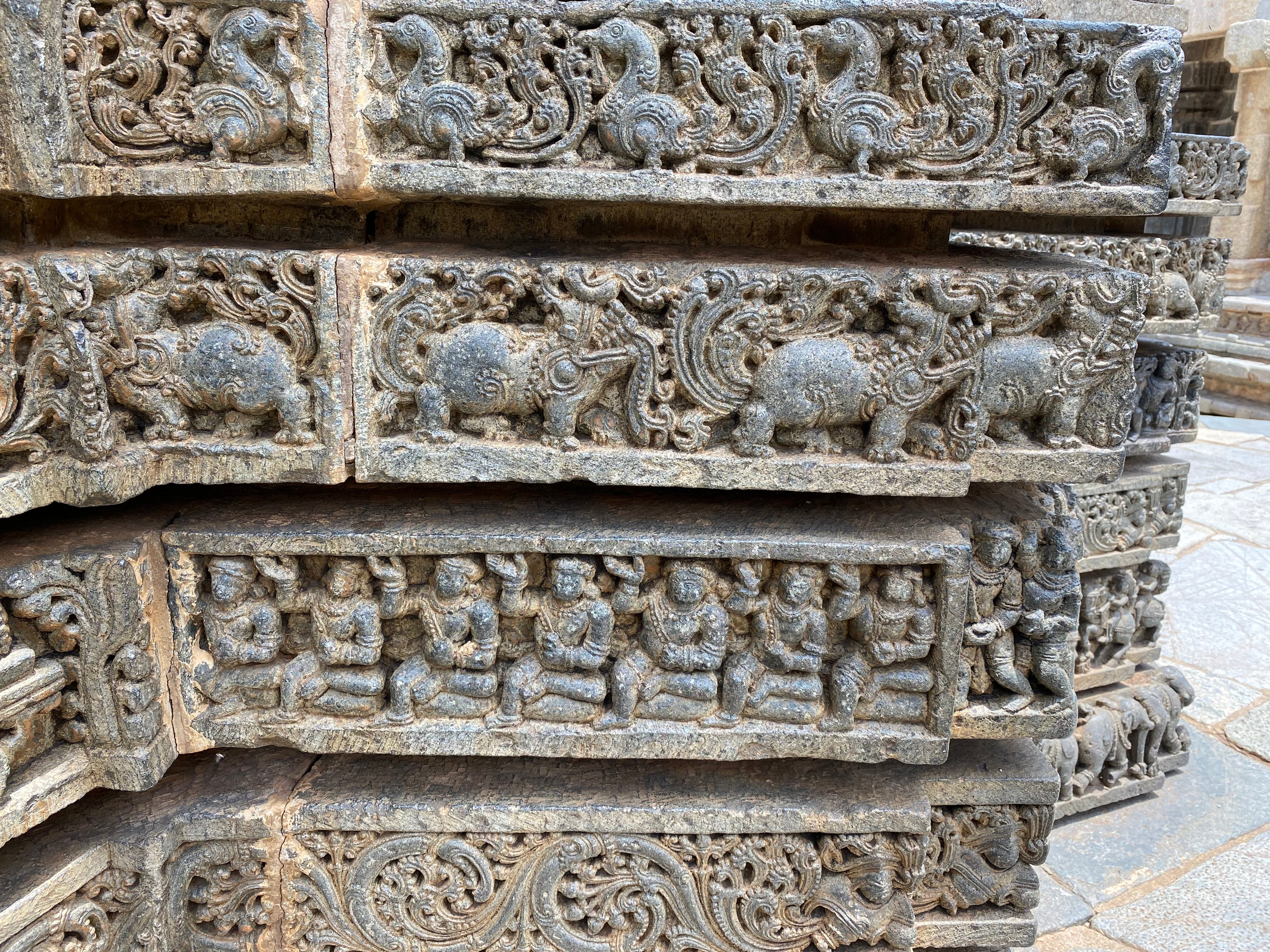 |
| Pandavas travelling to Ekachakrapura |
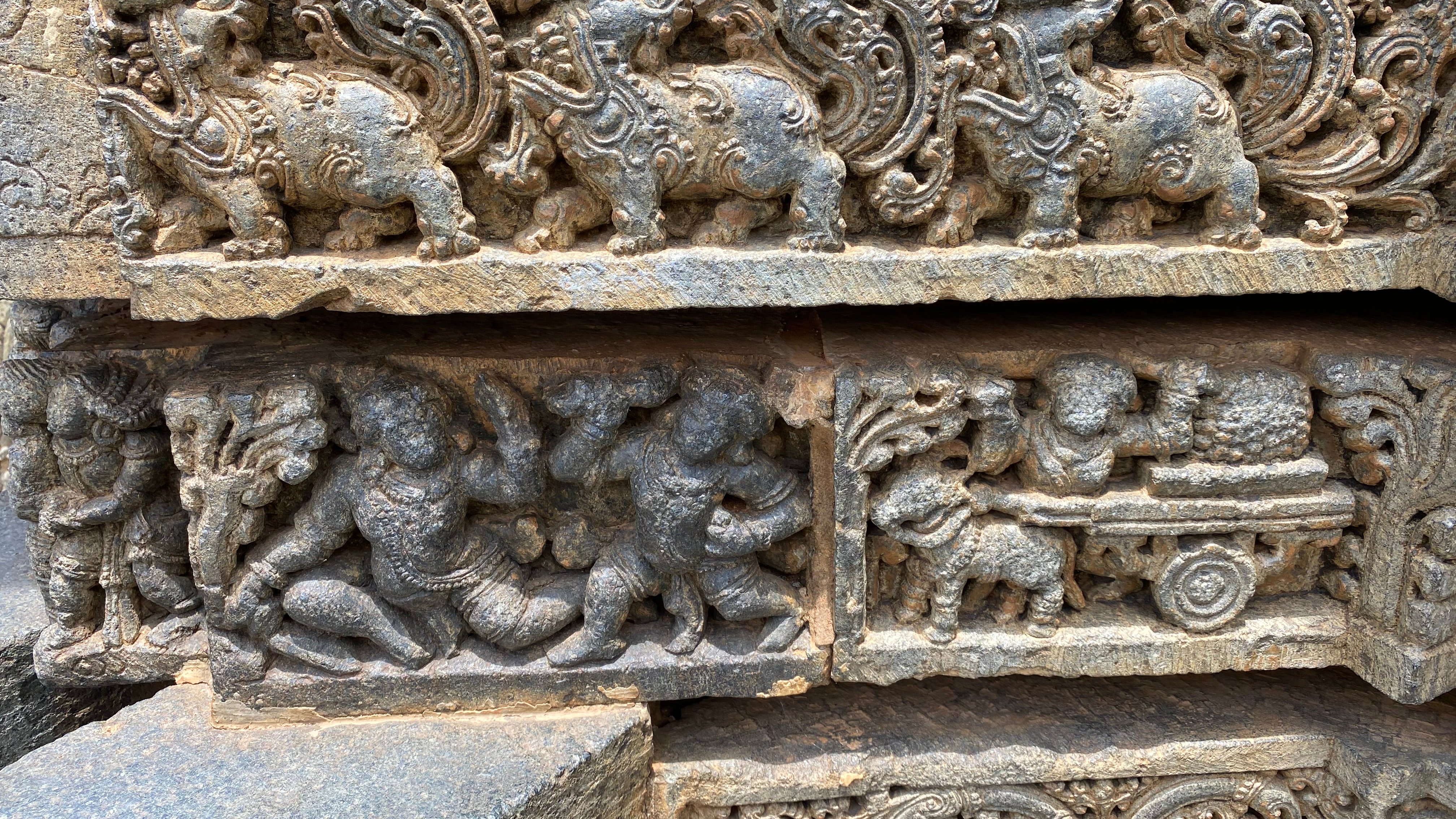 |
| Bhima carrying a cart full of food for Bakasura. Next panel shows Bhima killing Bakasura |
 |
| Pandavas arrive at Drupada's kingdom in Panchala where they stay at a potter's house. The potter can be seen working with his wheel in the left |
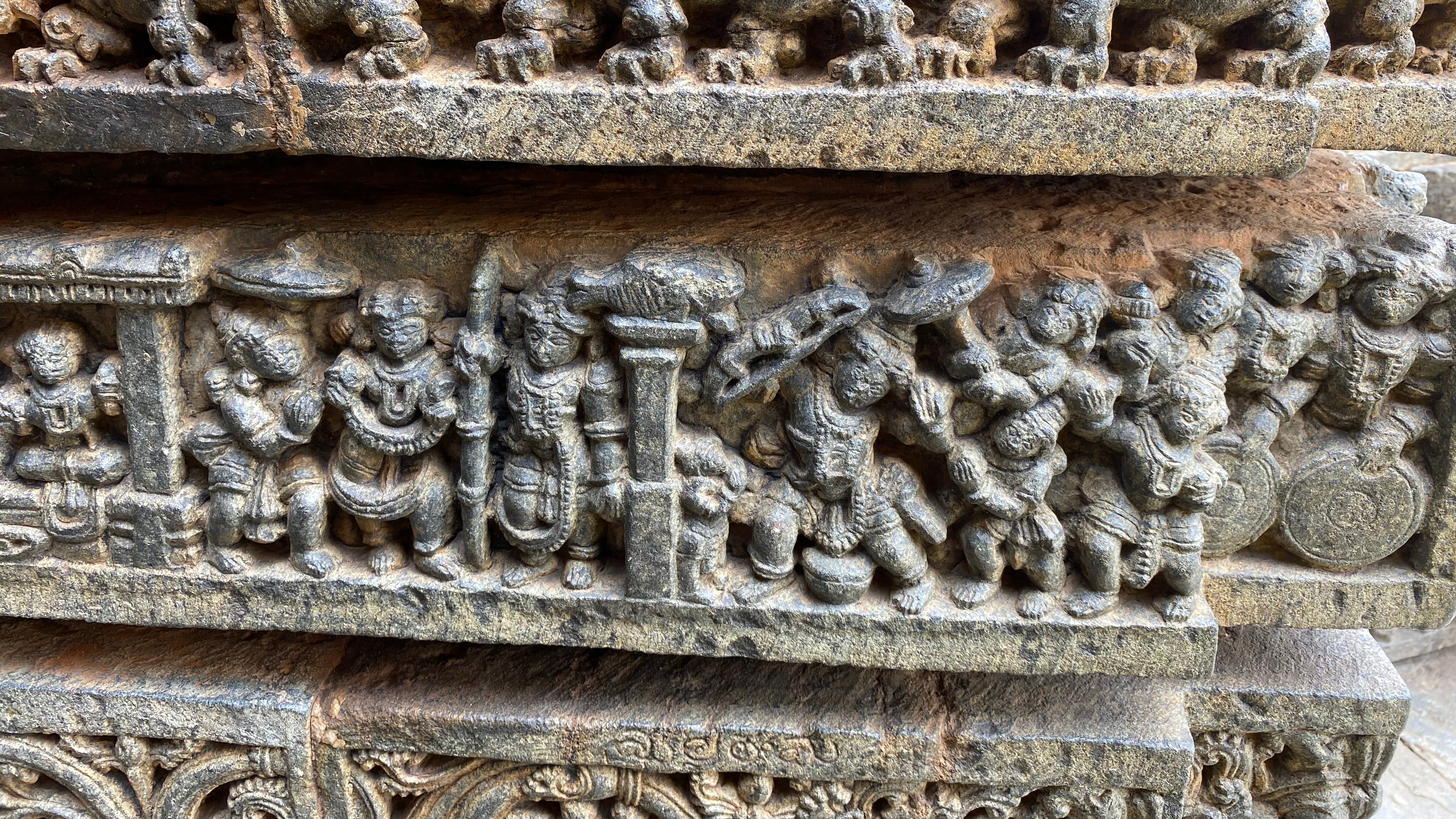 |
| Scenes from Draupadi's swayamvara. Arjuna hits the golden fish eye with his bow & arrow. The fish can also be seen in this panel. Next panel shows Draupadi garlanding Arjuna |
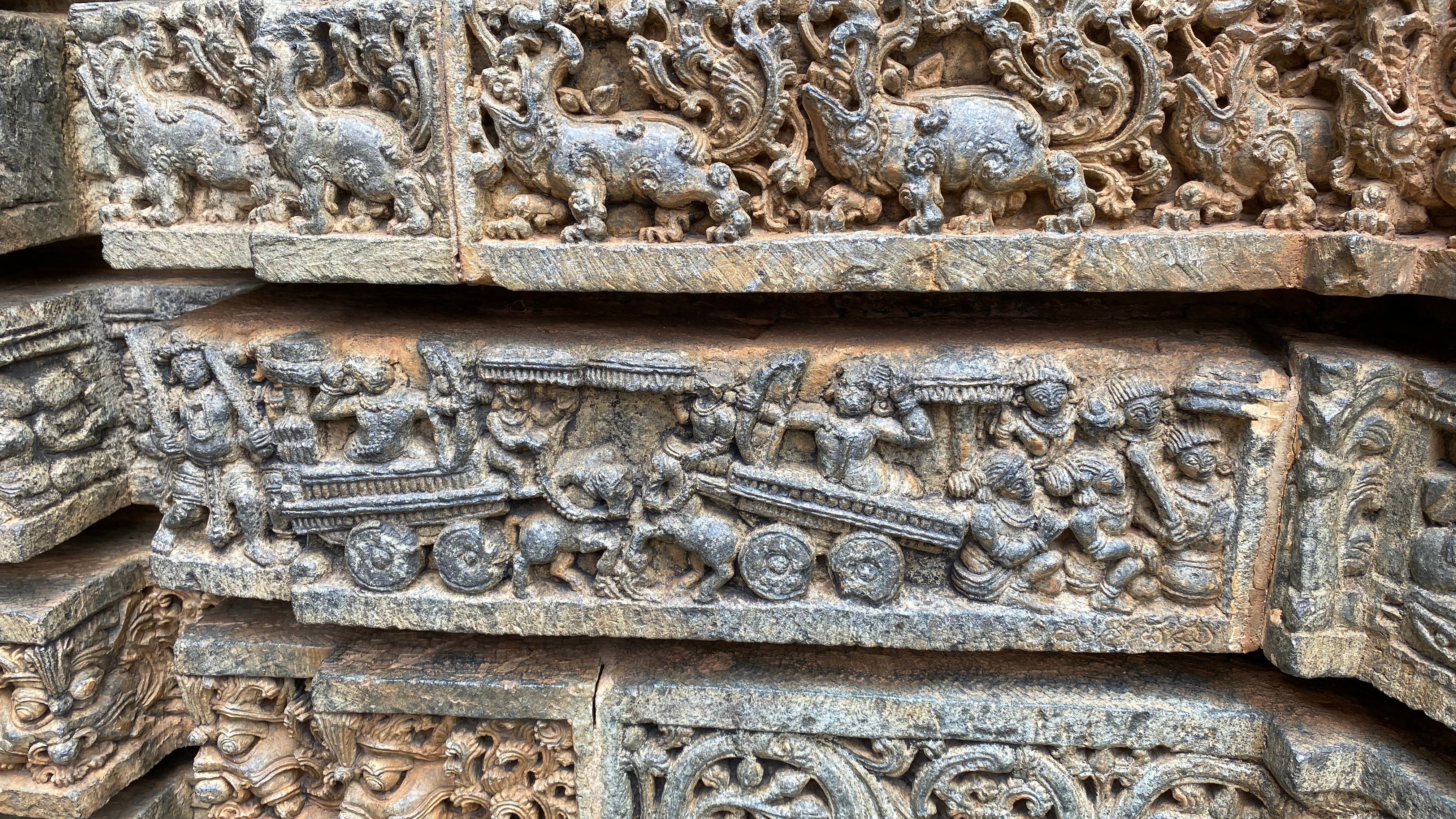 |
| Duryodhana, Karna & other Kauravas attack Draupadi & Arjuna. A battle is fought on chariots. They are all defeated by Arjuna |
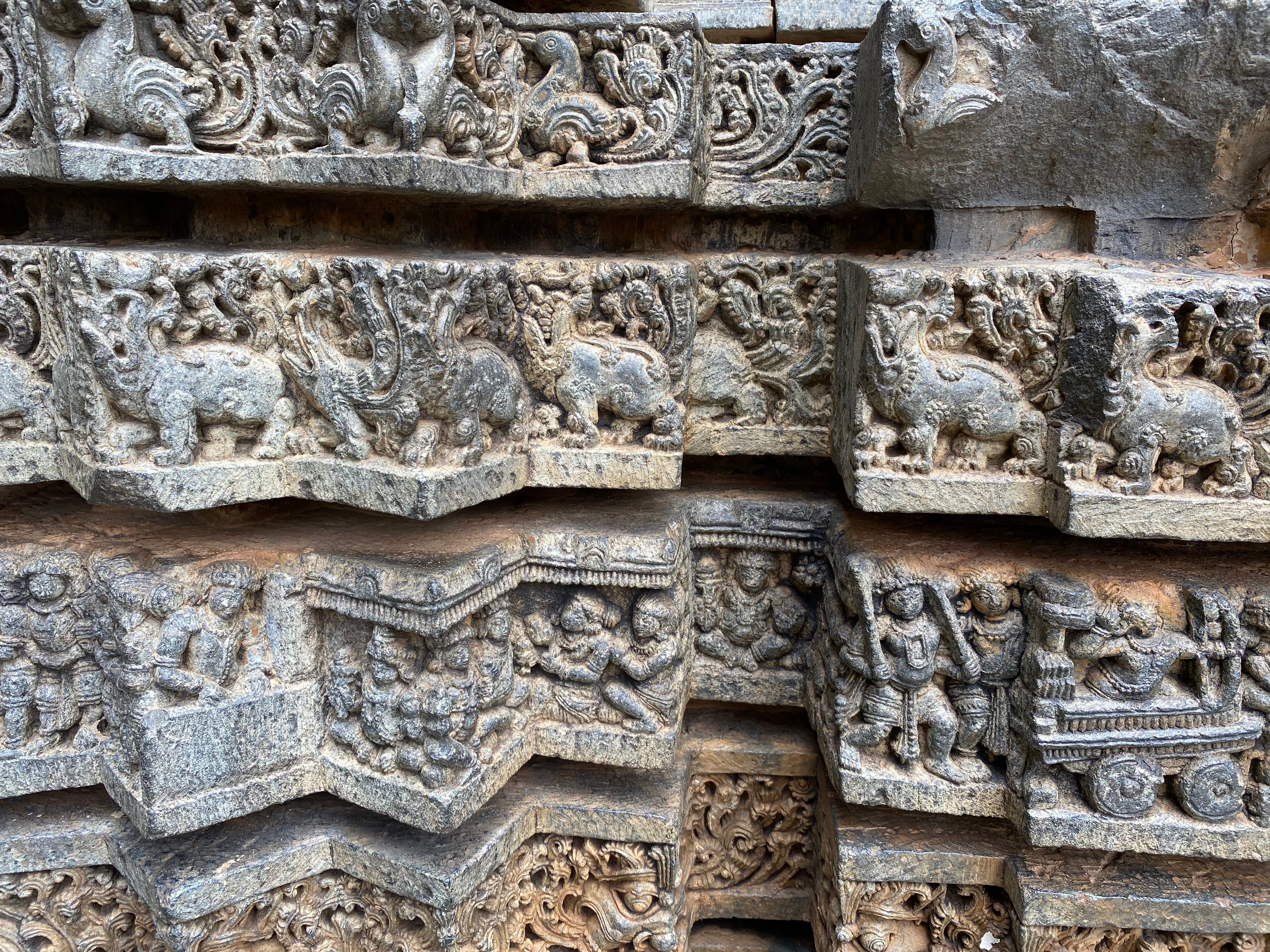 |
| Pandavas return to Hastinapura with Draupadi |
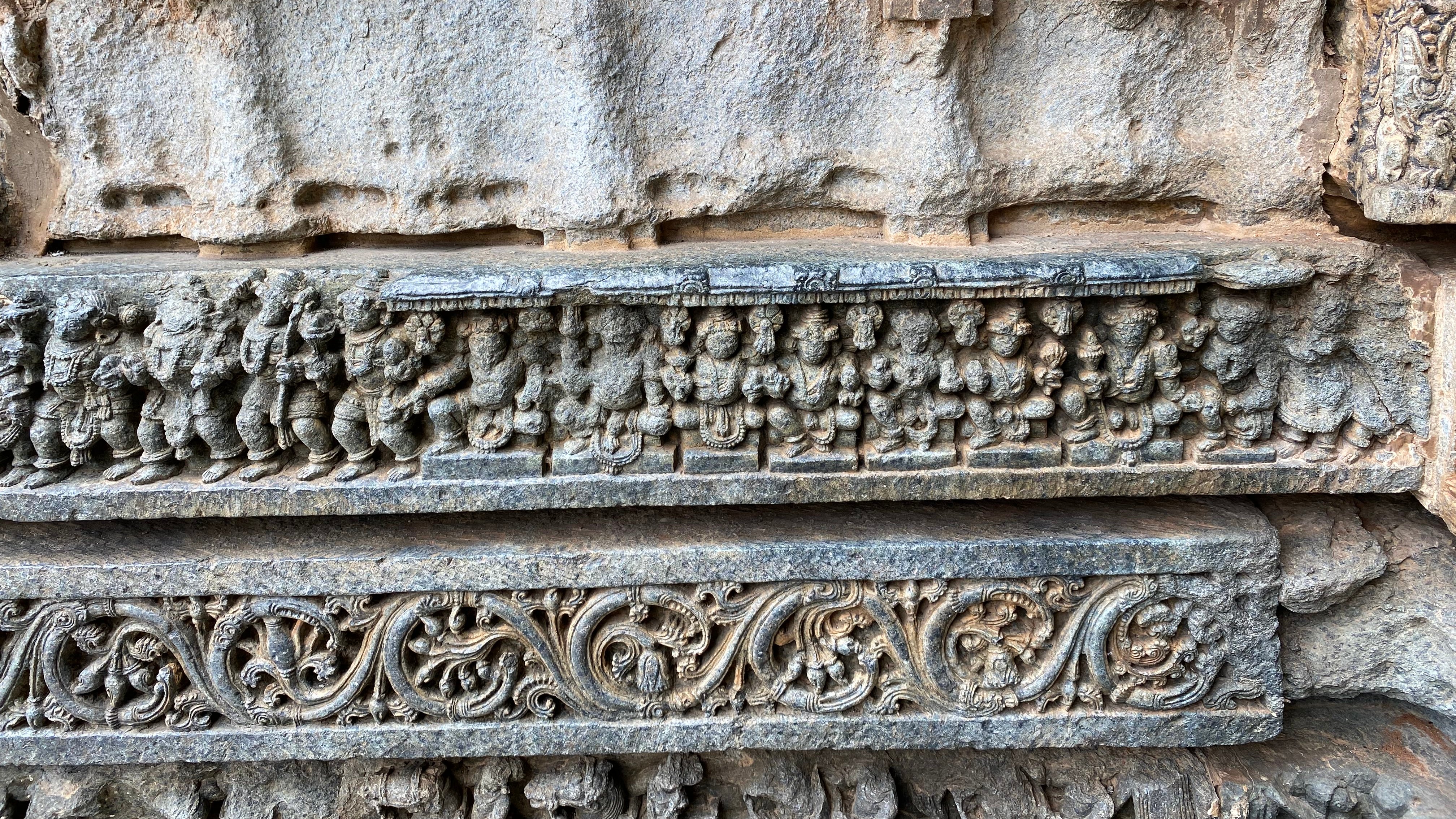 |
| A great sabha is held in Hastinapura where the Kauravas on the advice of Shakuni coerce the Pandavas into playing the game of dice |
 |
| Krishna advises Arjuna to build a new capital by clearing a forest known as Khandava |
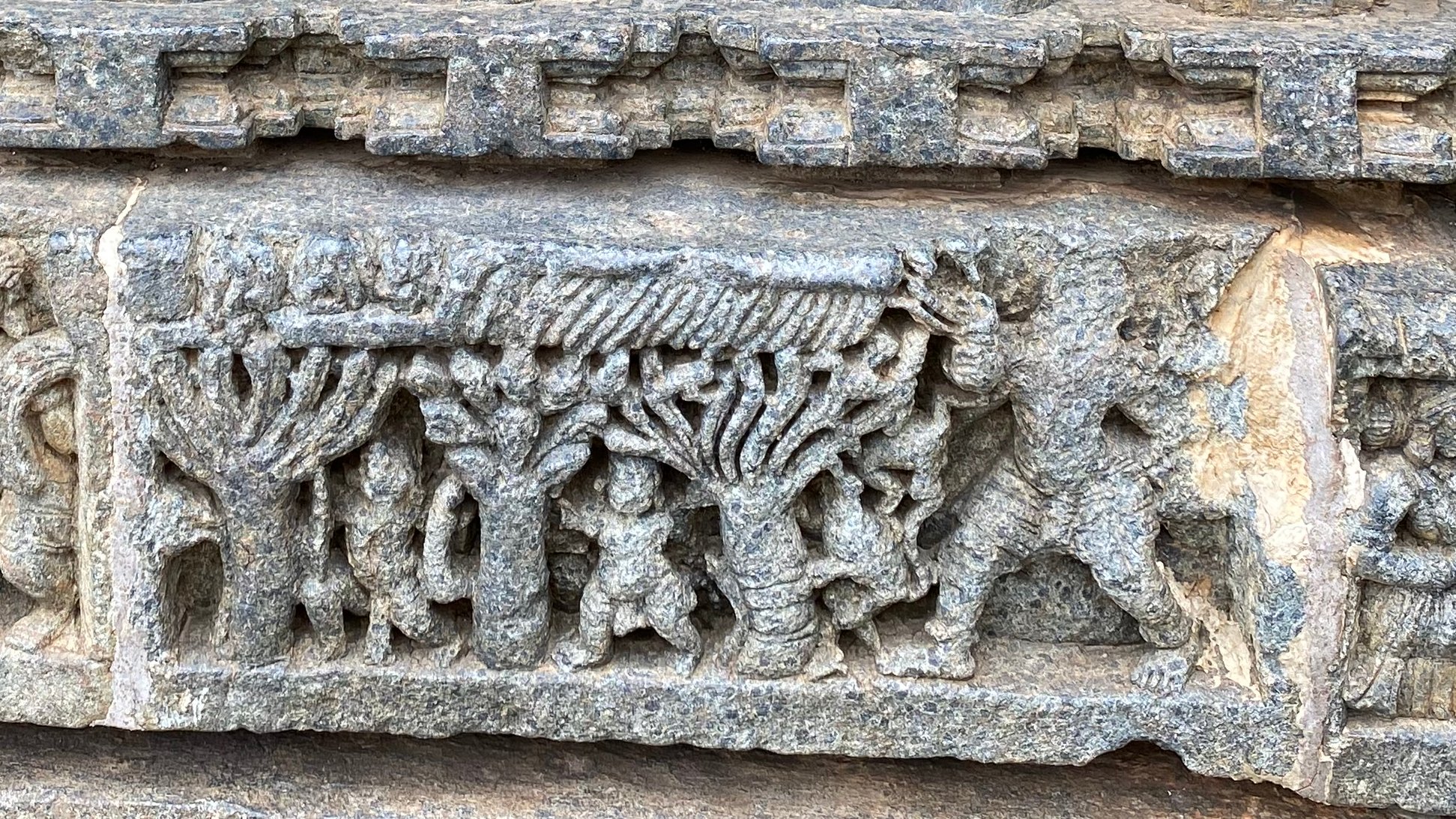 |
| On the advice of Krishna; Arjuna burns down the Khandava forest |
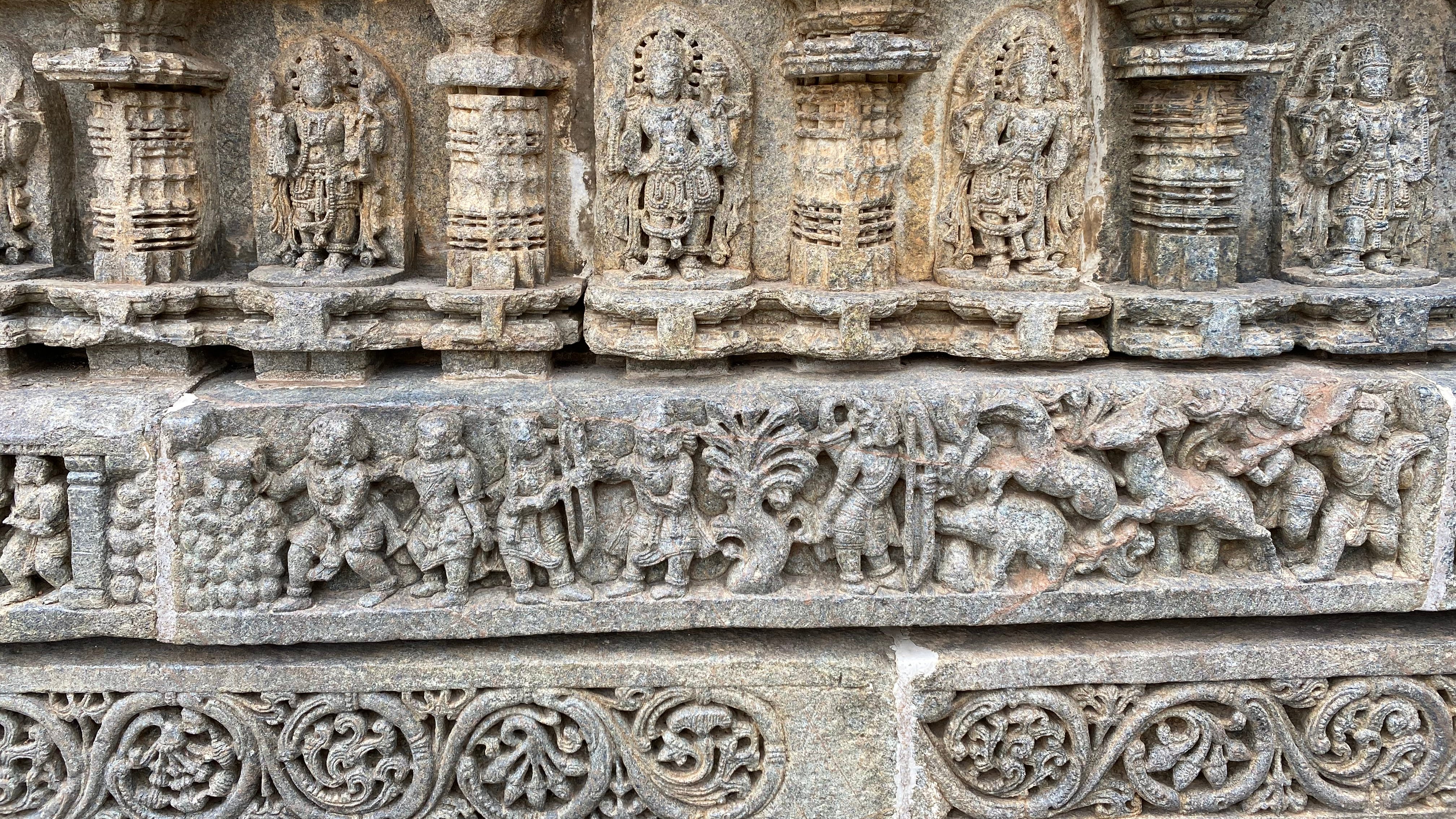 |
| This panel describes the episode of Kiratarjuniya. Arjuna performs a series of penance to obtain the Pashupatastra of Shiva. This weapon would make him nearly invincible. Shiva assumes the form of a Kirata (hunter) to test Arjuna's abilities |
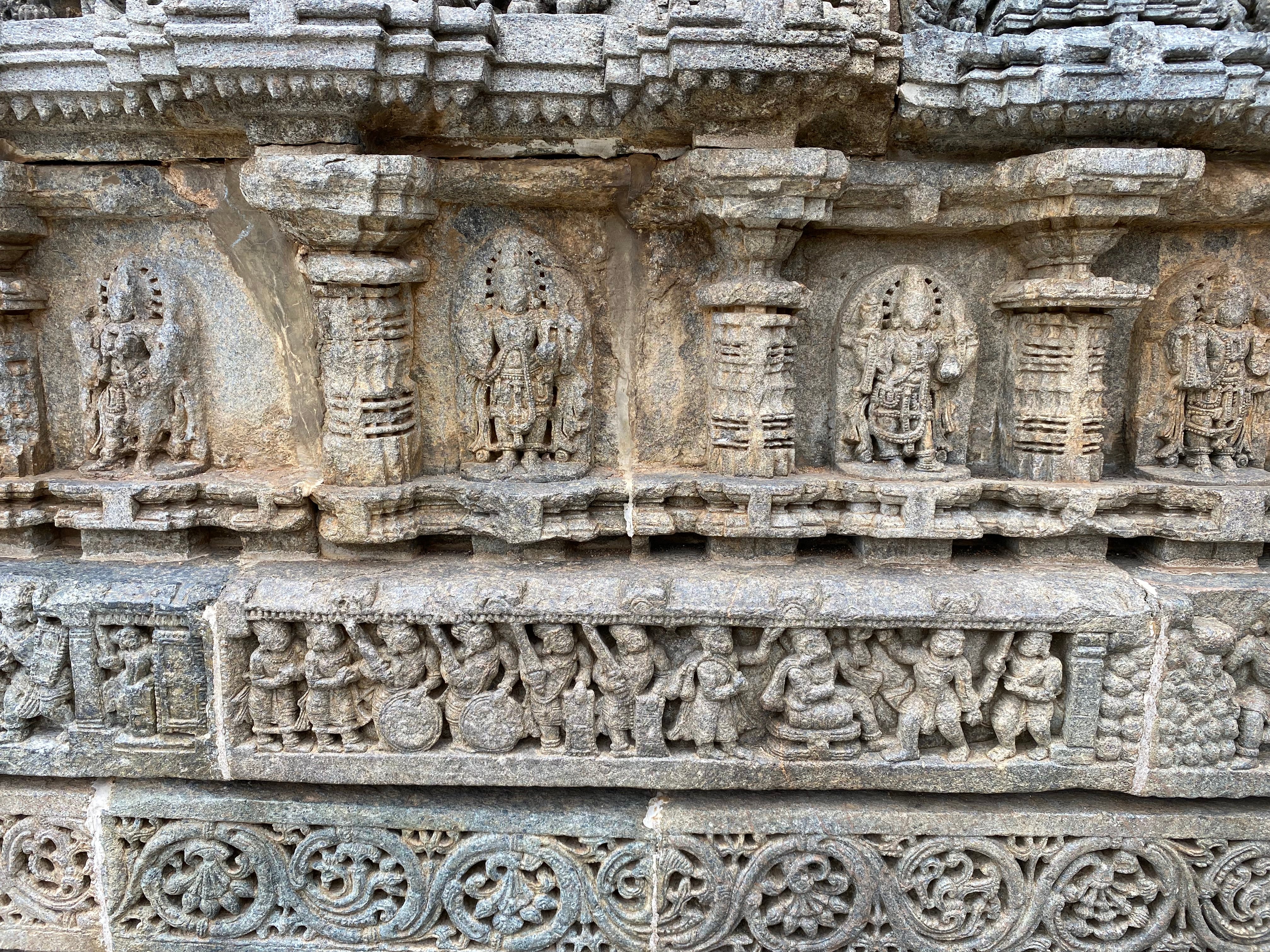 |
| Sanjaya narrating the events of Kurukshetra war to Dhritarashtra |
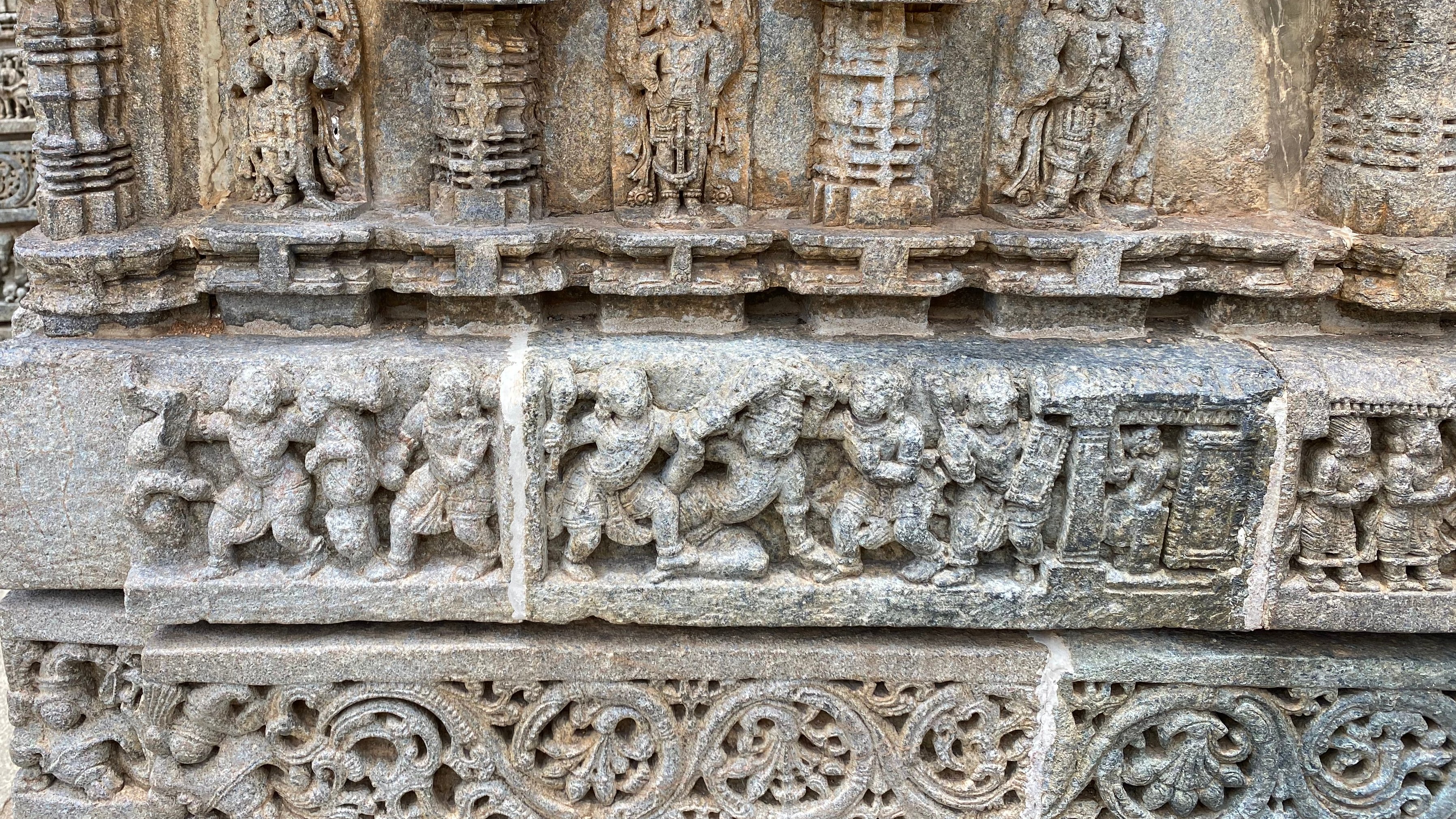 |
| Bhima fights & kills Dushasana |
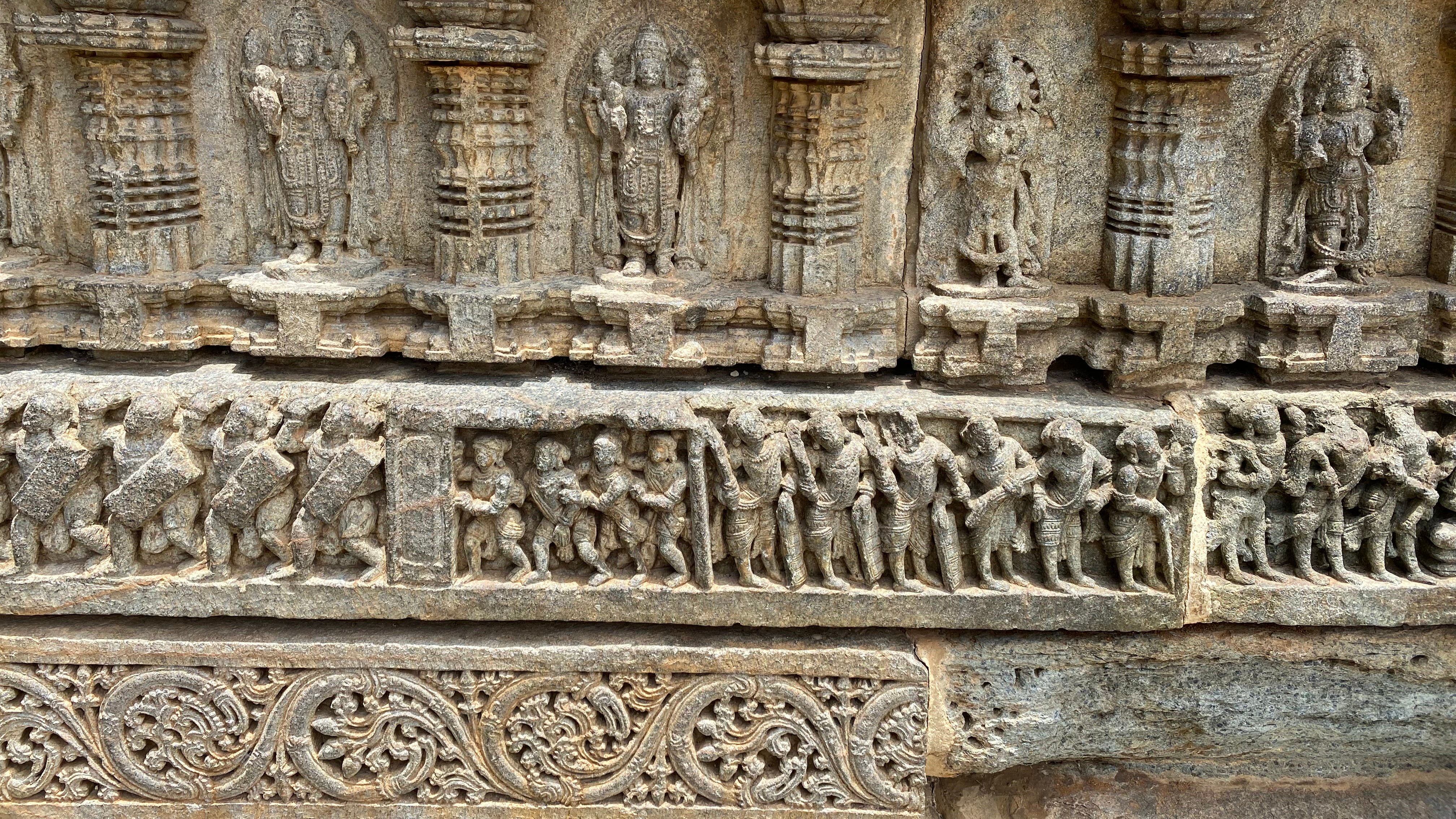 |
| War scenes |
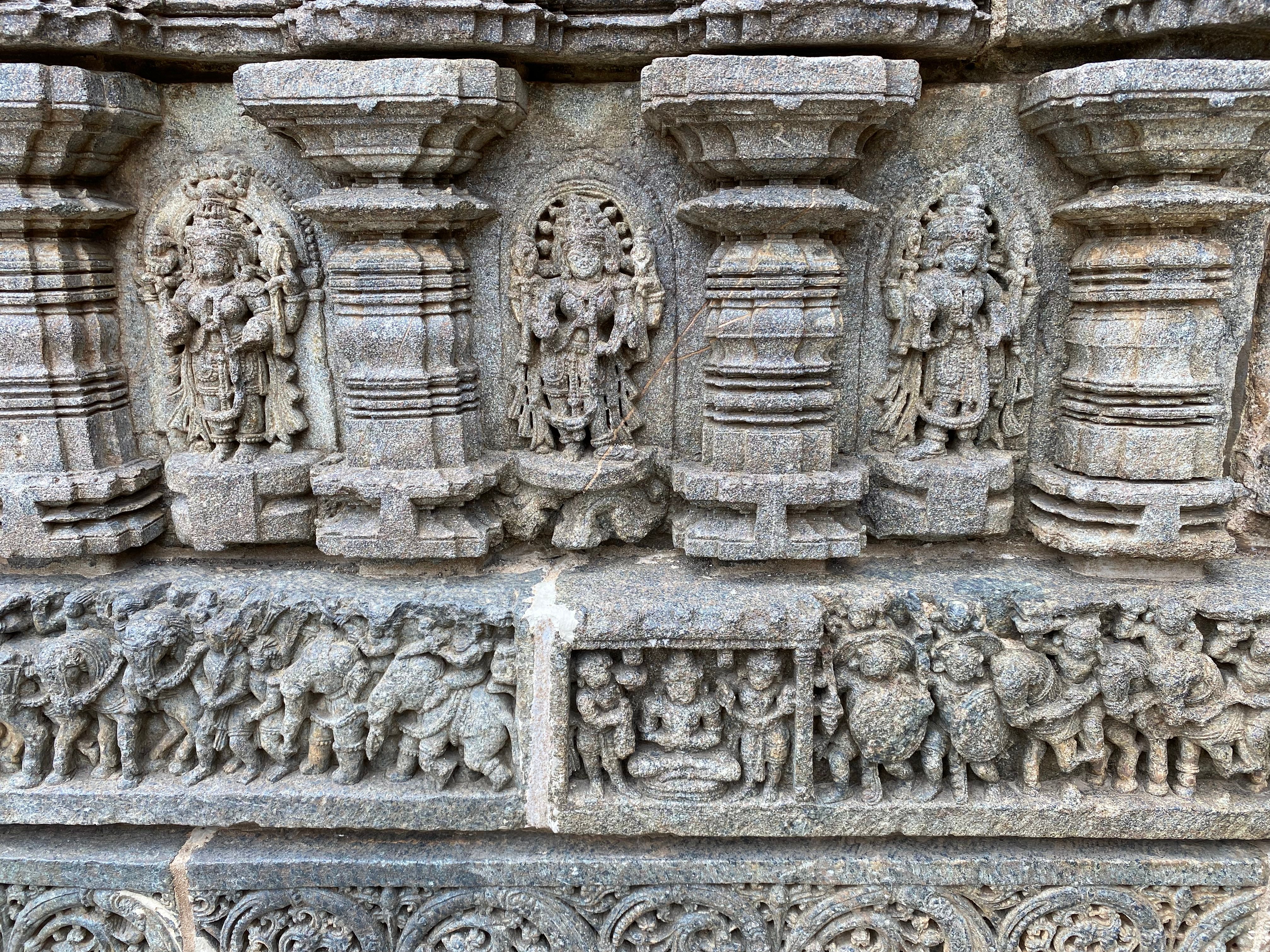 |
| Karna, seated in yogic posture is appointed as the Senapathi of the Kaurava forces |
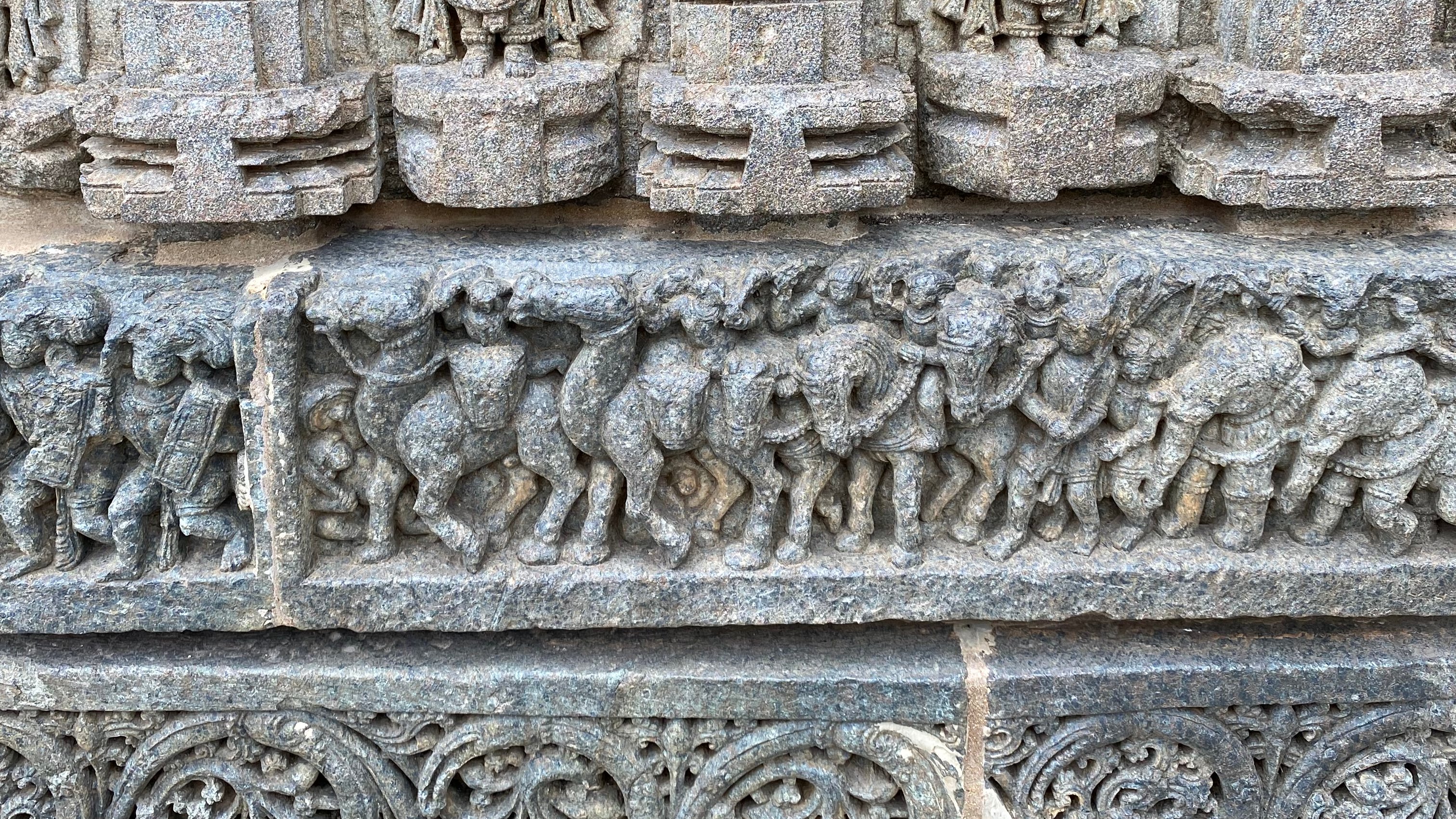 |
| More war scenes. We can clearly see apart from elephants & horses, camels were used in the Kurukshetra war |
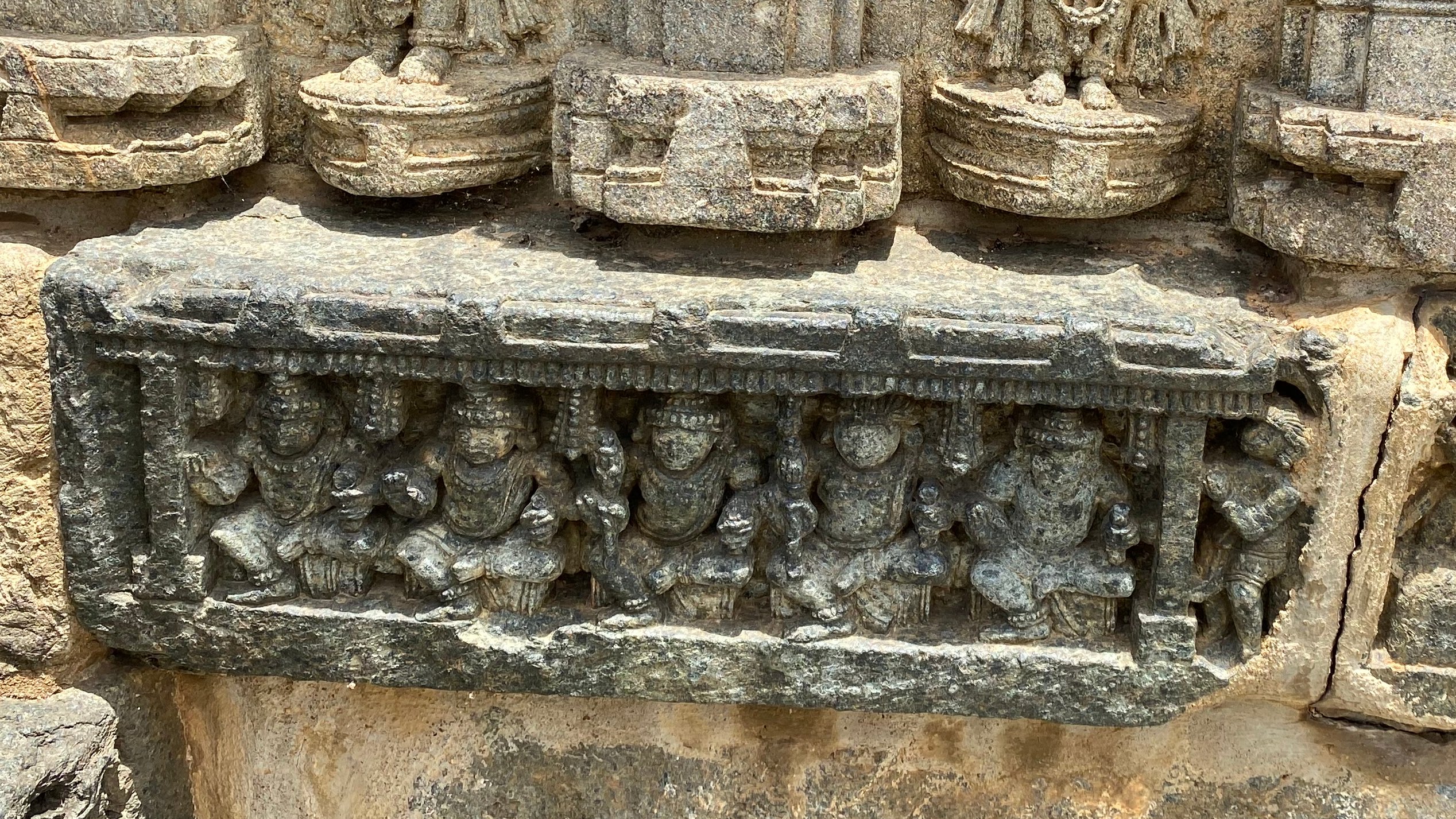 |
| The Mahabharata panels conclude with this particular panel showing the victorious Pandavas in a seated posture under a canopy |
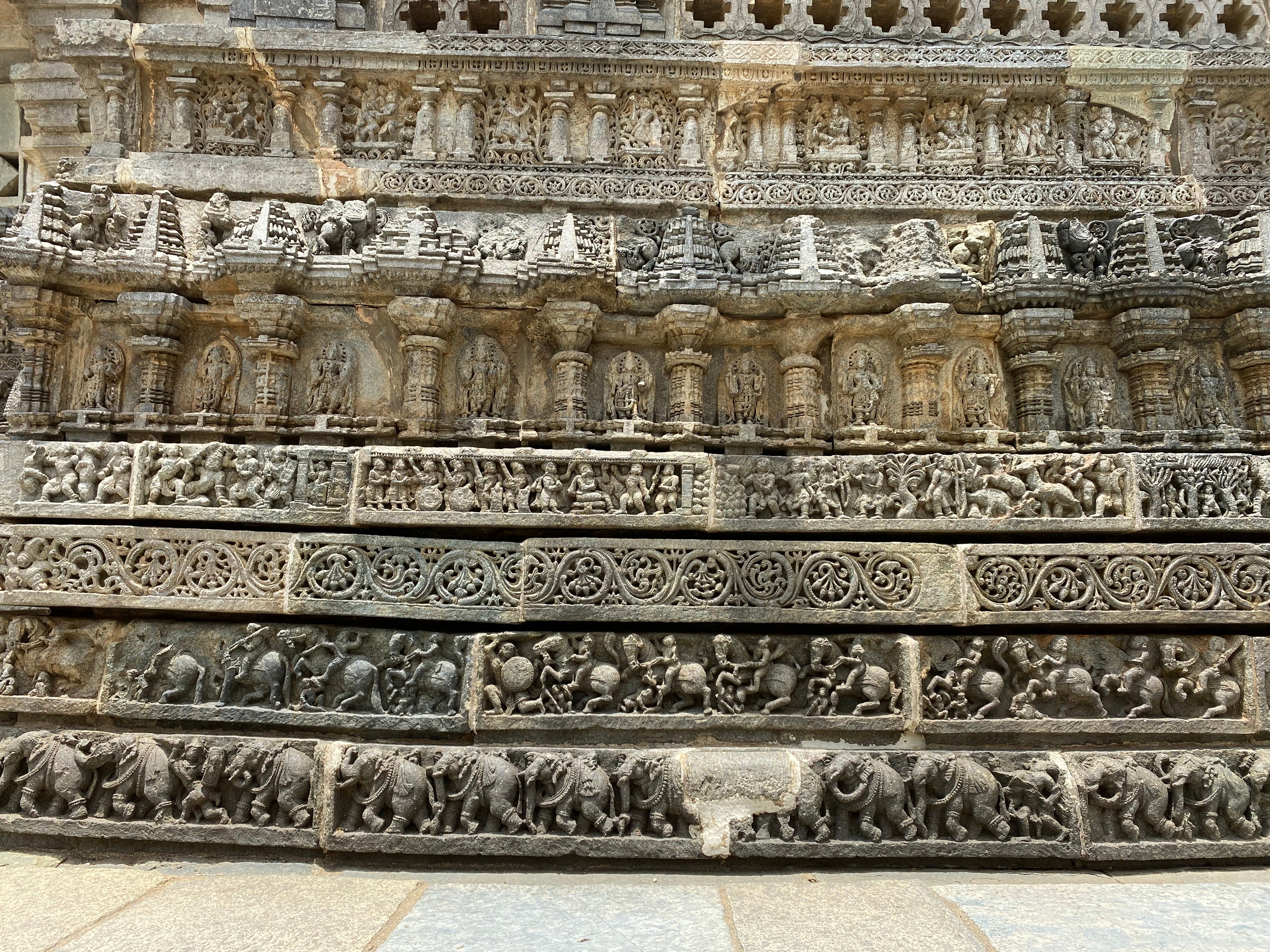 |
As seen in the picture, there are 6 layers of carvings around the temple in this order:
1) Elephant
2) Horse
3) Floral
4) Carvings from Bhagavata, Ramayana & Mahabharata
5) Small sculptures of various deities including 24 forms of Vishnu
6) Railing carvings of Prahlada |
THE PRAHLADA PANELS
 |
| Panels showing Prahlada subjected to torture by soldiers on the instructions of Hiranyakashipu |
 |
| Elephant let loose on Prahlada in order to stomp him to death |
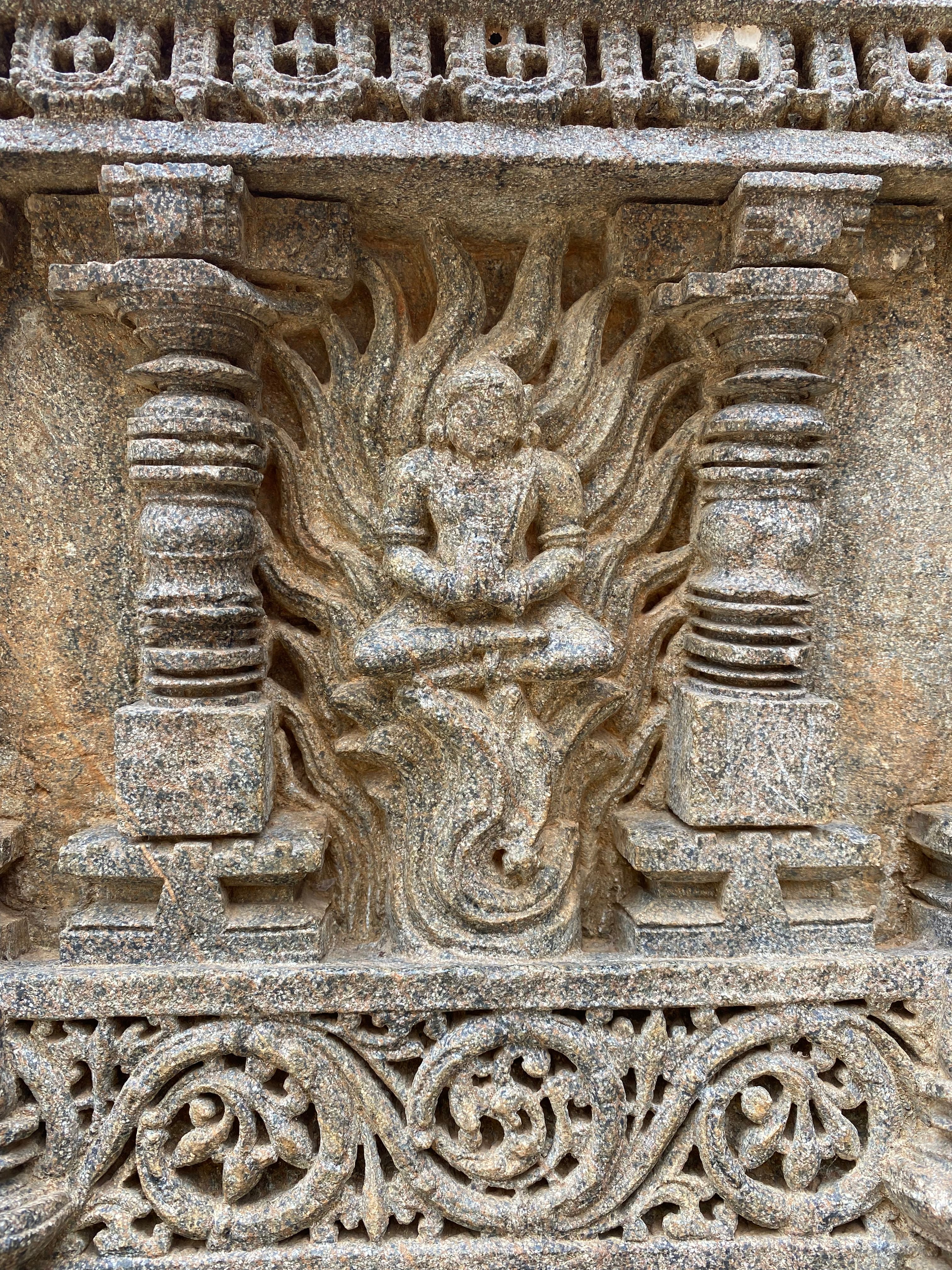 |
| Prahlada set on fire |
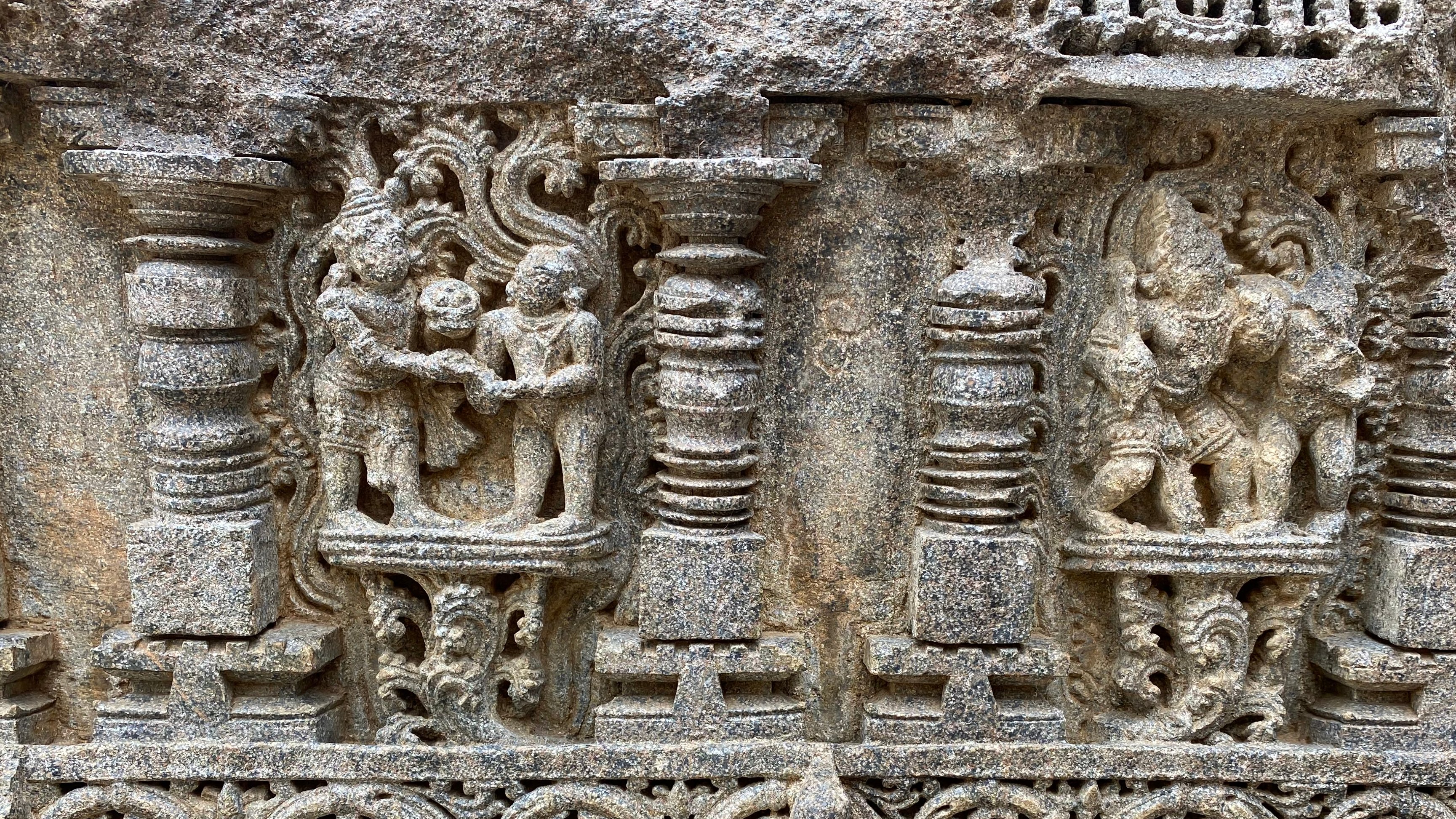 |
| Prahlada threatened with beheading |
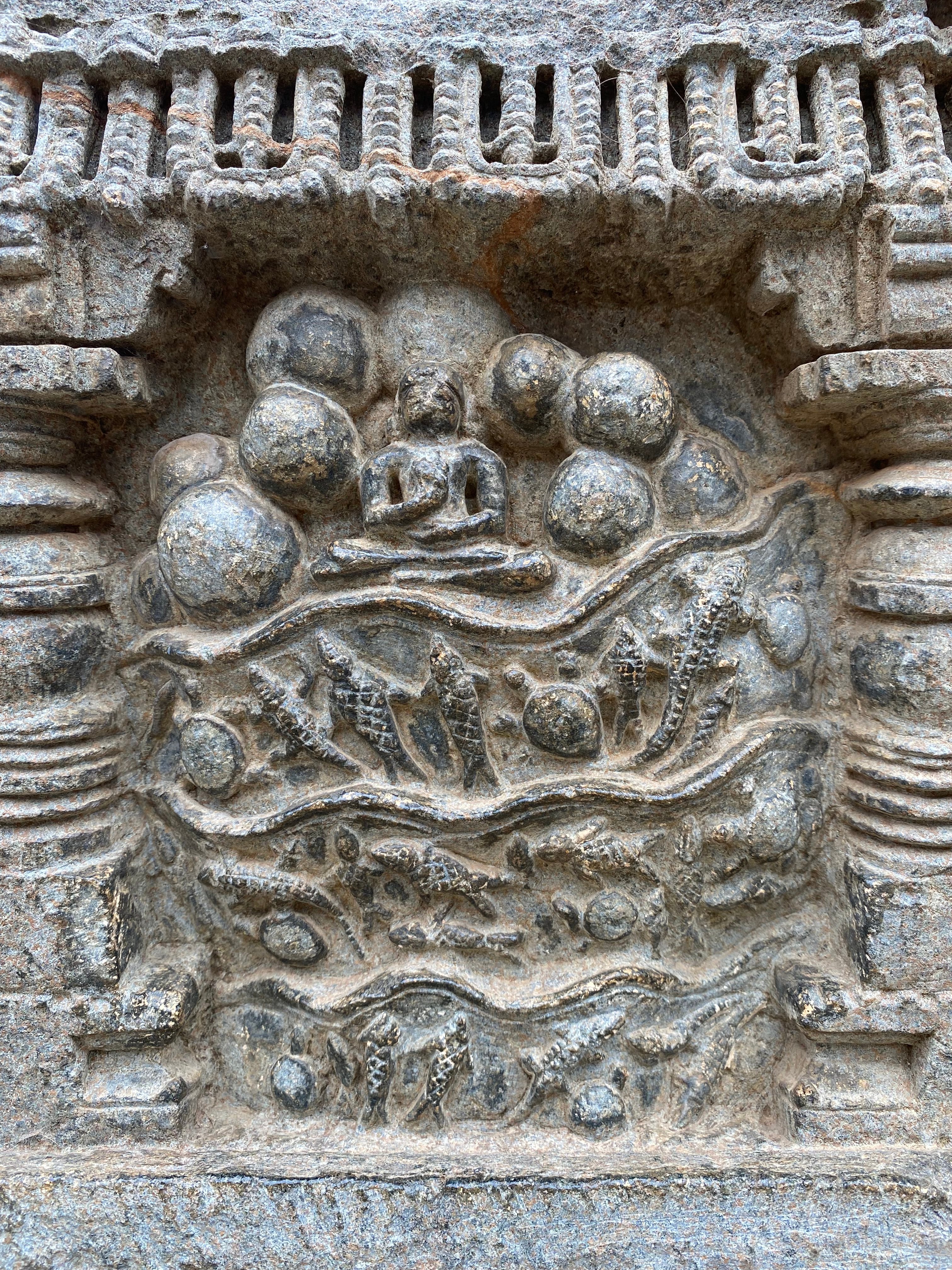 |
| Prahlada thrown into the sea . Fish & turtle carvings can be seen |
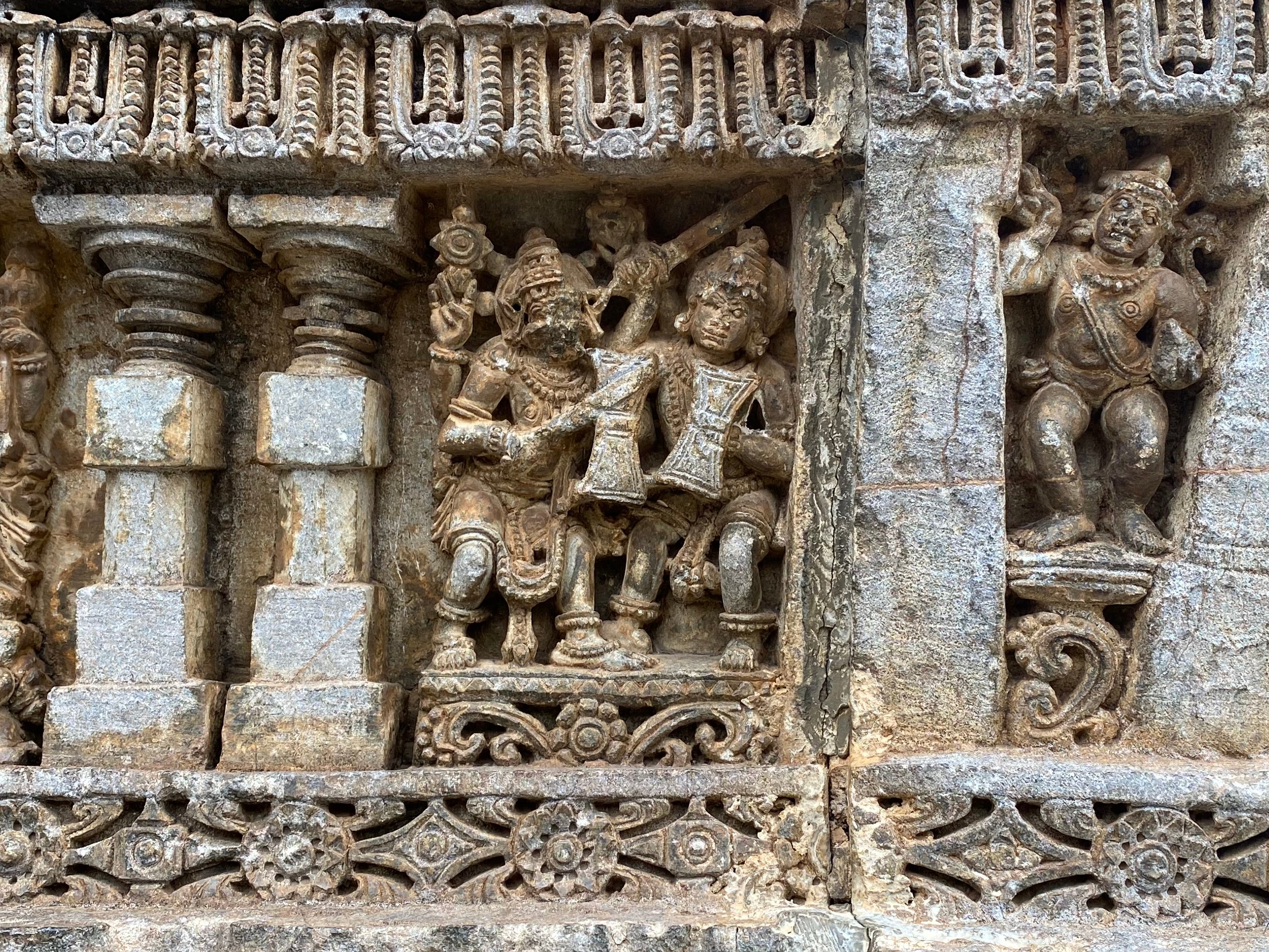 |
| Narasimha fights & slays Hiranyakashipu |
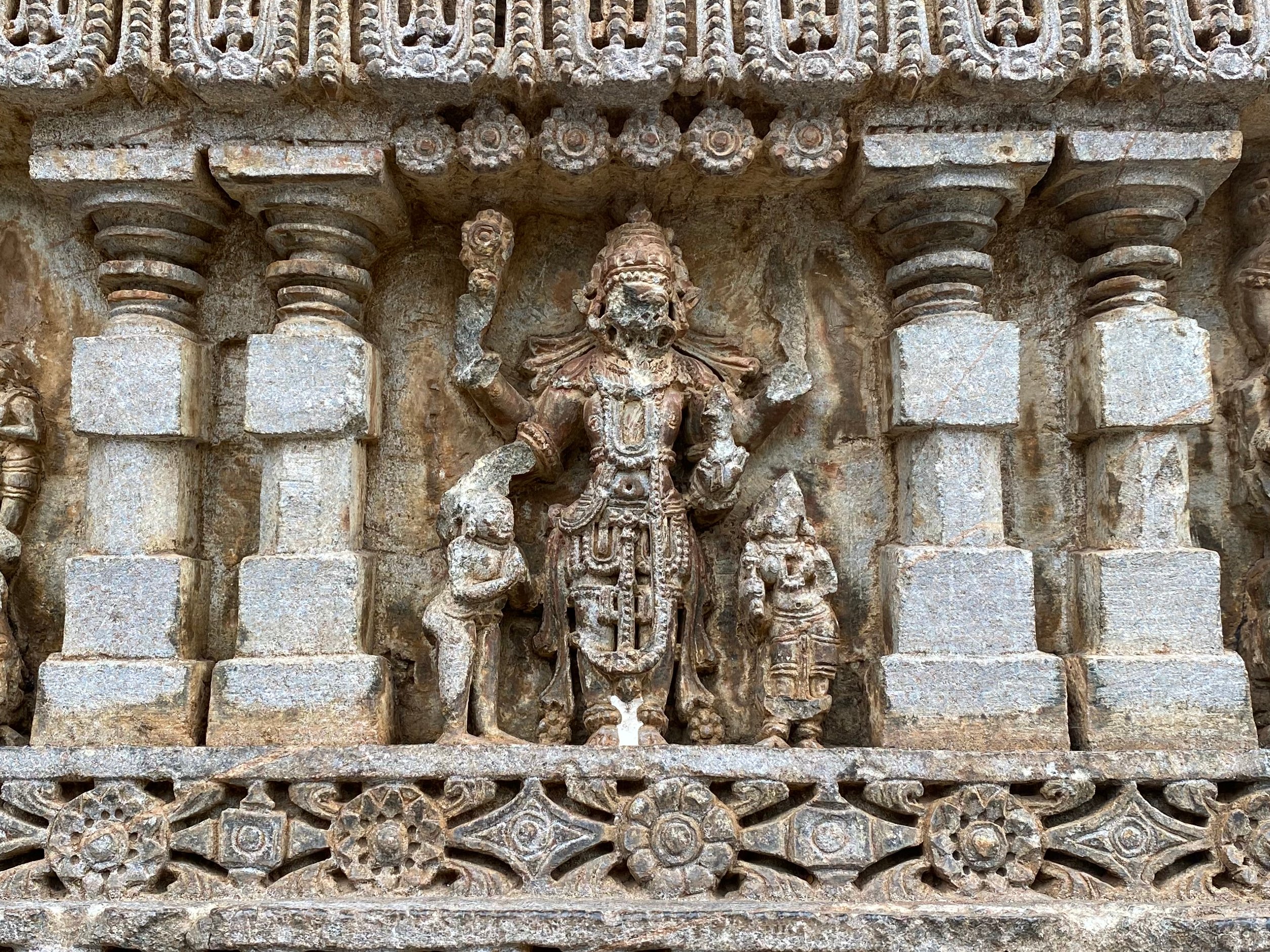 |
| Narasimha blesses Prahlada |
 |
| Garuda |
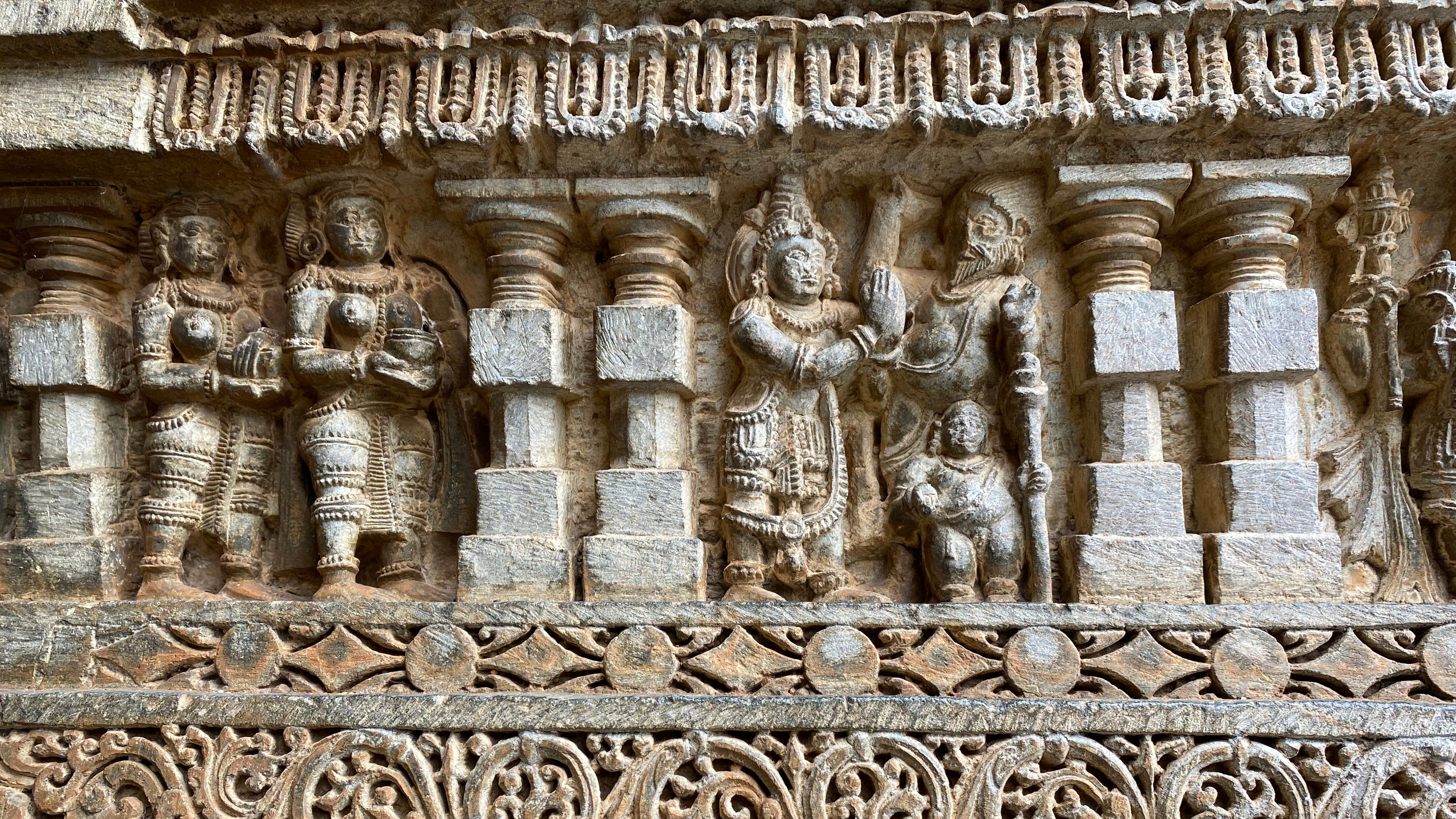 |
| Bali requesting Shukra no to prevent his gift to Vamana |
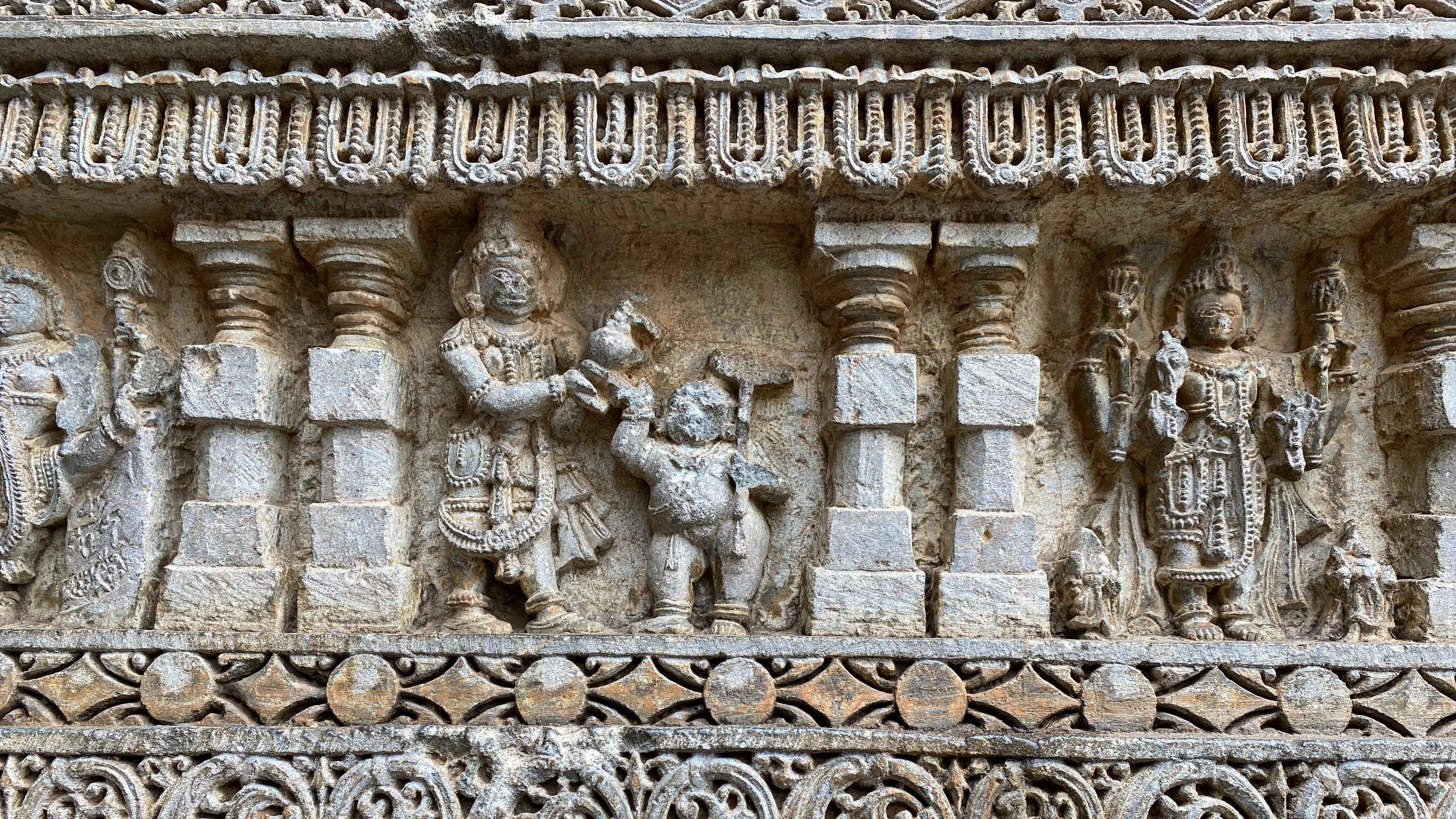 |
| Bali gives daana to Vamana. Next to this panel is a small carving of Vishnu |
TEMPLE INTERIOR
Lets have a look at the temple interior. The temple has 3 cells each housing a murthi of Venugopala ,Keshava & Janardhana.
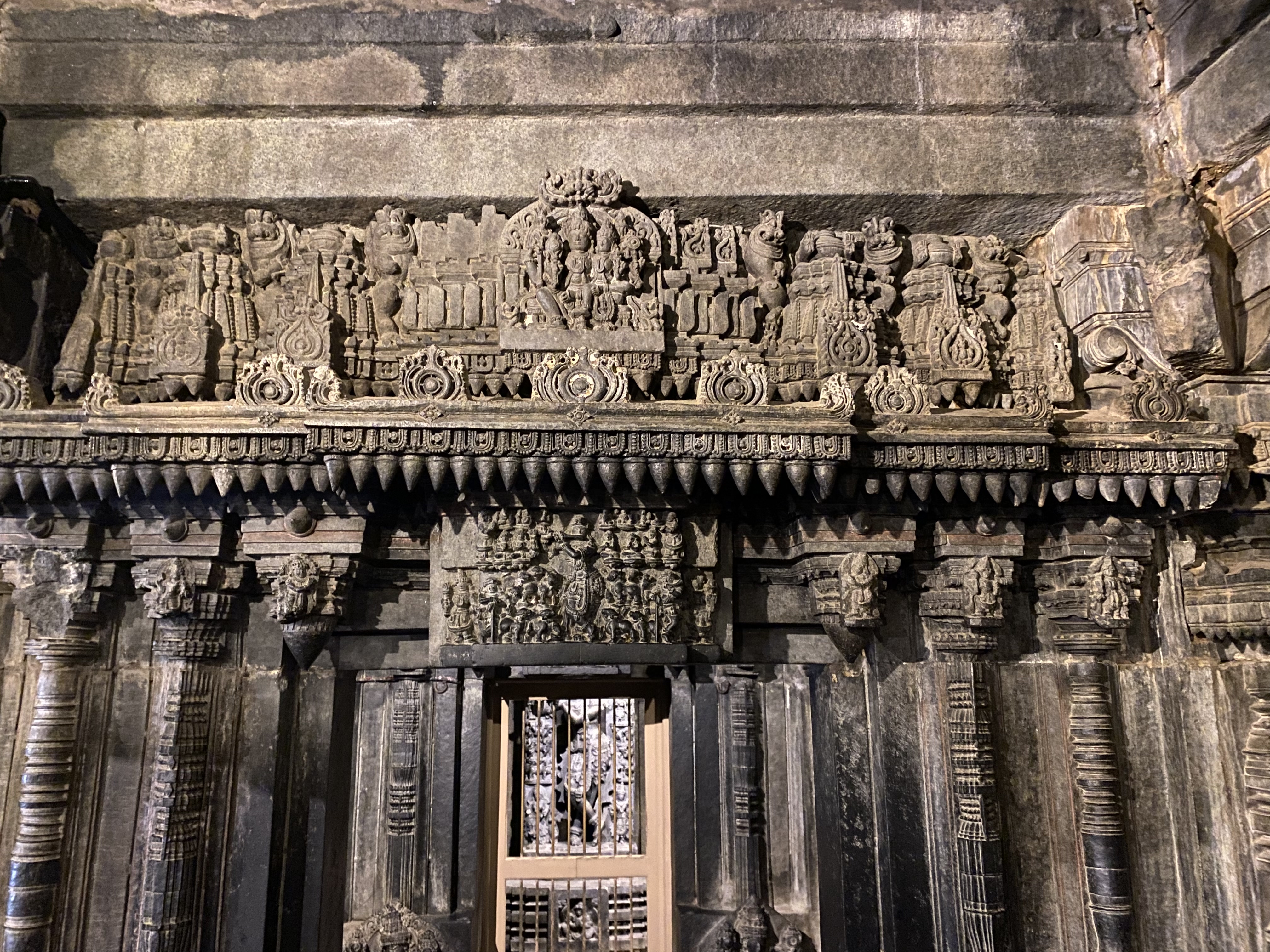 |
| The south garbhagriha houses a murthi of Venugopala. The doorway leading to south sukhanasi has a lintel featuring a carving of Venugopala. Above this is a carving of Lakshminarayana seated in suksana |
 |
| Lakshminarayana & Venugopala |
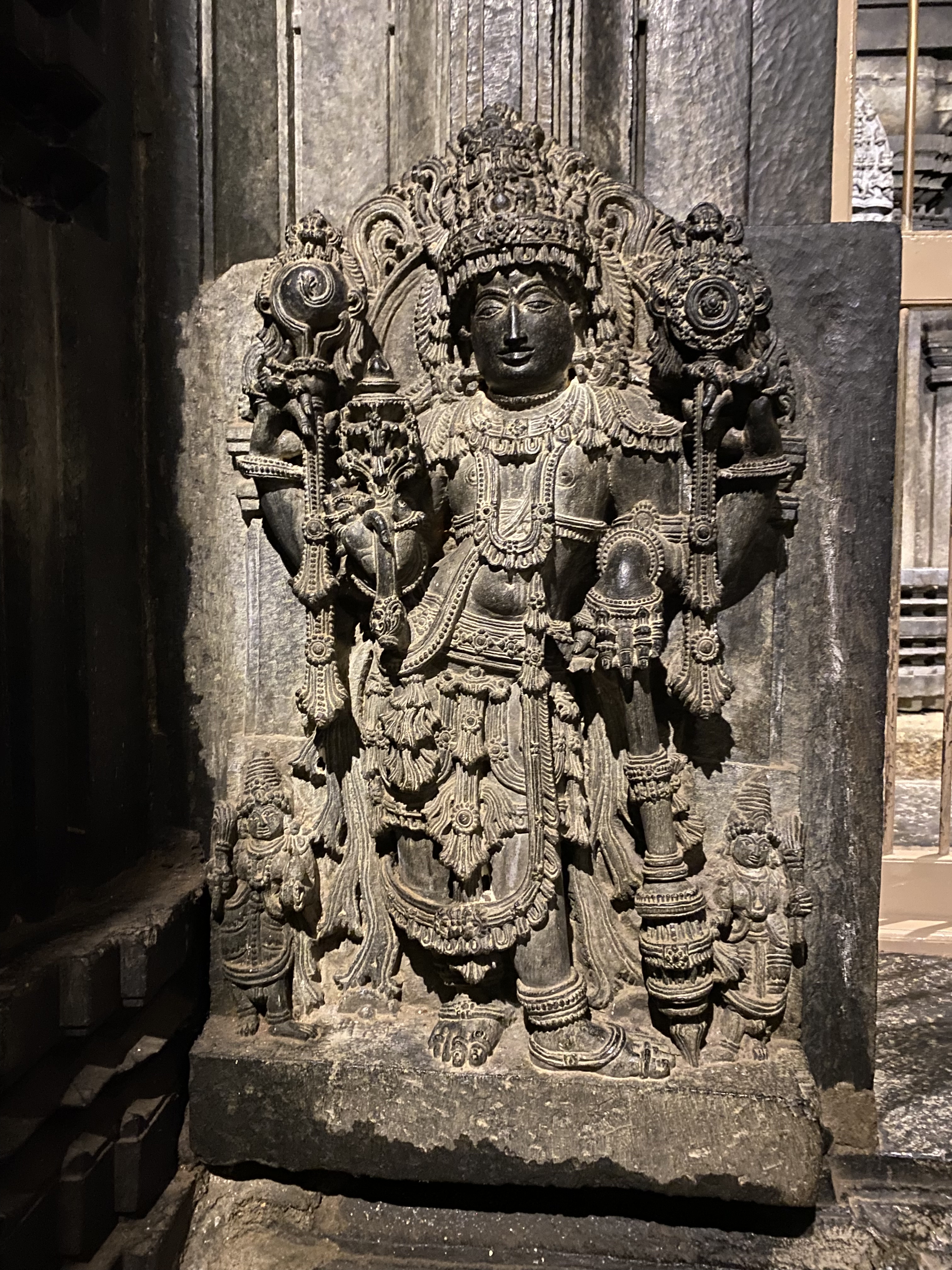 |
| Jaya |
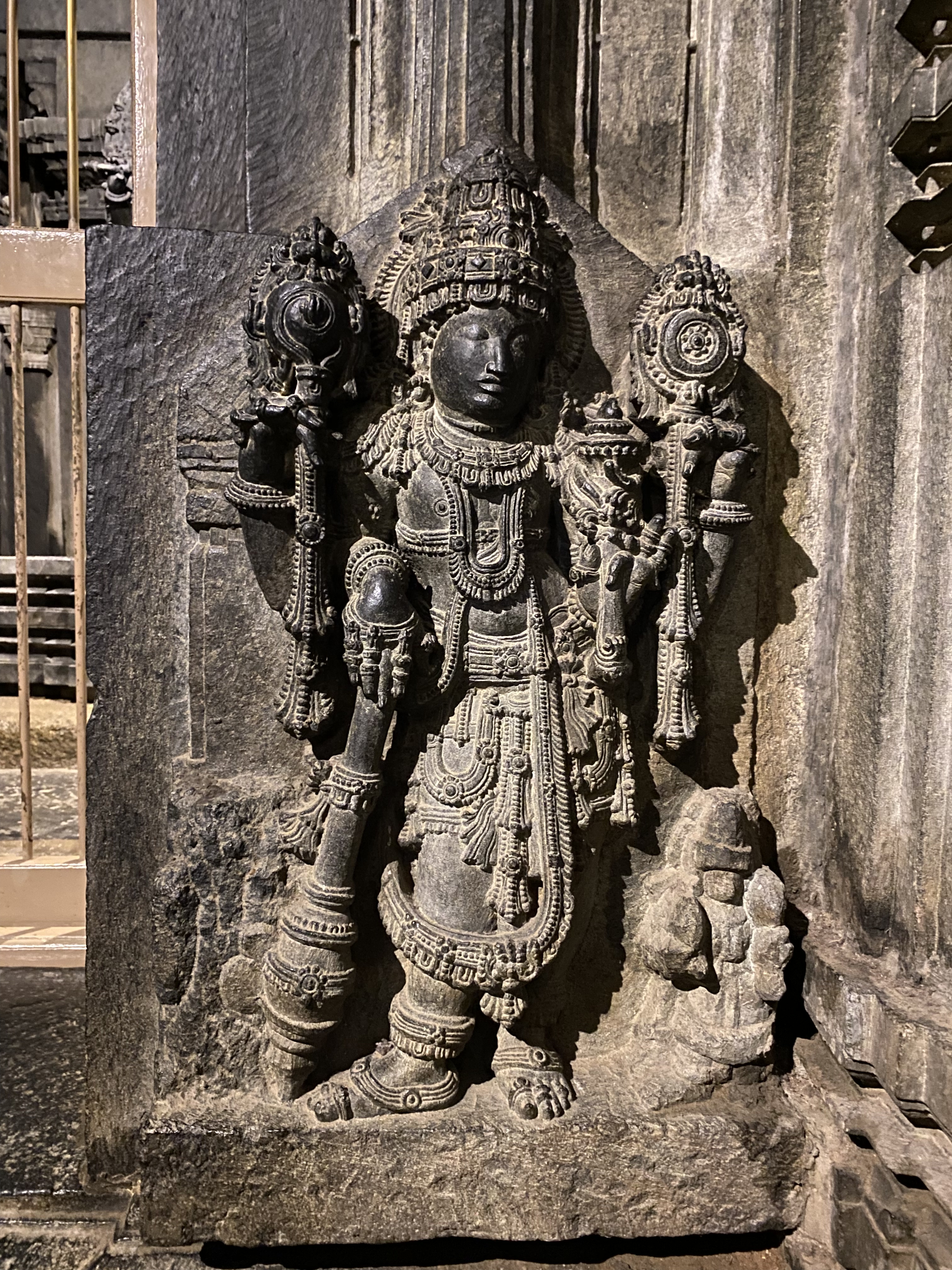 |
| Vijaya |
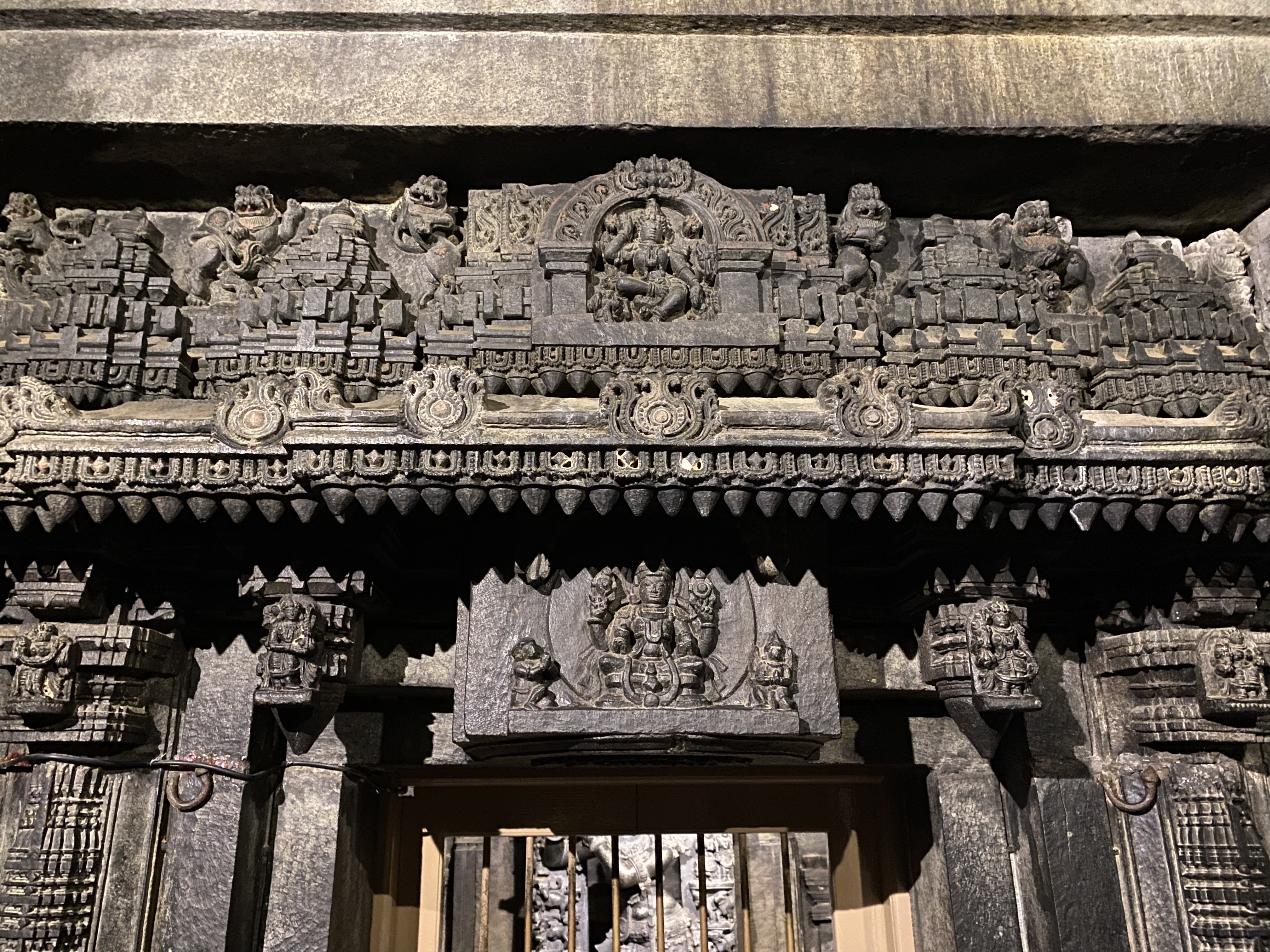 |
| The uttaranga portion of the garbhagriha doorway features a carving of a dancing form of Vishnu |
 |
| Inside the garbhagriha stands this magnificent murthi of Venugopala. The height of the murthi including the pedestal must be around 7 feet. Here Krishna is represented as being fully ornamented. He stands crossing his legs and leans against a tamala tree |
 |
| The torana features various carvings including that of these cows, who have lifted their heads up & intently listing to Krishna playing the flute |
 |
| The torana has carvings of various rishis. Near its edges are carved the 10 avataras of Vishnu |
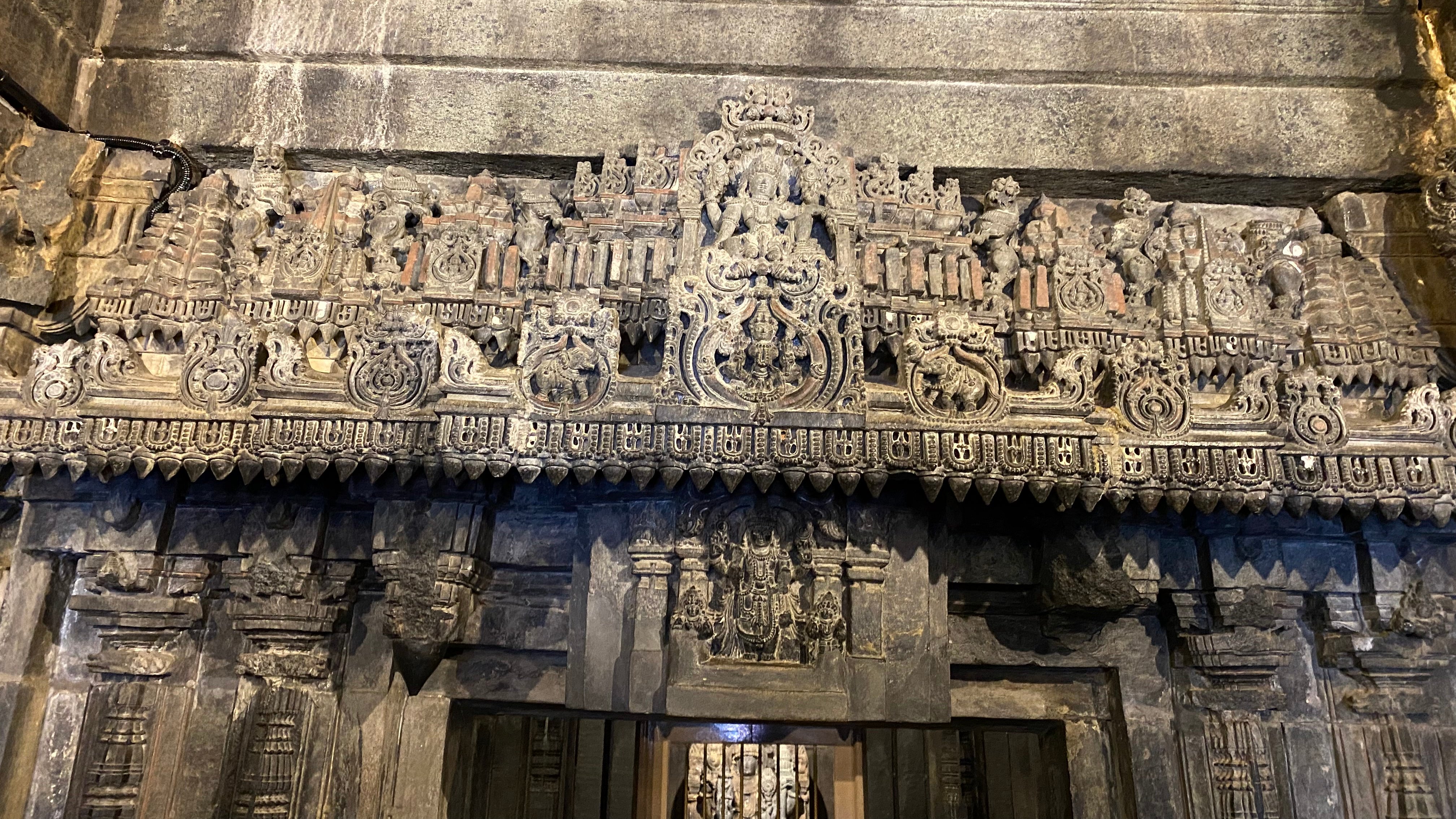 |
| The doorway leading to the west sukanasi has a lintel featuring a carving of a standing image of Keshava. Above this a carving of Gaja Lakshmi |
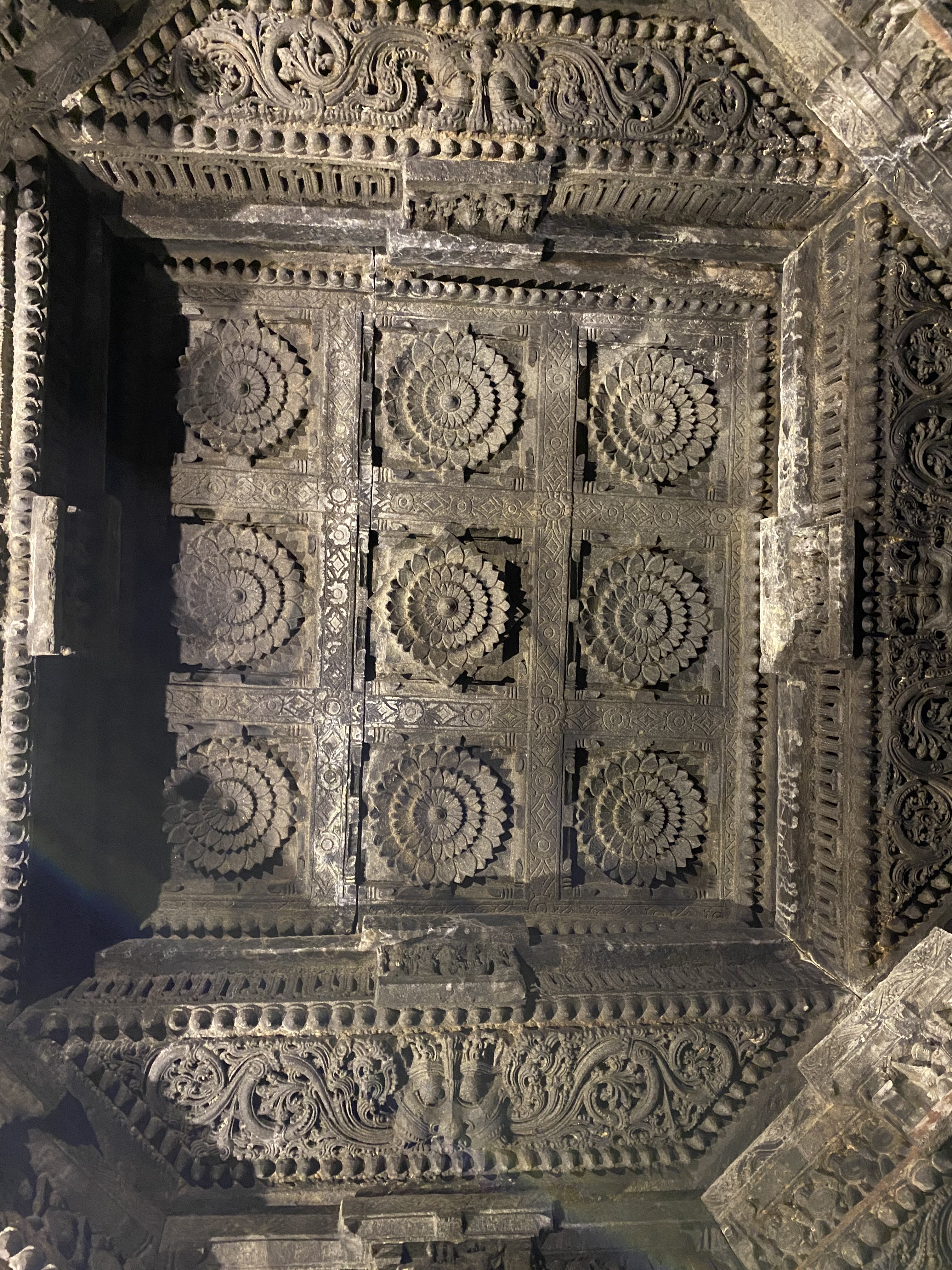 |
| West sukanasi ceiling |
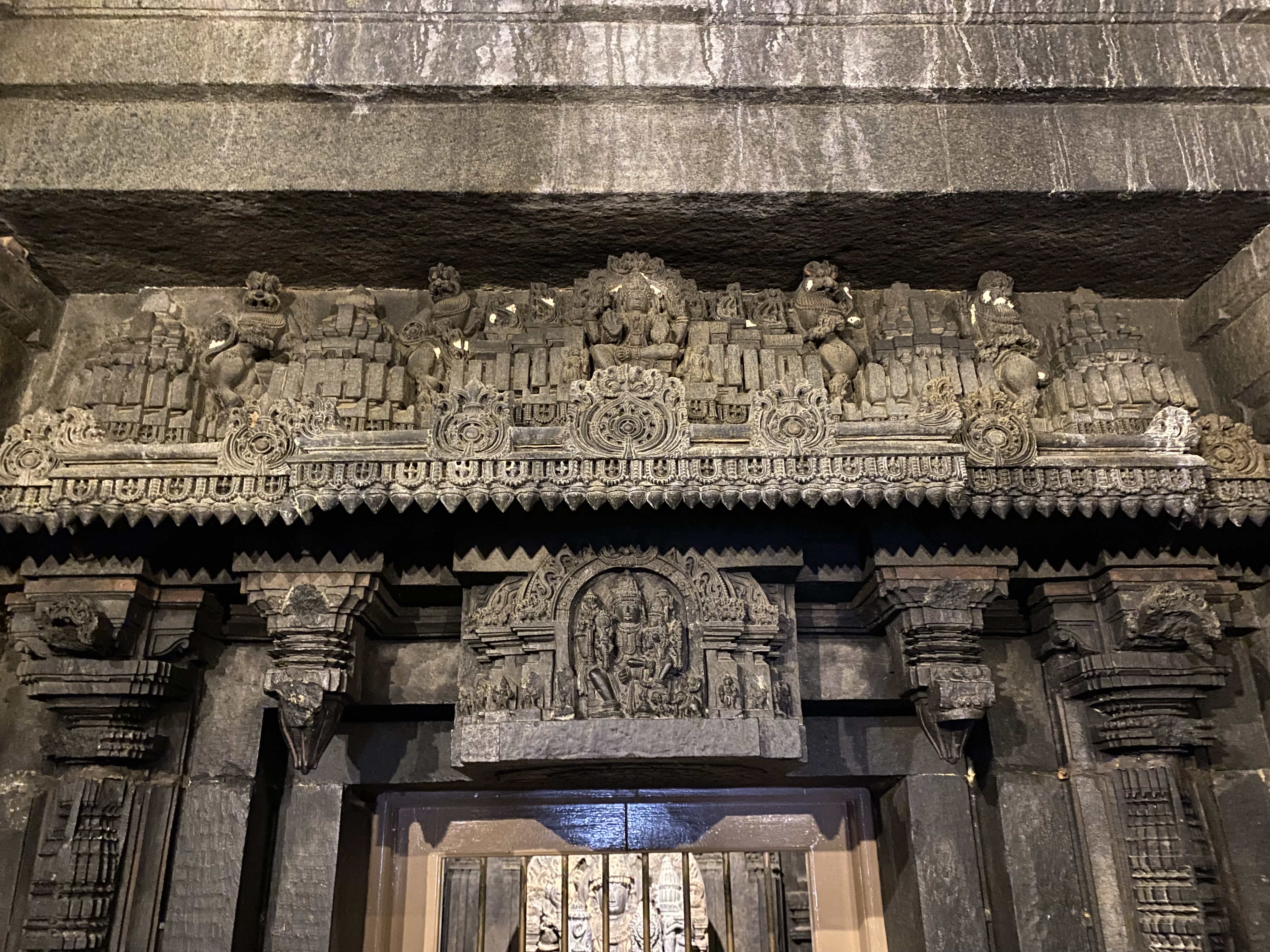 |
| West garbhagriha doorway. On the lintel is an image of Lakshminarayana. Above this is an image of Vishnu seated in sukasana |
 |
| Inside the garbhagriha is this replacement murthi of Keshava. In each of his 4 arms, he holds a Shanka Gada, Chakra & Pushpa. This is actually not the original murthi which was probably destroyed or smuggled away |
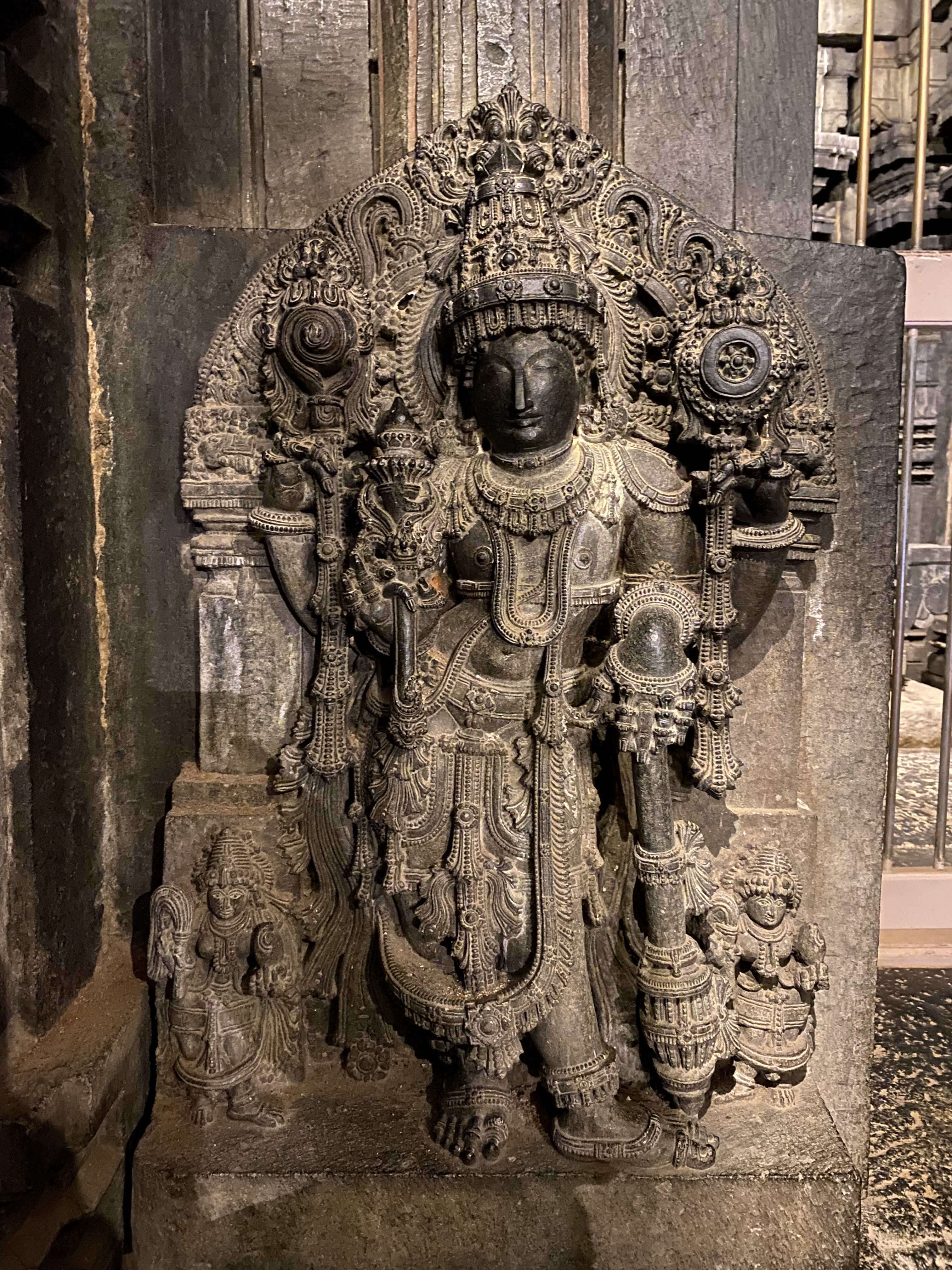 |
| Dwarapalaka |
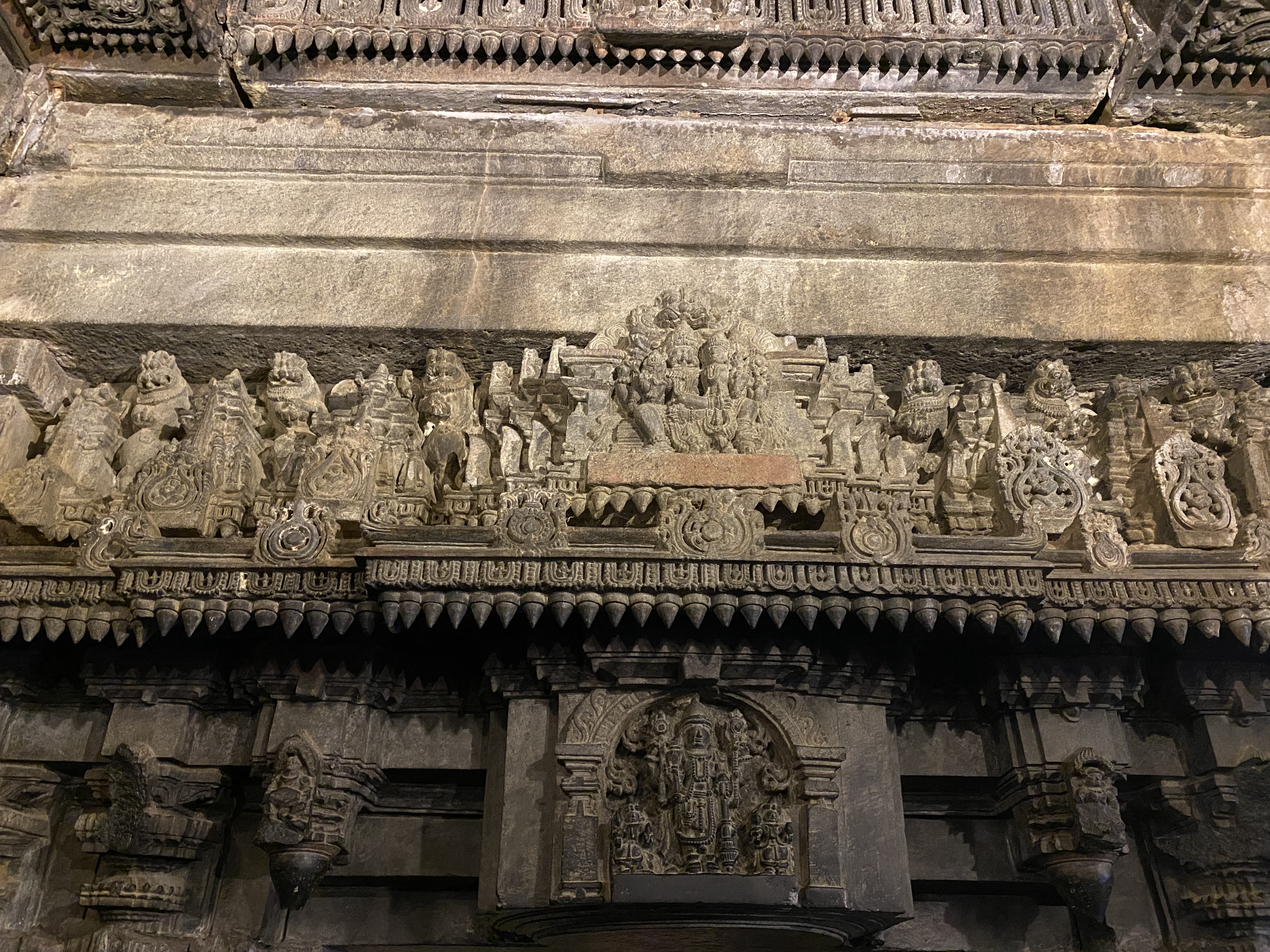 |
| This is the doorway of the north sukanasi. On its lintel is an image of Janardhana. Above this is an image of Lakshmi-Narasimha |
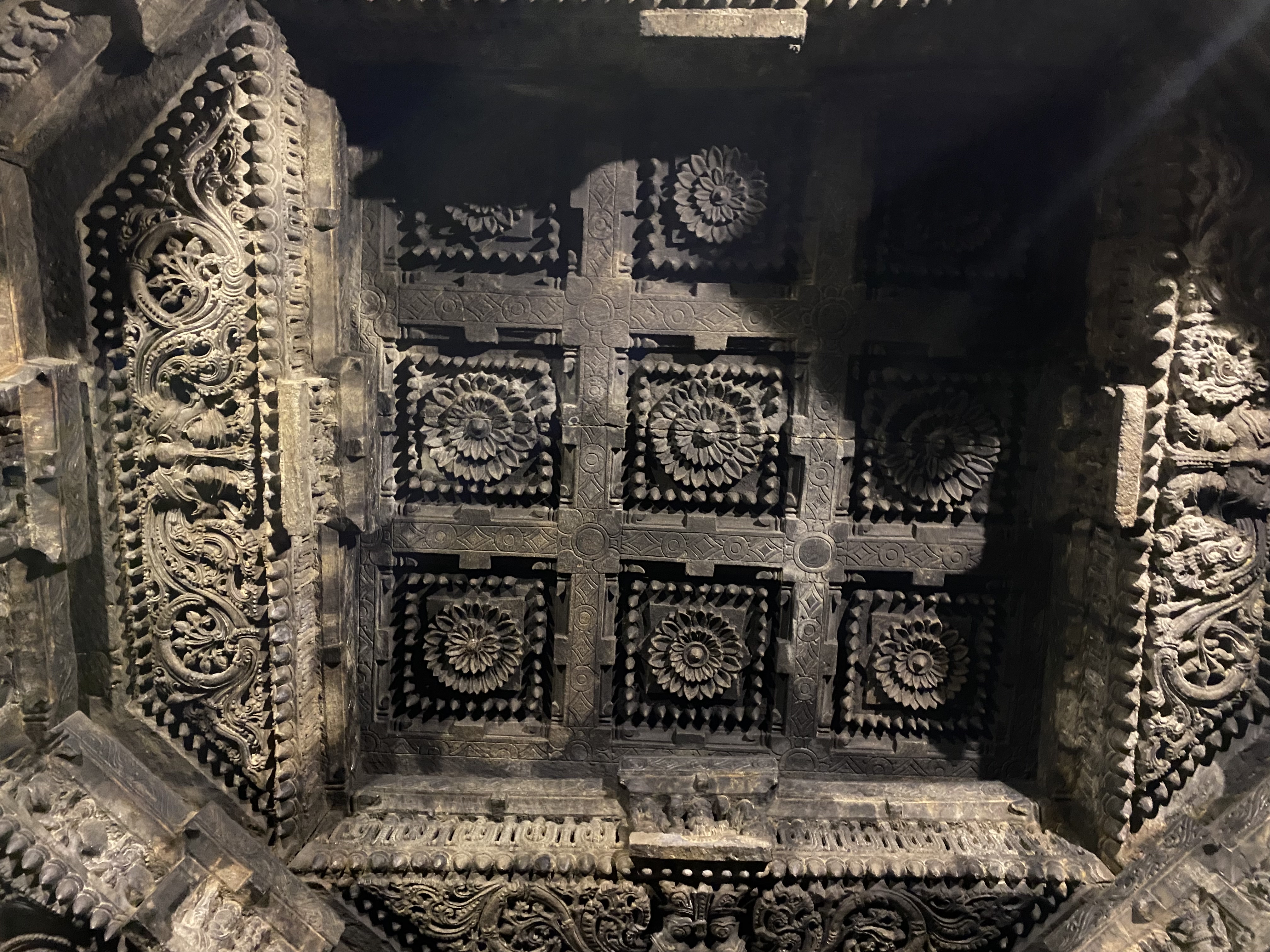 |
| North sukanasi ceiling |
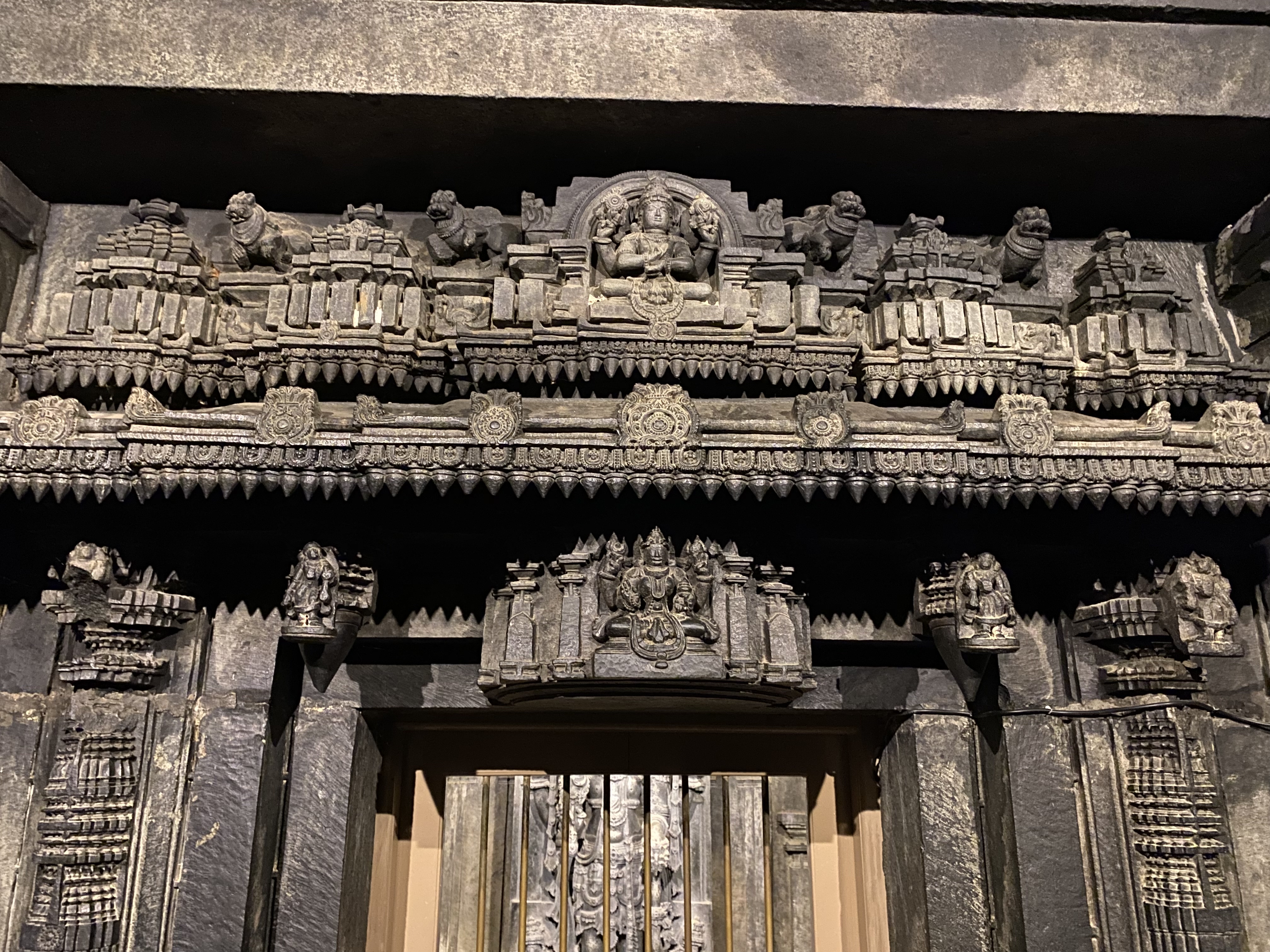 |
| The north garbhagriha doorway. It features images of a seated Lakshmi holding akshamala, chakra, shanka & kalasa. Above this is an image of Yoganarayana seated in yogasana posture |
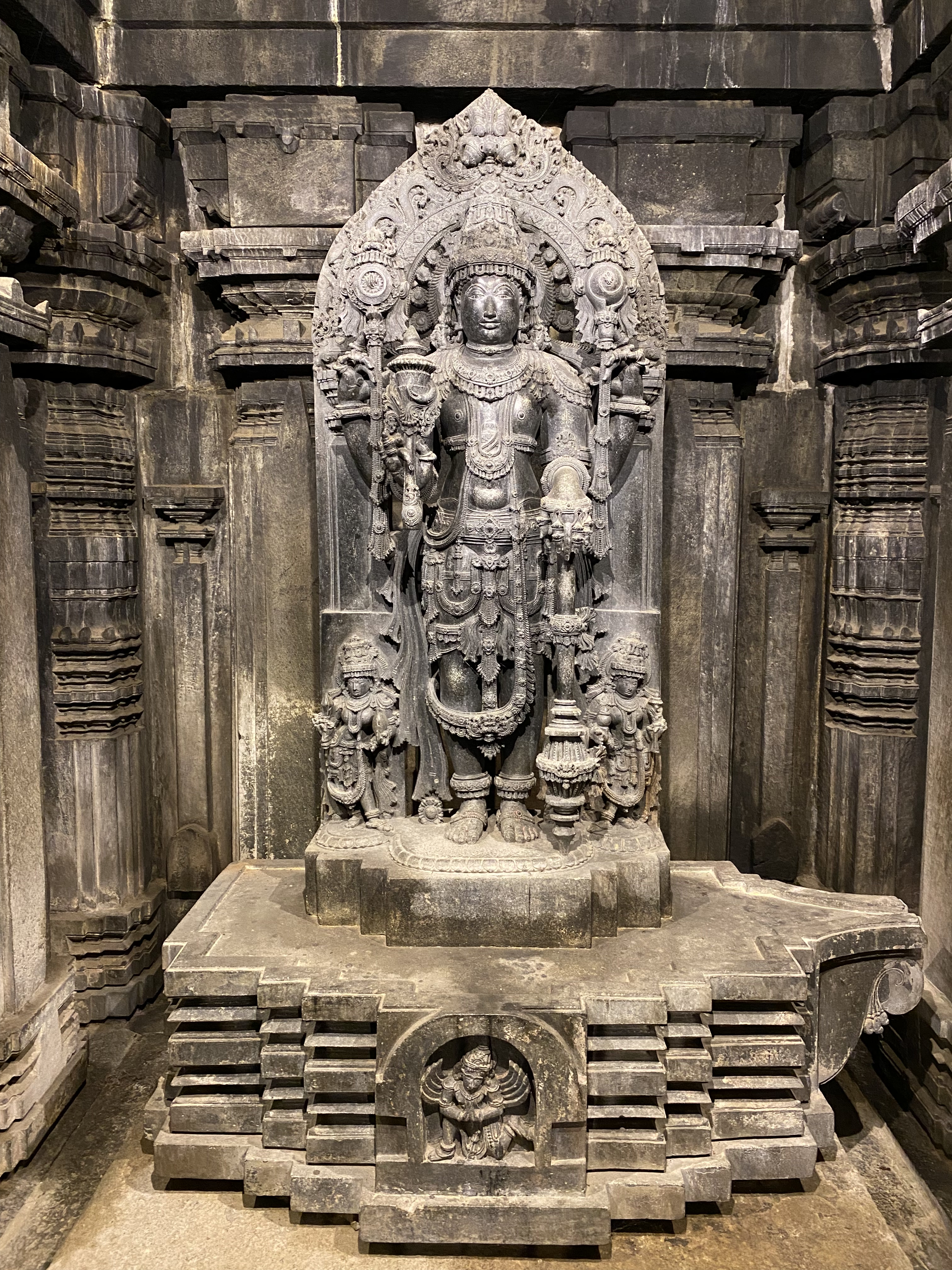 |
| The garbagriha houses this brilliant image of Janardhana. Each of his 4 arms holds a chakra, shanka, gada & pushpa. He is flanked on either side by ayudhapurushas. The torana also features the dashavatara |
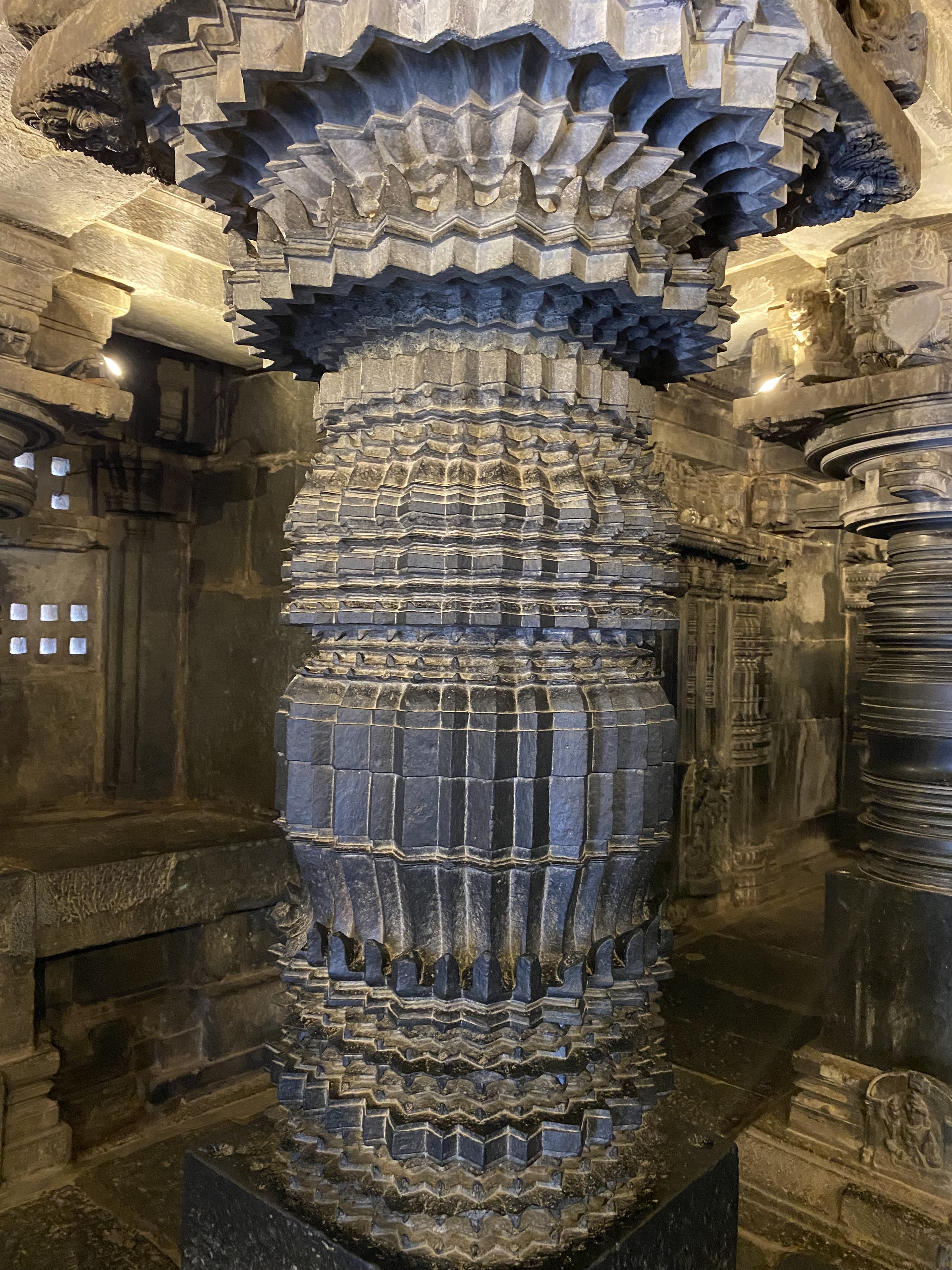 |
| Fluted column from the rangamantapa |
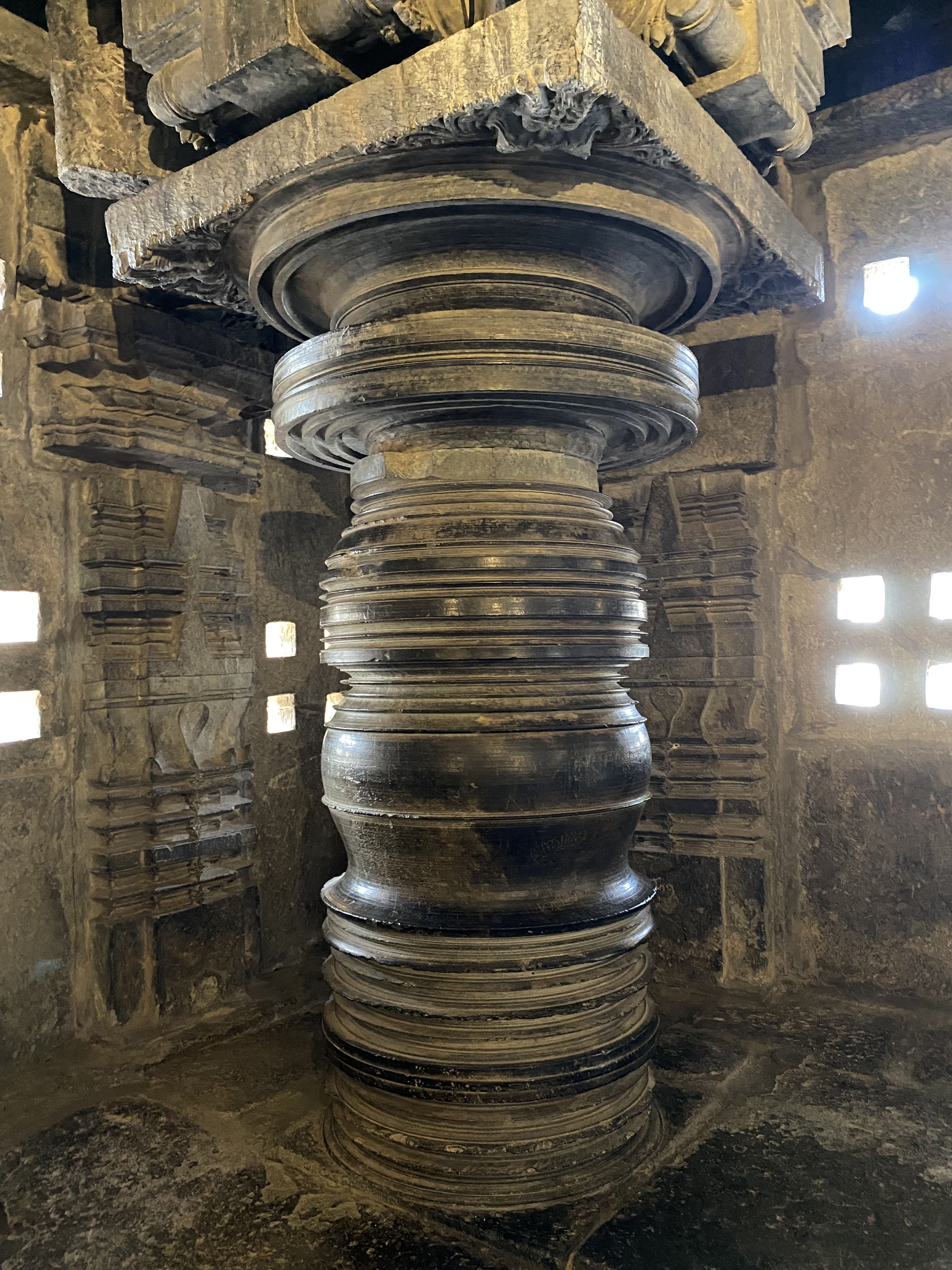 |
| Srikara column from the rangamantapa |
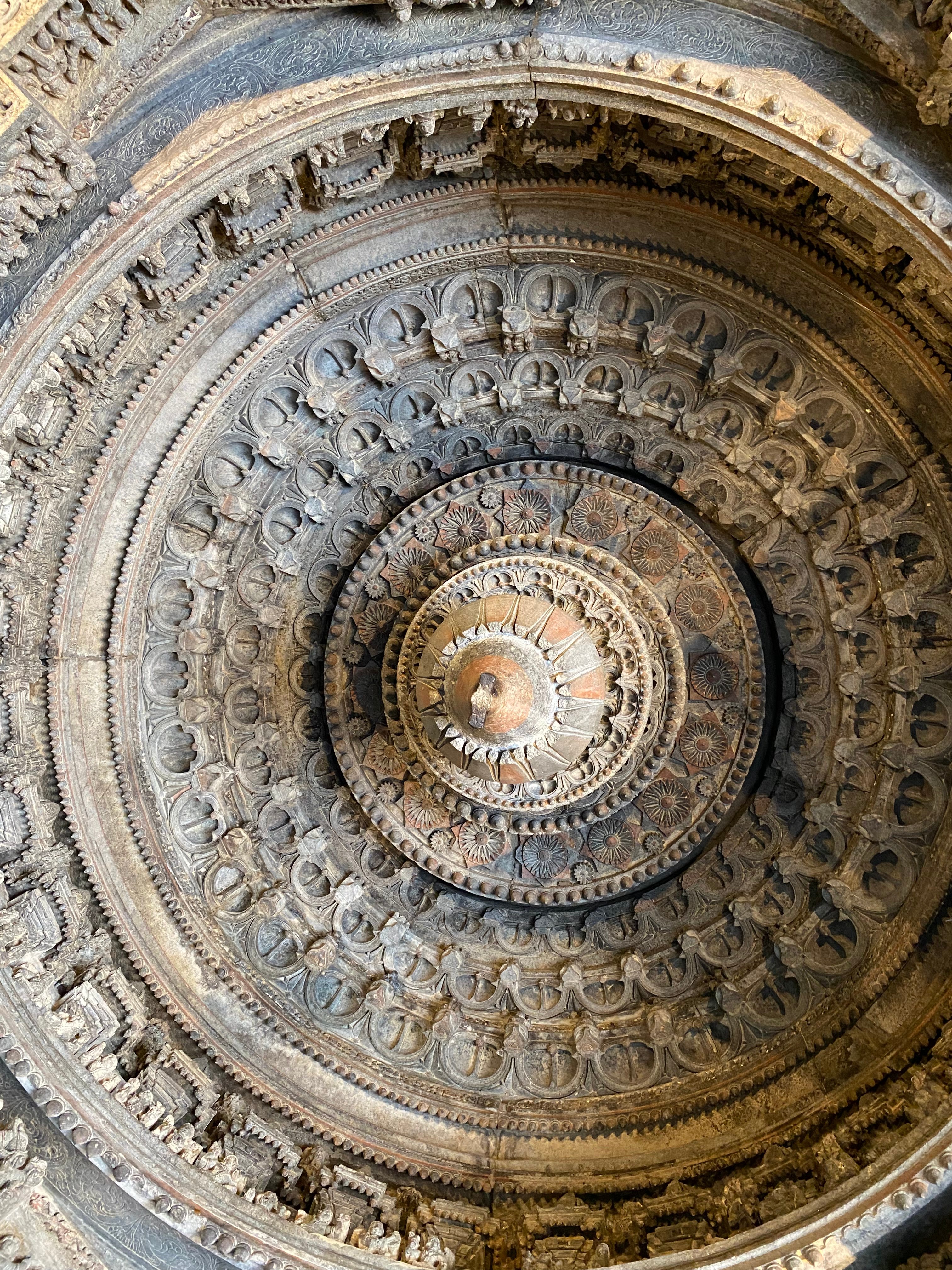 |
| Sabhamandaraka ceiling from the rangamantapa |
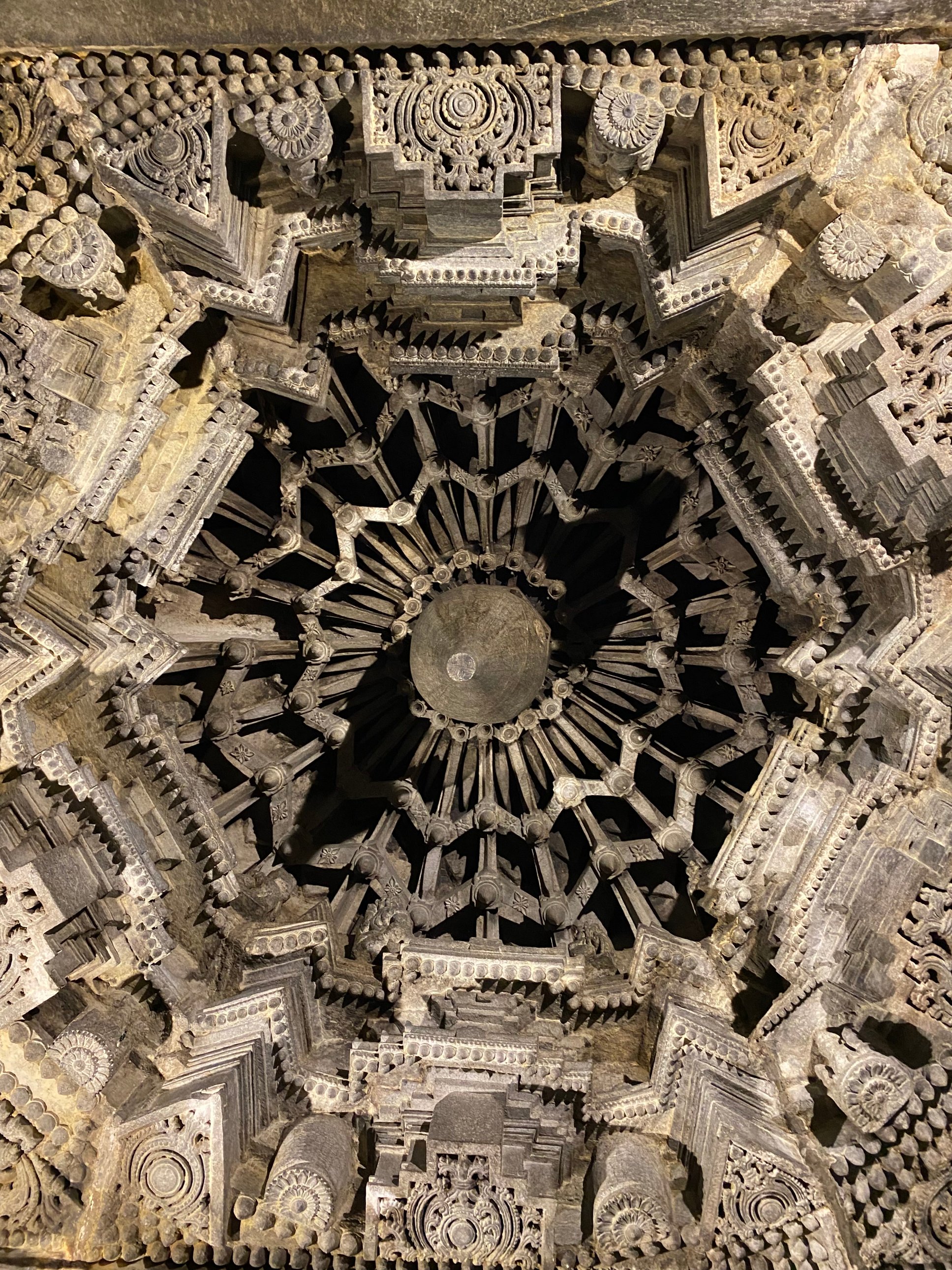 |
| Nabhicchanda ceiling from the rangamantapa |
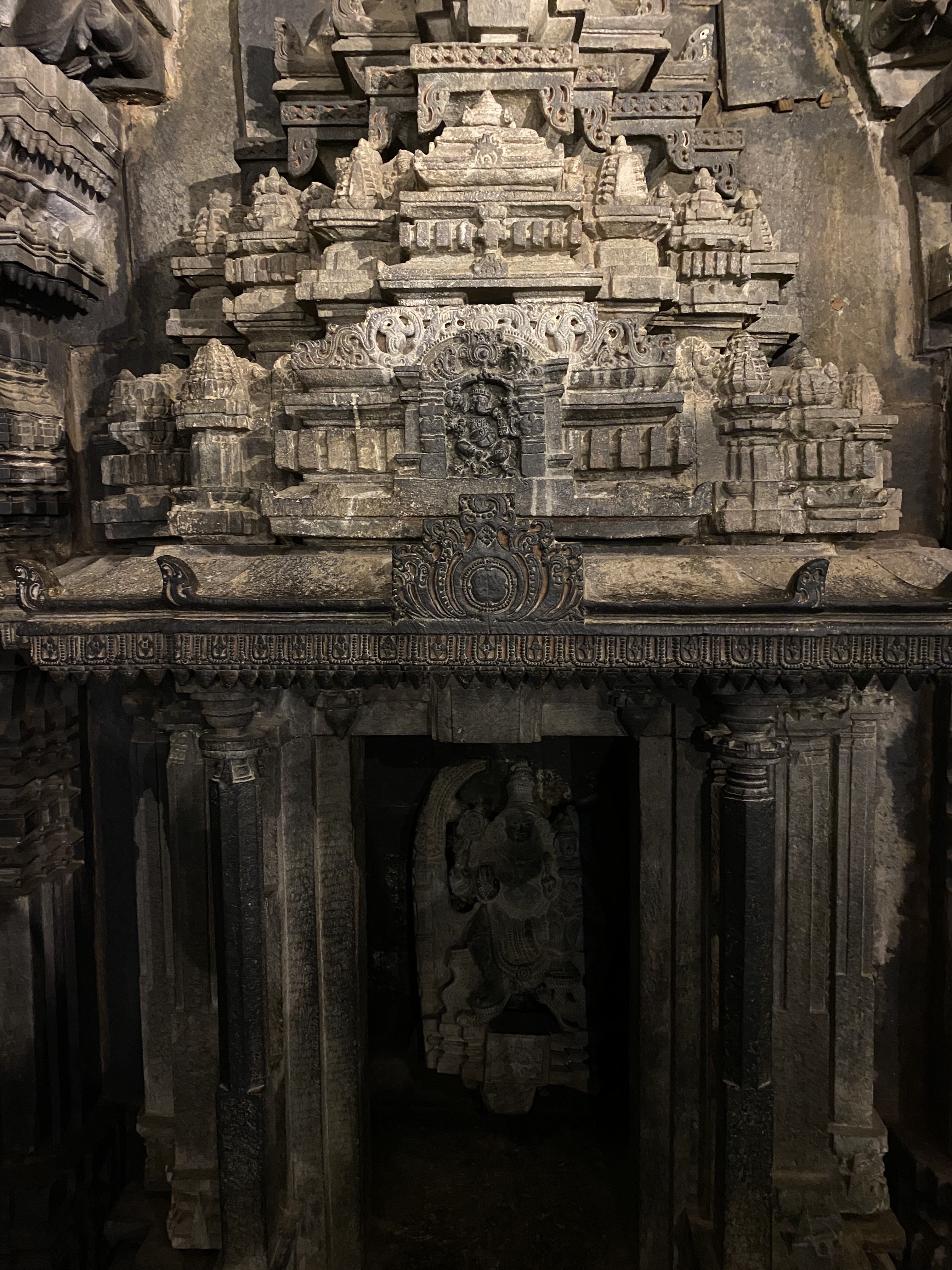 |
| This smaller gudi in the rangamantapa originally housed a murthi of Ganesha. A miniature carving of Ganesha can be seen on the Lalatabimba. The ASI has now placed a murthi of Lakshminarayana inside the gudi. The original Ganesha was either destroyed or smuggled away |
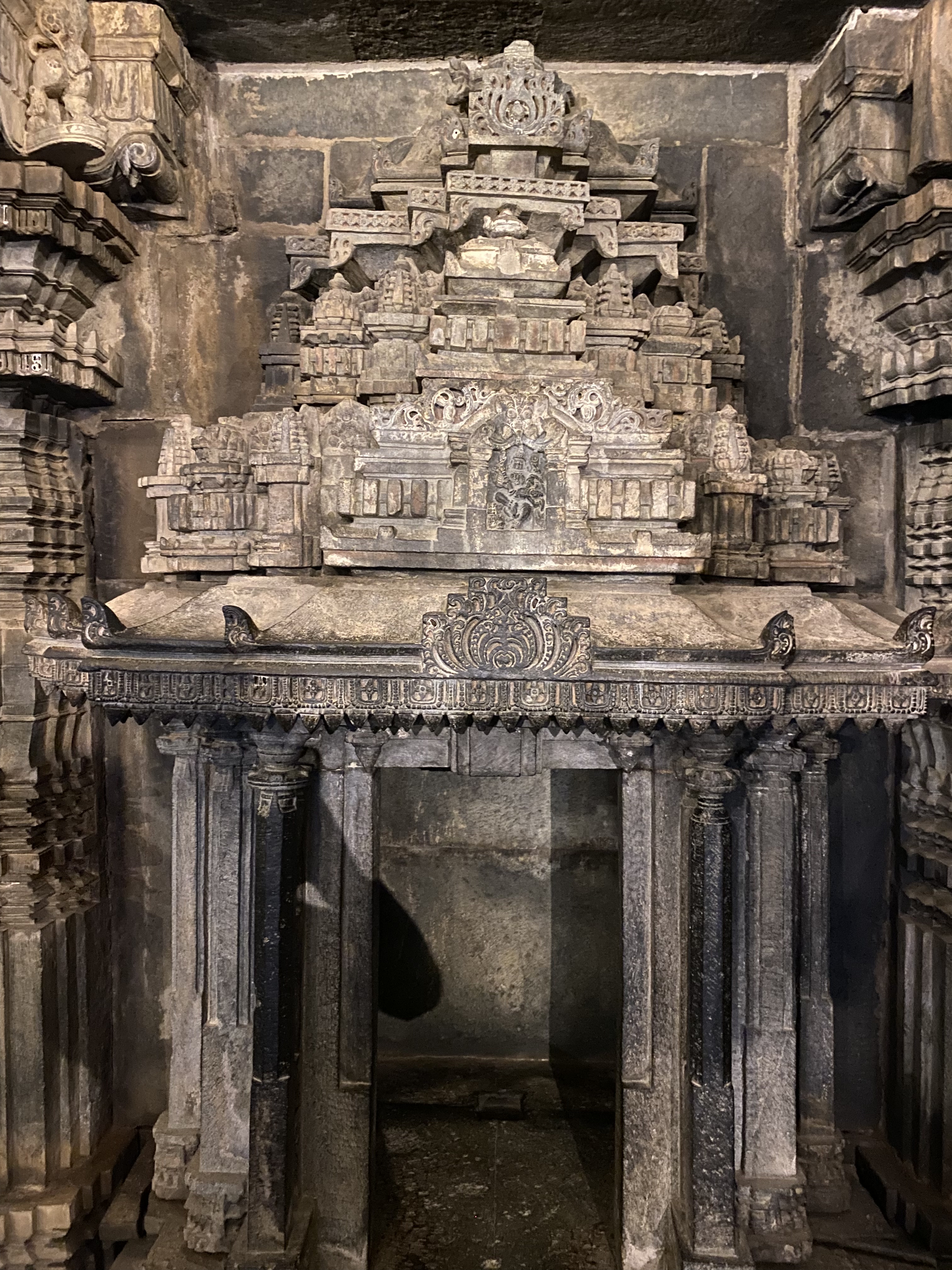 |
| This gudi once housed a murthi of Mahishasuramardhini. Now its empty |
TEMPLE EXTERIOR
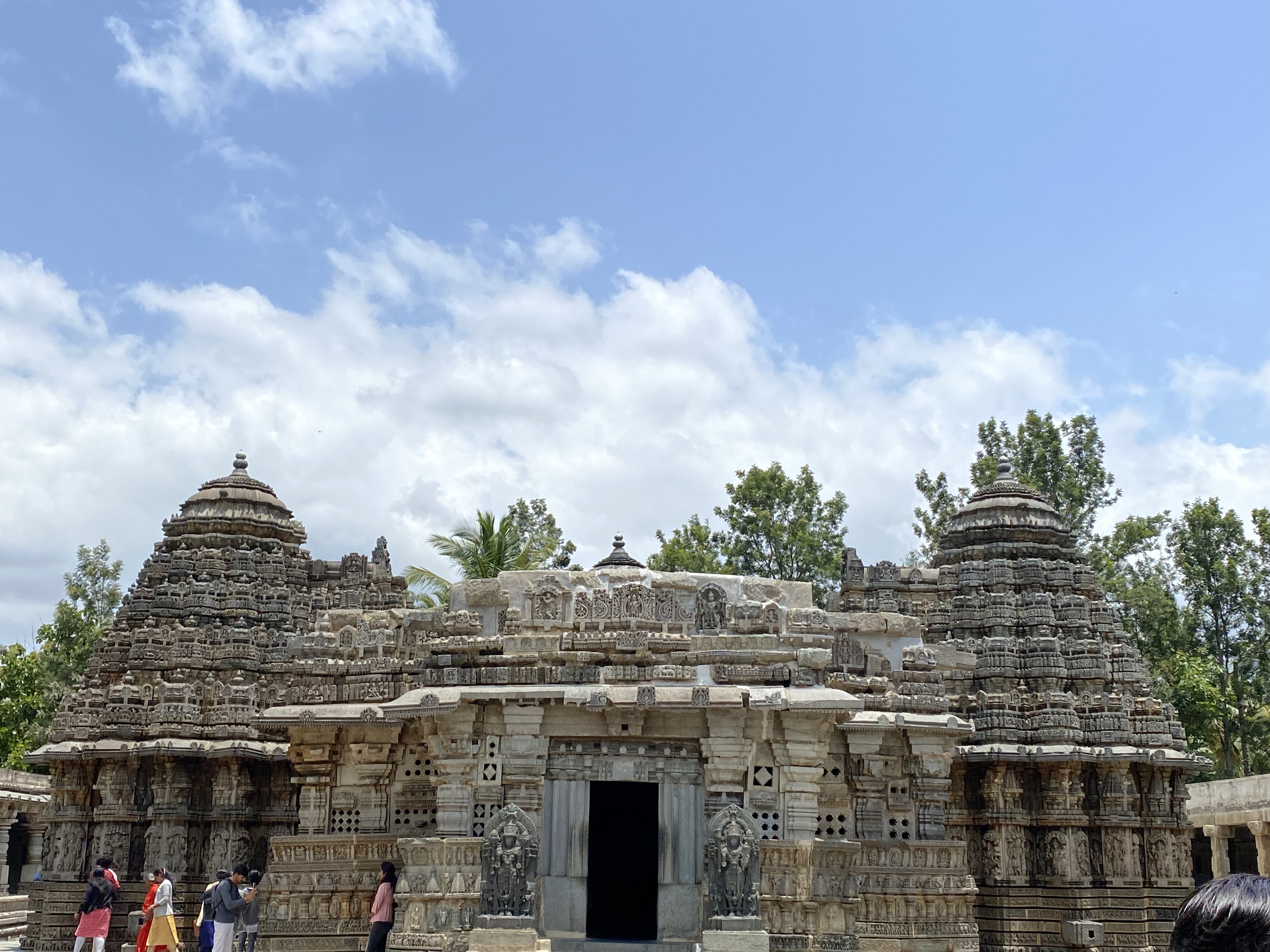 |
| East facade |
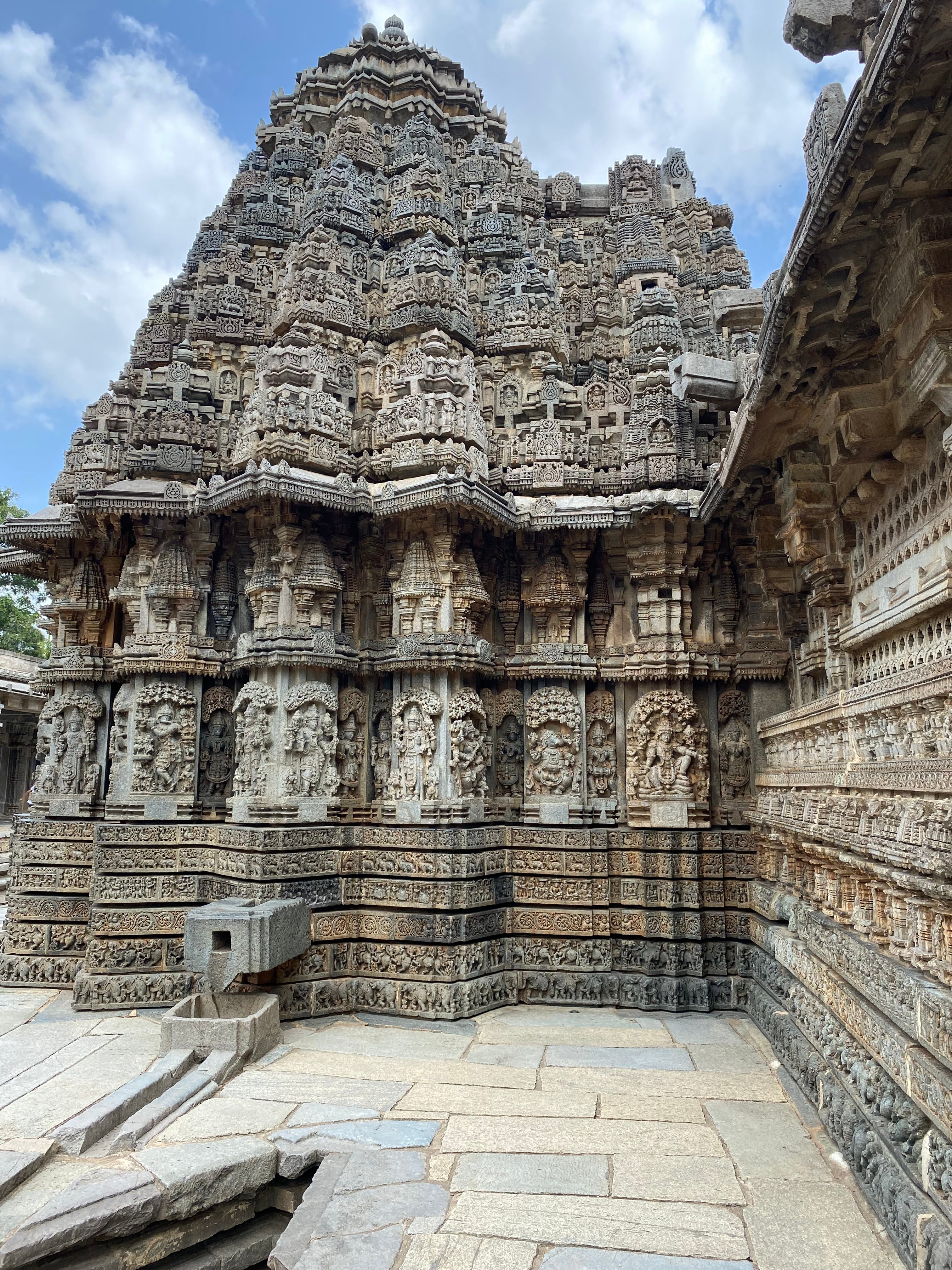 |
| South Vimana |
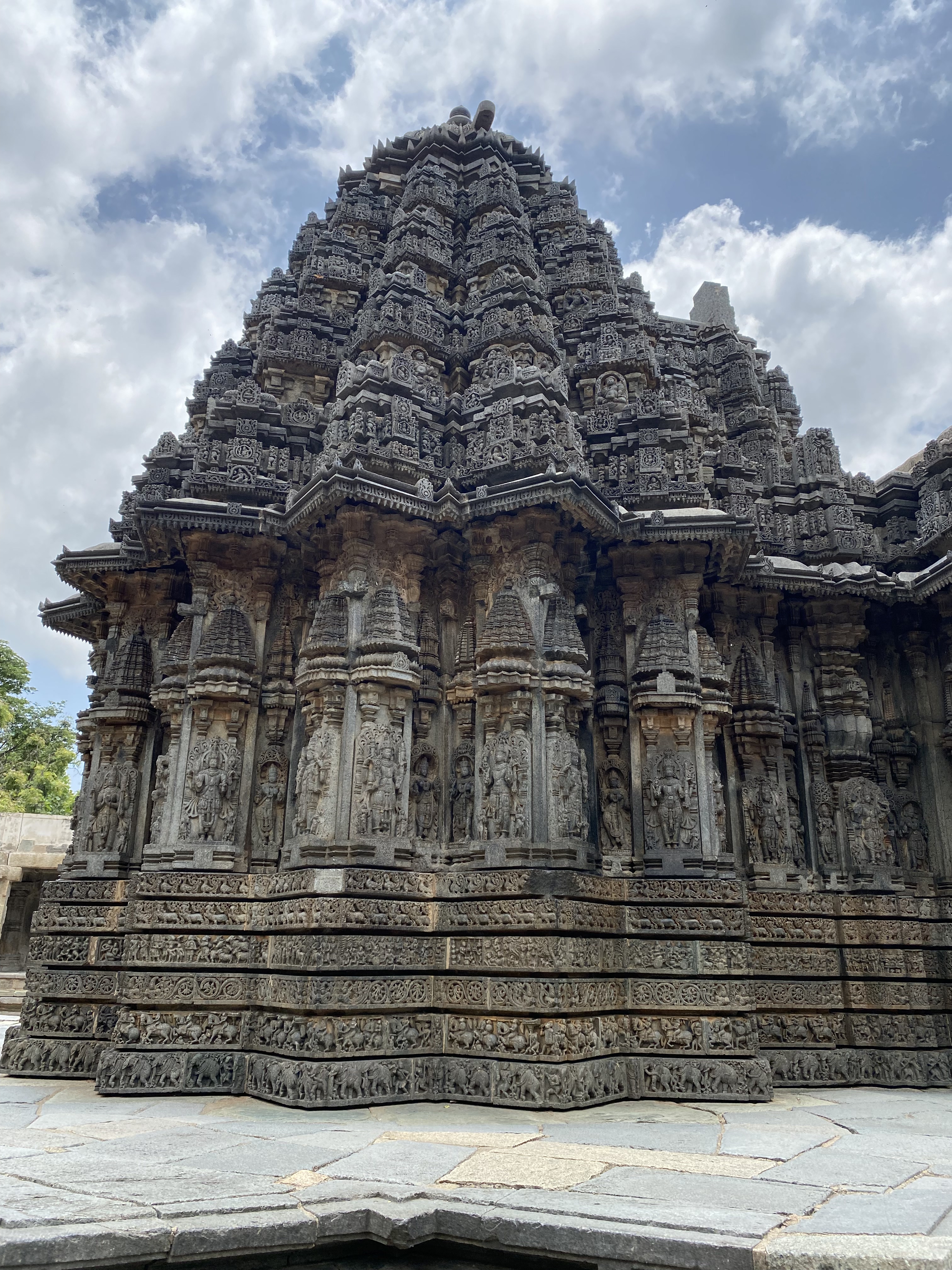 |
| West Vimana |
 |
| North Vimana |
The Vimanas are all built in the plan of a 16 pointed star in the shape of a lotus. On top of the Shikhara is a heavy round kalasa. Some of the carvings seen on the Vimanas are that of simhamukha, kirtimuka, makara, yaksha, gandharva etc
 |
| Adisthana & Jangha |
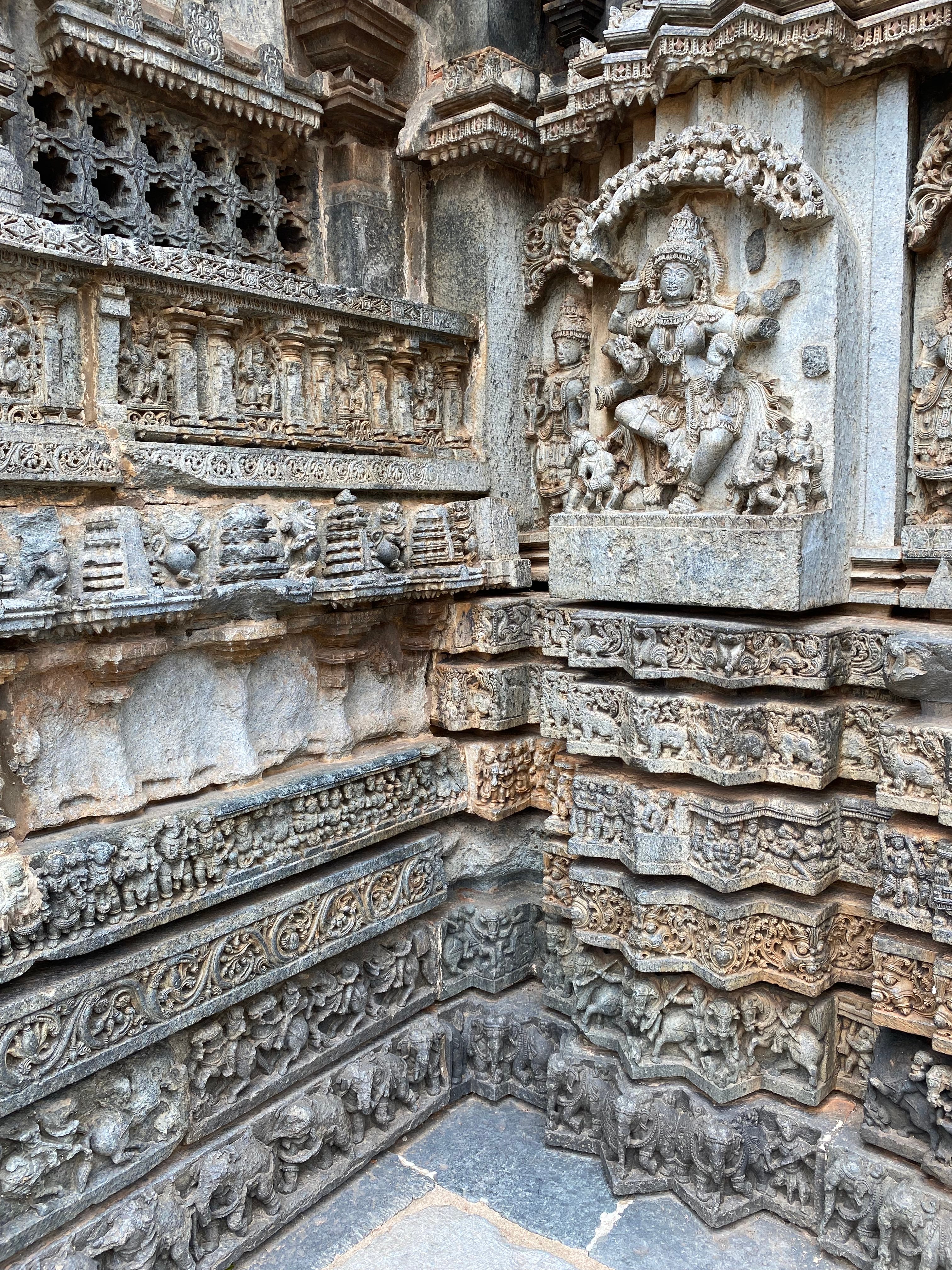 |
| North side Adisthana & Jangha |
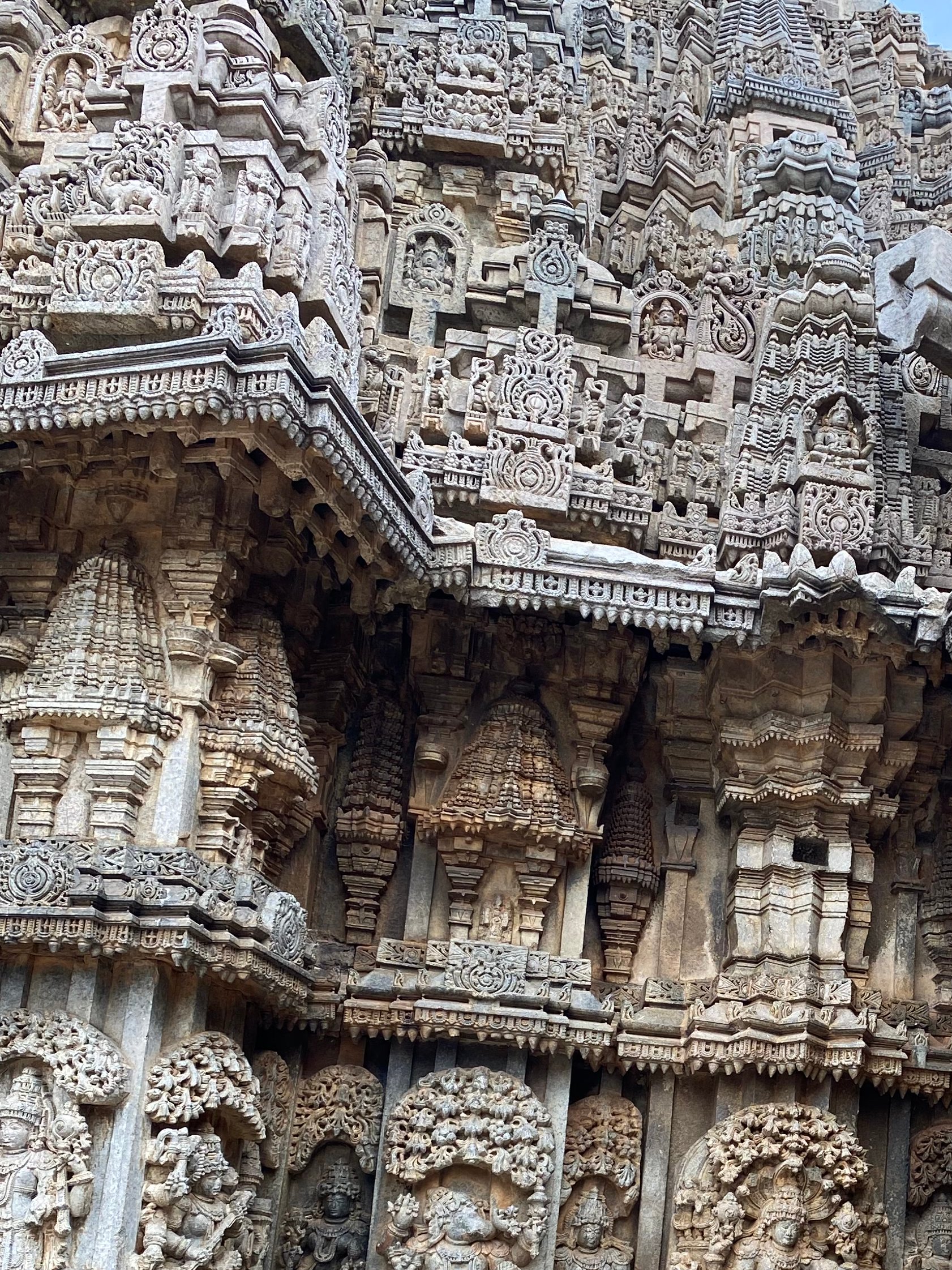 |
| Urdhvajanga |
 |
| Asanapatta & Kakshasana |
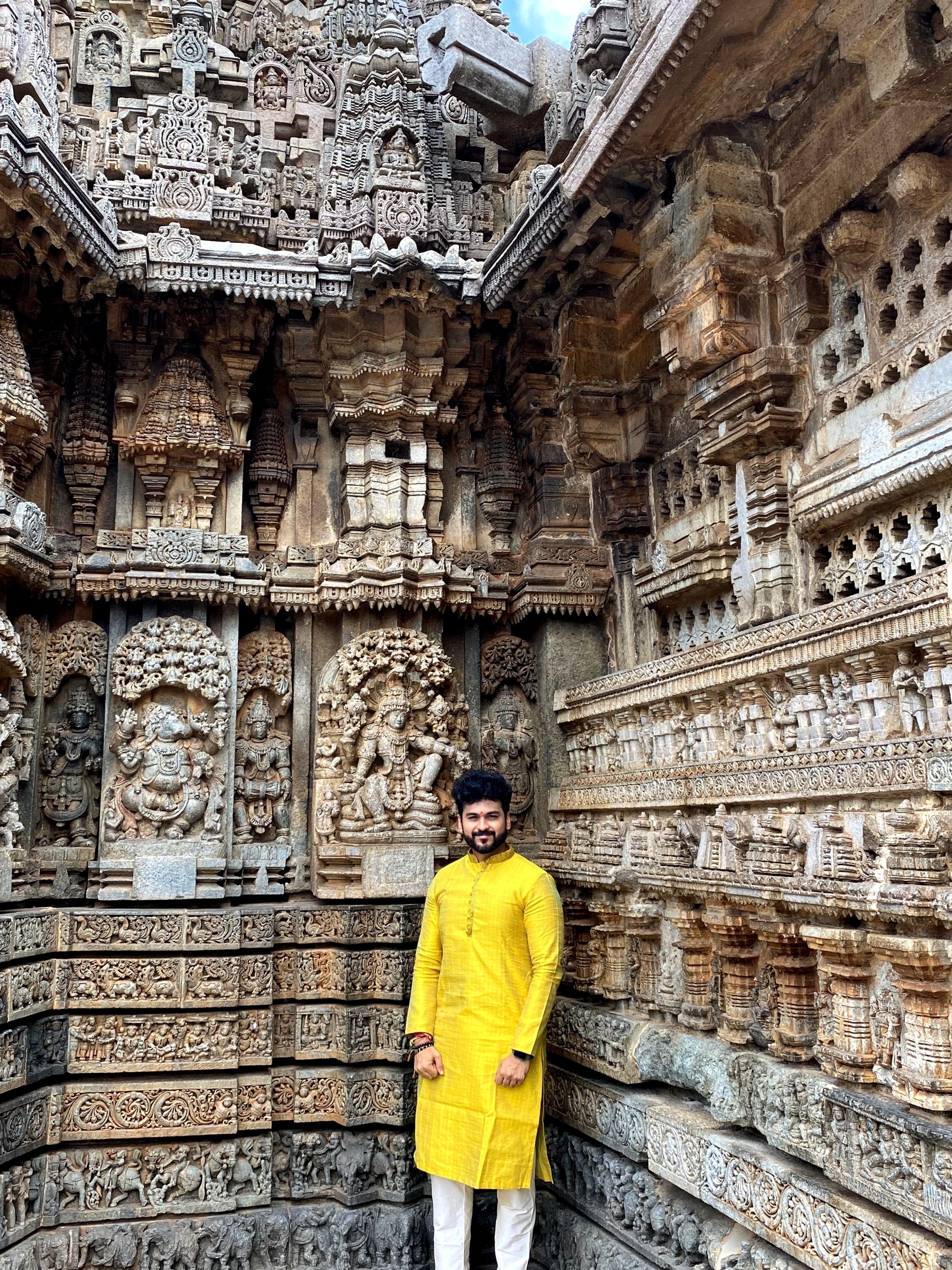 |
| Myself at the Temple |
I would like to conclude this post by expressing my deepest gratitude to my Mother, who has been a constant source of support and encouragement. She has been instrumental in my journey to decipher these carvings. Her profound knowledge of the Puranas, Itihasa & Shastras not only inspired me, but also guided my understanding, making this endeavour all the more enriching. Thank you all for reading the post.




























































































































